JOLLY
ALL THAT BAZ
As Baz Luhrmann lights up cinemas with Elvis, take a deep dive with the iconic filmmaker through his dazzling career

DECEMBER 21, 2022 OSCAR PREVIEW DEADLINE.COM/AWARDSLINE
ENGLISH: BILL NIGHY IS LIVING WITH BOWLER HATS SEX AND VIOLINS: CATE BLANCHETT & NINA HOSS GET CLASSICAL PLUS: THE DANIELS + GINA PRINCE-BYTHEWOOD + S.S. RAJAMOULI + LAURA POITRAS + EDWARD BERGER
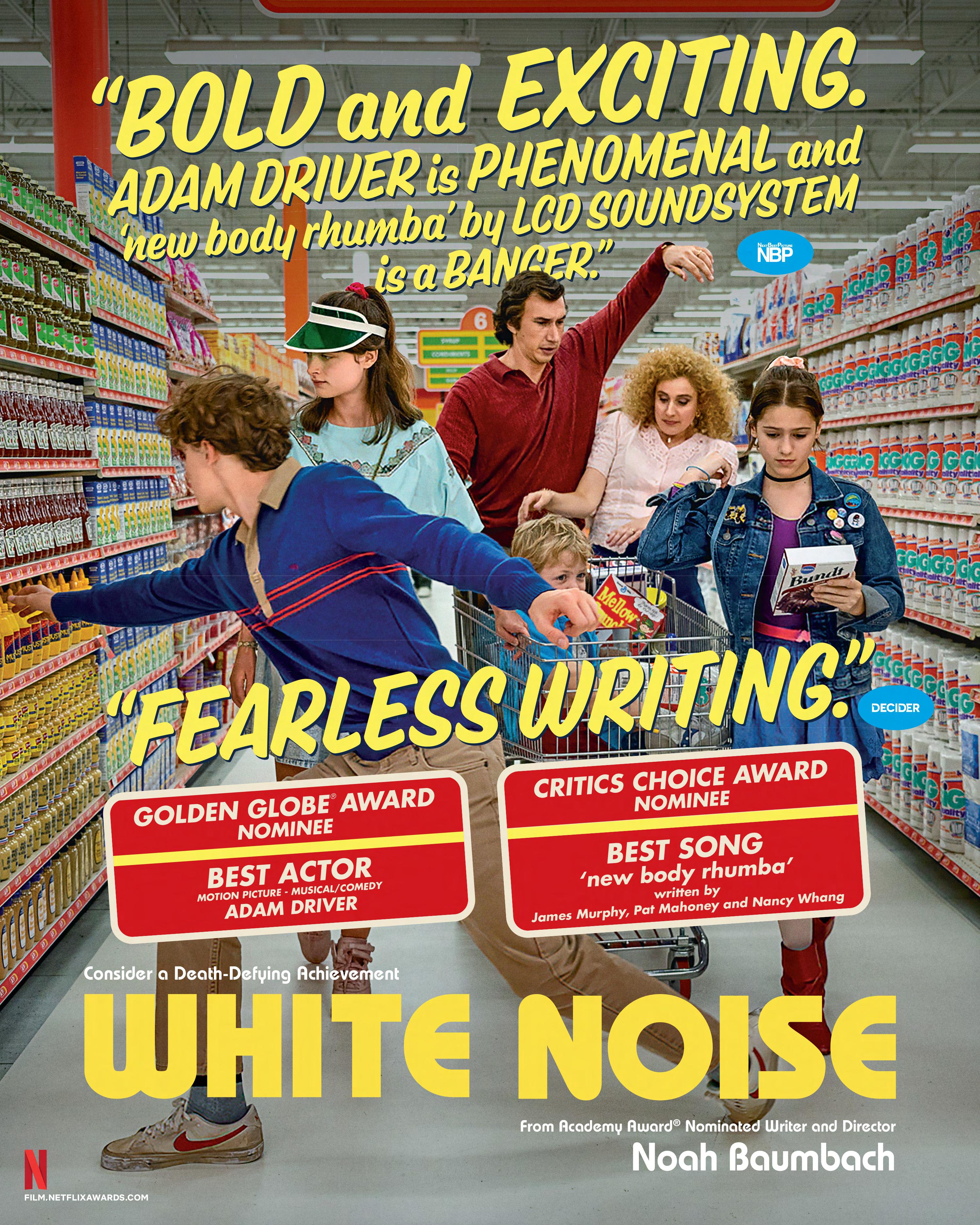
CO-EDITORS-IN-CHIEF
COLUMNIST
EDITORIAL
DEADLINE.COM
Breaking News Follow Deadline.com 24/7 for the latest breaking news in entertainment.
Sign up for Alerts & Newsletters
Sign up for breaking news alerts and other Deadline newsletters at: deadline.com/newsletters
VIDEO SERIES
The Actor’s Side Meet some of the biggest and hardest working actors of today, who discuss their passion for their work in film and television. deadline.com/vcategory/theactors-side/
Behind the Lens
Explore the art and craft of directors from first-timers to veterans, and take a unique look into the world of filmmakers and their films. deadline.com/vcategory/ behind-the-lens/
The Film That Lit My Fuse
Get an insight into the creative ambitions, formative influences, and inspirations that fuelled today’s greatest screen artists. deadline.com/vcategory/thefilm-that-lit-my-fuse/
PODCASTS
20 Questions on Deadline
Antonia Blyth gets personal with famous names from both film and television. deadline.com/tag/ 20-questions-podcast/
Scene 2 Seen
Valerie Complex offers a platform for up-and-comers and established voices. deadline.com/tag/ scene-2-seen-podcast/
Crew Call
Anthony D’Alessandro focuses on the contenders in the belowthe-line categories. deadline.com/tag/ crew-call-podcast/
SOCIAL MEDIA
Follow Deadline
Facebook.com/Deadline Instagram.com/Deadline Twitter.com/Deadline YouTube.com/Deadline TikTok.com/@Deadline
CHAIRMAN & CEO Jay Penske
VICE CHAIRMAN Gerry Byrne
CHIEF OPERATING OFFICER George Grobar
CHIEF ACCOUNTING OFFICER Sarlina See
CHIEF DIGITAL OFFICER Craig Perreault
EXECUTIVE VICE PRESIDENT, BUSINESS AFFAIRS & CHIEF LEGAL OFFICER Todd Greene
EXECUTIVE VICE PRESIDENT, OPERATIONS & FINANCE Paul Rainey
EXECUTIVE VICE PRESIDENT, OPERATIONS & FINANCE Tom Finn
EXECUTIVE VICE PRESIDENT, PRODUCT & ENGINEERING Jenny Connelly
MANAGING DIRECTOR, INTERNATIONAL MARKETS Debashish Ghosh
SENIOR VICE PRESIDENT, SUBSCRIPTIONS David Roberson
SENIOR VICE PRESIDENT, DEPUTY GENERAL COUNSEL Judith R. Margolin
SENIOR VICE PRESIDENT, FINANCE Ken DelAlcazar
SENIOR VICE PRESIDENT, HUMAN RESOURCES Lauren Utecht
SENIOR VICE PRESIDENT, BUSINESS DEVELOPMENT Marissa O’Hare
SENIOR VICE PRESIDENT, CREATIVE Nelson Anderson
SENIOR VICE PRESIDENT, LICENSING & BRAND DEVELOPMENT Rachel Terrace
VICE PRESIDENT, ASSOCIATE GENERAL COUNSEL Adrian White
VICE PRESIDENT, HUMAN RESOURCES Anne Doyle
VICE PRESIDENT, REVENUE OPERATIONS Brian Levine
HEAD OF INDUSTRY, CPG AND HEALTH Brian Vrabel
VICE PRESIDENT, PUBLIC AFFAIRS & STRATEGY Brooke Jaffe
HEAD OF INDUSTRY, FINANCIAL SERVICES Carla Dodds
HEAD OF INDUSTRY, TECHNOLOGY Cassy Hough
VICE PRESIDENT, SEO Constance Ejuma
VICE PRESIDENT & ASSOCIATE GENERAL COUNSEL Dan Feinberg
HEAD OF LIVE EVENT PARTNERSHIPS Doug Bandes
VICE PRESIDENT, AUDIENCE MARKETING & SPECIAL PROJECTS Ellen Deally
VICE PRESIDENT, GLOBAL TAX Frank McCallick
VICE PRESIDENT, TECHNOLOGY Gabriel Koen
VICE PRESIDENT, E-COMMERCE Jamie Miles
HEAD OF INDUSTRY, TRAVEL Jennifer Garber
VICE PRESIDENT, ACQUISITIONS & OPERATIONS Jerry Ruiz
VICE PRESIDENT, PRODUCTION OPERATIONS Joni Antonacci
VICE PRESIDENT, FINANCE Karen Reed
VICE PRESIDENT, INFORMATION TECHNOLOGY Kay Swift
HEAD OF TALENT Marquetta Moore
HEAD OF AUTOMOTIVE INDUSTRY Matthew Cline
VICE PRESIDENT, STRATEGIC PLANNING & ACQUISITIONS Mike Ye
VICE PRESIDENT, PRODUCT DELIVERY Nici Catton
VICE PRESIDENT, CUSTOMER EXPERIENCE & MARKETING OPERATIONS Noemi Lazo
VICE PRESIDENT, ASSOCIATE GENERAL COUNSEL Sonal Jain
VICE PRESIDENT, MARKETING & PORTFOLIO SALES Stephanie Parker
VICE PRESIDENT, ASSOCIATE GENERAL COUNSEL
Victor Hendrickson
DEADLINE
HOLLYWOOD IS OWNED AND PUBLISHED BY PENSKE MEDIA CORPORATION
Nellie Andreeva (Television) Mike Fleming Jr. (Film)
COLUMNIST & CHIEF FILM CRITIC Pete Hammond
AWARDS
& INTERNATIONAL EDITOR-AT-LARGE
Baz Bamigboye
EDITOR
EXECUTIVE MANAGING
Patrick Hipes
EDITOR
EDITOR, LEGAL & TV CRITIC Dominic Patten
MANAGING EDITOR Denise Petski
EDITOR Erik Pedersen
MANAGING EDITOR Tom Tapp TELEVISION EDITOR Peter White INTERNATIONAL EDITOR Andreas Wiseman BUSINESS EDITOR Dade Hayes EDITOR-AT-LARGE Peter Bart FILM CRITIC & COLUMNIST Todd McCarthy EXECUTIVE EDITOR Michael Cieply
FILM WRITER Justin Kroll CO-BUSINESS EDITOR Jill Goldsmith LABOR EDITOR David Robb
EDITOR
Goodfellow FILM REPORTER Matt Grobar INTERNATIONAL FILM REPORTER Zac Ntim TELEVISION REPORTER Katie Campione NIGHTS AND WEEKENDS EDITOR Armando Tinoco PHOTO EDITOR Robert Lang PRESIDENT Stacey Farish EXECUTIVE AWARDS EDITOR Joe Utichi VICE PRESIDENT, CREATIVE Craig Edwards SENIOR AWARDS EDITOR Antonia Blyth TELEVISION EDITOR Lynette Rice FILM EDITOR Damon Wise DOCUMENTARY EDITOR Matthew Carey CRAFTS EDITOR Ryan Fleming PRODUCTION EDITOR David Morgan EDITORIAL ASSISTANT Destiny Jackson DIRECTOR, SOCIAL MEDIA Scott Shilstone DIRECTOR, EVENTS Sophie Hertz DIRECTOR, BRAND MARKETING Laureen O’Brien EVENTS MANAGER Allison DaQuila VIDEO MANAGER David Janove VIDEO PRODUCERS Benjamin Bloom Jade Collins Shane Whitaker DESIGNERS Catalina Castro Grant Dehner SOCIAL MEDIA COORDINATOR Natalie Sitek EVENTS COORDINATOR Dena Nguyen DESIGN/PRODUCTION COORDINATOR Paige Petersen CHIEF PHOTOGRAPHER Michael Buckner SENIOR VICE PRESIDENT, ASSOCIATE PUBLISHER Kasey Champion SENIOR VICE PRESIDENT, GLOBAL BUSINESS DEVELOPMENT & STRATEGIC PARTNERSHIPS Céline Rotterman VICE PRESIDENT, ENTERTAINMENT Caren Gibbens VICE PRESIDENT, INTERNATIONAL SALES Patricia Arescy VICE PRESIDENT, SALES & EVENTS Tracy Kain SENIOR DIRECTOR, ENTERTAINMENT Brianna Corrado DIRECTOR, ENTERTAINMENT London Sanders DIRECTOR, DIGITAL SALES PLANNING Letitia Buchan SENIOR DIGITAL ACCOUNT MANAGER Cherise Williams SALES PLANNERS Luke Licata Kristen Stephens SALES ASSISTANT Daryl Jeffery PRODUCTION DIRECTOR Natalie Longman DISTRIBUTION DIRECTOR Michael Petre PRODUCTION MANAGER Andrea Wynnyk
DIRECTOR & BOX OFFICE
Anthony D’Alessandro SENIOR
SENIOR
MANAGING
DEPUTY
SENIOR
POLITICAL
Ted Johnson INTERNATIONAL TELEVISION EDITOR Max Goldbart INTERNATIONAL FEATURES EDITOR Diana Lodderhose INTERNATIONAL BOX OFFICE EDITOR & SENIOR CONTRIBUTOR Nancy Tartaglione INTERNATIONAL TELEVISION CO-EDITOR Jesse Whittock ASSOCIATE EDITOR & FILM WRITER Valerie Complex ASSOCIATE EDITORS Greg Evans Bruce Haring CONTRIBUTING EDITOR, ASIA Liz Shackleton SENIOR TELEVISION REPORTER Rosy Cordero SENIOR INTERNATIONAL FILM CORRESPONDENT Melanie
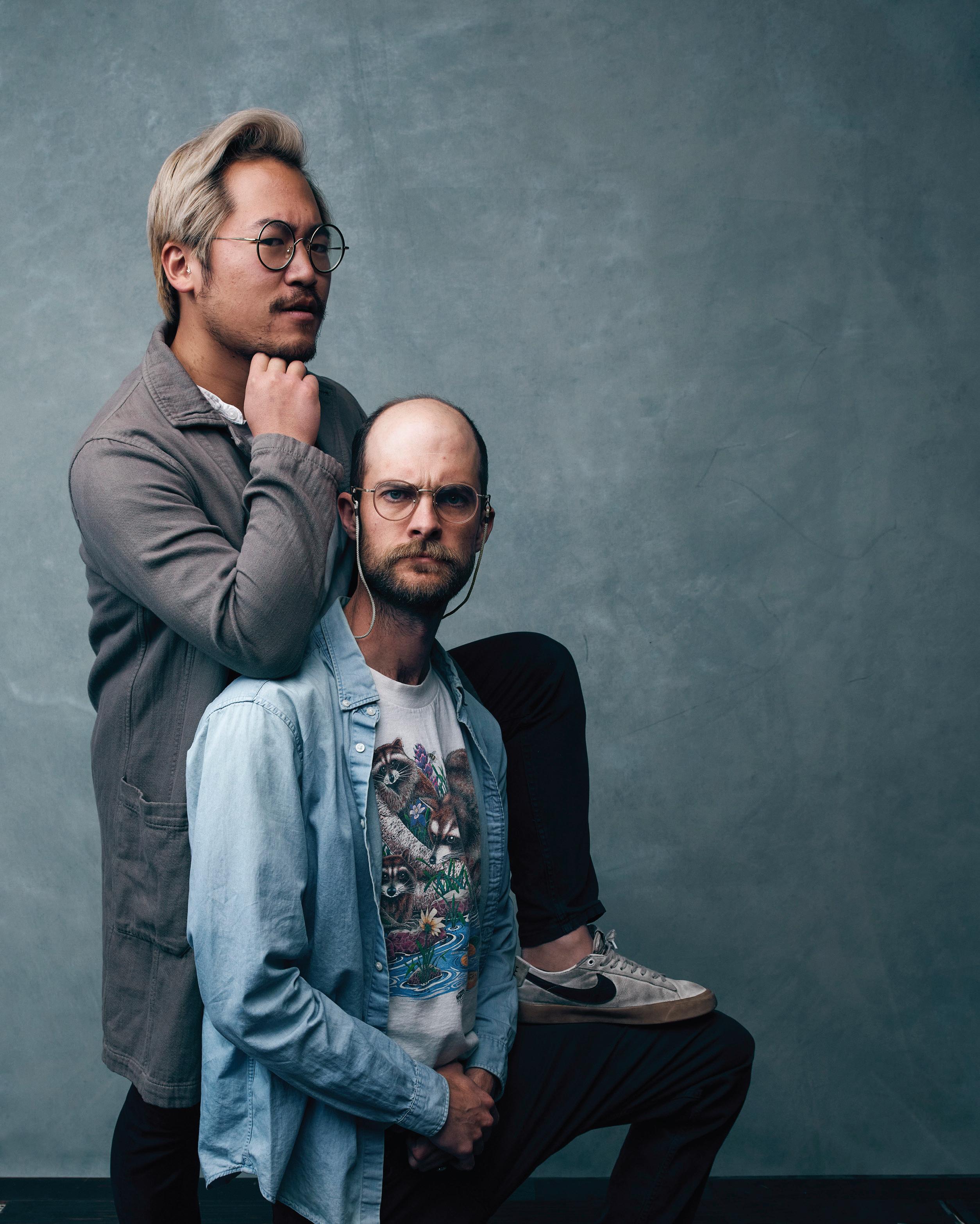
First Take 4 BILL NIGHY: The lanky louche lounge lizard that literally loves Living 8 QUICK SHOTS: Cutting to the chase in Top Gun: Maverick and giving White Noise a coat of many colors. 10 ANIMATION: By hand or computer, it’s the luck of the draw. 14 ON MY SCREEN: Black Panther’s Danai Gurira shares the power of ‘no’ and the happiness of Ghanaian palm wine. Cover Story 16 KING OF BAROQUE: Baz Luhrmann talks about the wonder of Elvis Presley and takes a look back at his own flamboyant filmography. Dialogue 26 THE DANIELS 28 GINA PRINCE-BYTHEWOOD 32 S.S. RAJAMOULI 36 LAURA POITRAS 40 EDWARD BERGER Craft Services 44 INFINITY WARDROBE: Three designers on their greatest capes in The Batman, Black Panther: Wakanda Forever and Thor: Love and Thunder. The Small Screen 48 NEW TV: The Patient’s Domhnall Gleeson, plus Niecy Nash from Dahmer - Monster: The Jeffrey Dahmer Story. The Partnership 50 CATE BLANCHETT & NINA HOSS: The Tár stars discuss the unfinished sympathies of Todd Field’s classical music drama. Flash Mob 56 CONTENDERS FILM: Deadline’s conversations at LA3C. ON THE COVER: Baz Luhrmann photographed for Deadline by Josh Telles.
TELLES/DEADLINE CALL SHEET
JOSH
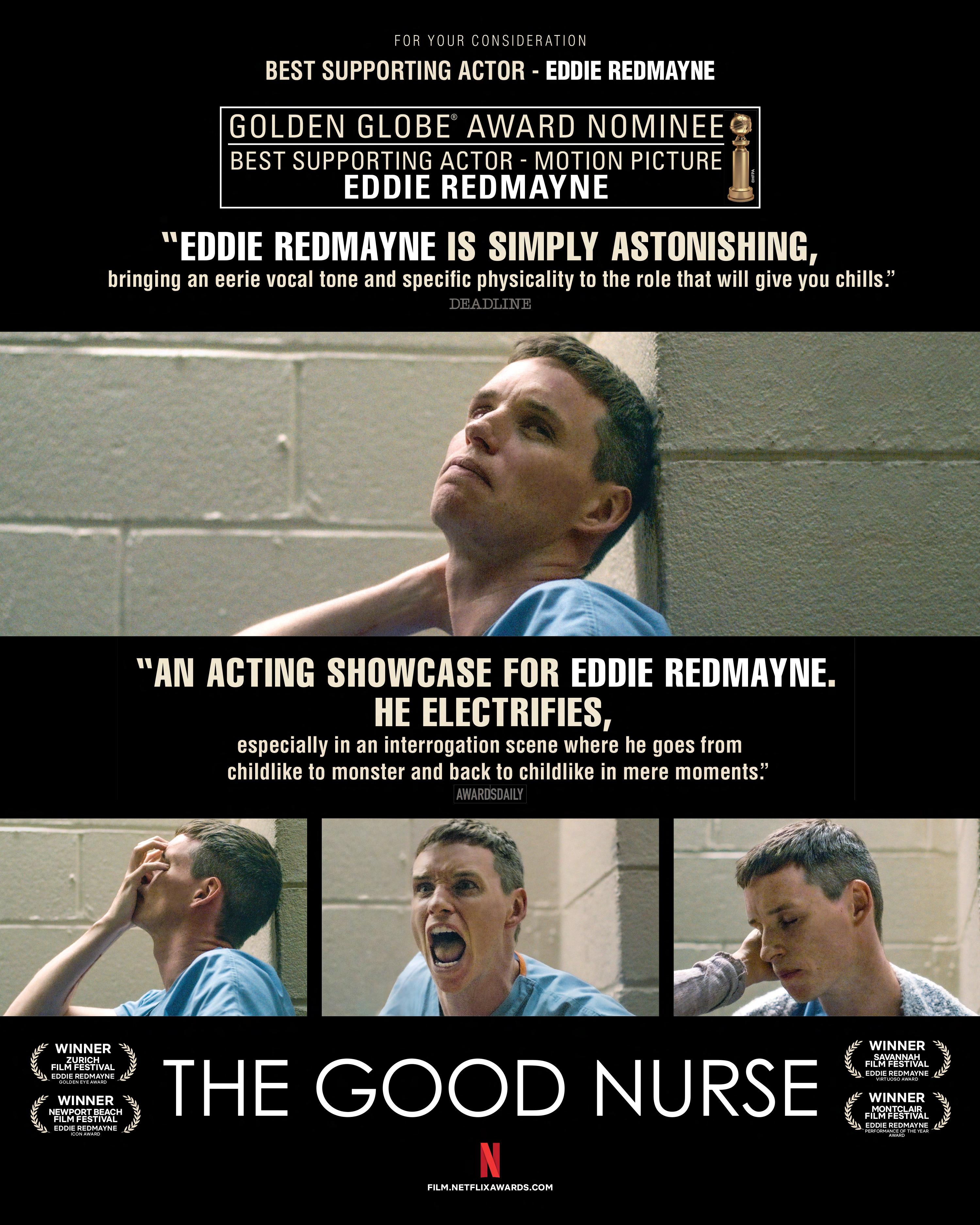
T I A
R K
S E T
THE CAT IN THE BOWLER HAT
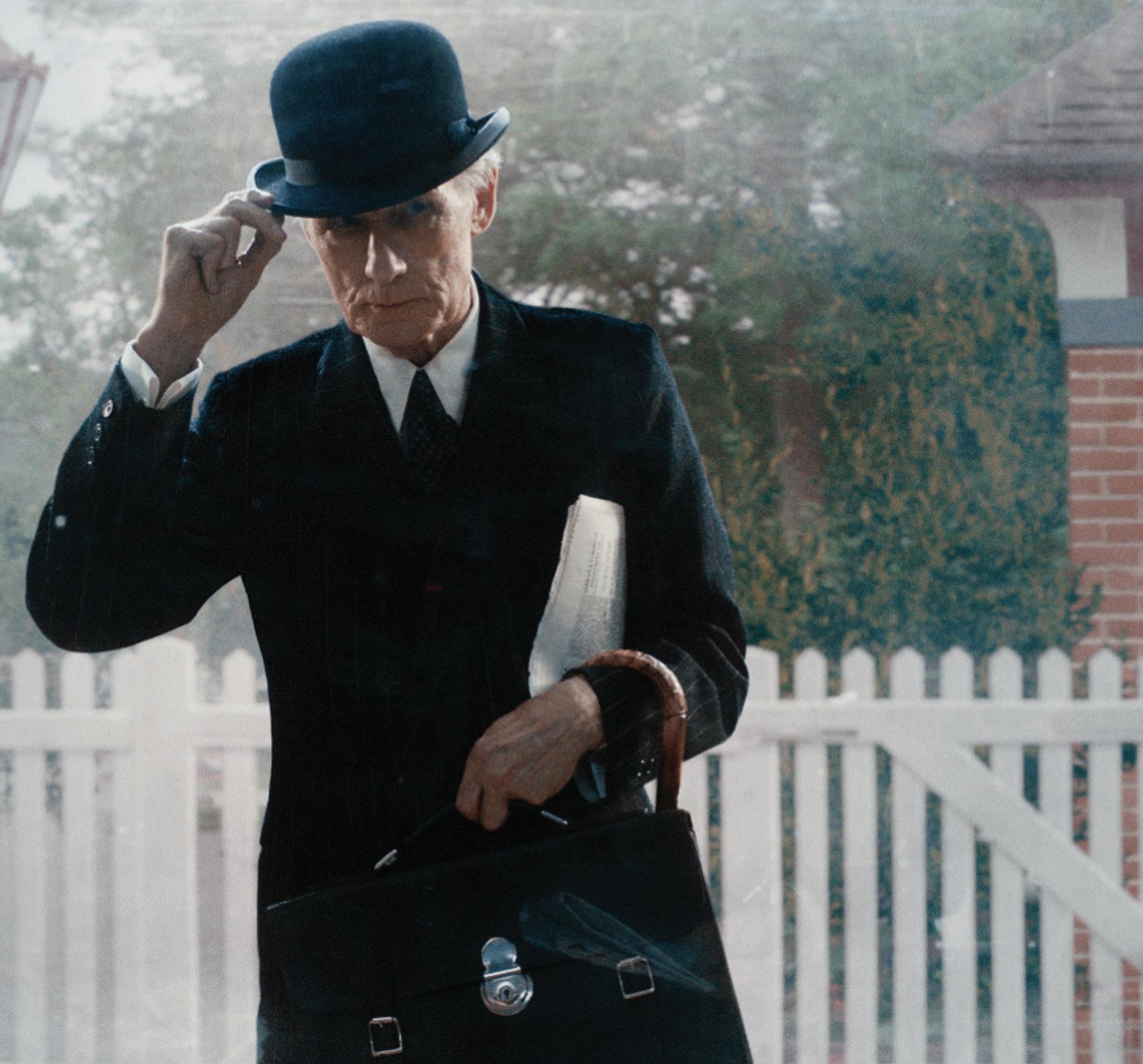 By Damon Wise
By Damon Wise
F
SONY PICTURES CLASSICS/COURTESY EVERETT COLLECTION
QUICK SHOTS 8 | ANIMATED FEATURES 10 | ON MY SCREEN: DANAI GURIRA 14
The laconic British star of Living on taking the scenic route to Hollywood
After some 50 years in the business, Bill Nighy is used to people getting his surname wrong. It actually rhymes with ‘sigh’: the ‘y’ is silent. “My dad was very particular about it,” he says, “and for a while, I used to correct people on his behalf, because he couldn’t bear it when people said ‘Nigh-y’. It really got to him. But I’m very, very accustomed to it. The first time I was ever in a show that was reviewed in a paper, I was Bill Nigby. I’ve been Bill Nighty—that’s a regular one— and if there’s one more than any other, it’s Nighly. It’s funny, when people get things wrong, they don’t get them wrong by simplifying them, they get them wrong by making them more complicated. So, they lengthen my name. It’s always slightly longer than it should be.”
Nighy recently turned 73, and his birthday gift is awards buzz for his role as Mr. Williams in Oliver Hermanus’s Living, a 1953-set remake of Akira Kurosawa’s Ikiru, in which he plays a repressed British bureaucrat diagnosed with a terminal illness. The part was written for him by screenwriter Kazuo Ishiguro, and the actor was thrilled.

“Well, it’s a conspicuously marvelous role,” he says. “You’ve got a man who has dedicated his life to an institution that’s designed to enable procrastination, and then he’s put in an extreme situation that galvanizes him into trying to actually make something happen rather than prevent something from happening. A major part of the appeal
was that I’m interested in the degree of restraint that people required of themselves in the 1950s in England. It’s probably very bad for you, and I’m sure the psychiatric establishment would agree. But there’s something funny about it, and it’s also kind of heroic the way people didn’t trouble each other with their deeper feelings.”
It helped, he says, that Sandy Powell’s wardrobe department gave him a defined look: a period threepiece pinstripe suit. “I like it when I only have one costume,” he says. “I get institutionalized in it, and I like the fact that you don’t have to make any more decisions.”
The headwear, however, was a different matter. “It’s the weirdest item, a bowler hat. And if you’ve ever worn one, you’d know it. They’re very, very heavy—it’s like wearing a crash helmet. Quite what they’re protecting themselves from, I don’t know, but somehow it caught on. I have no idea why, but I don’t think it impeded me in the role in any way because it added to his general unease, which was quite useful.”
Nighy began acting at school, but despite encouragement from his drama teacher, he didn’t ever really see it as a career. “It wasn’t like now,” he says, “where people know about being an actor. There wasn’t so much
coverage in those days.” The way he puts it, his interest was “just one long exercise in displacement activity”: all his heroes were mostly writers or musicians. “Like every second child who’s read a book, I thought, ‘Oh, I could do that.’ And it turned out I didn’t have the courage or the resolve to be a writer.”
Instead, he drifted into drama school. “And even then, I thought, ‘Well, I’ll just do a couple years here, then I’ll work out what I really want to do.’ But then I got a job in a theater, painting sets. In those days, you could do jobs like that. It was very good. You could watch other actors, and that’s when I started to learn. I didn’t learn anything at drama school, apart from how to deal with being very, very nervous because it was always very alarming to me, standing in front of a load of people and acting.”
After a successful stint in regional theater, Nighy came to London in the late ’70s and made his big-screen debut as a delivery boy in 1979’s The Bitch, starring Joan Collins. All that comes to mind these days is the line, “Flowers for Mrs. Salmon!” and the fee.
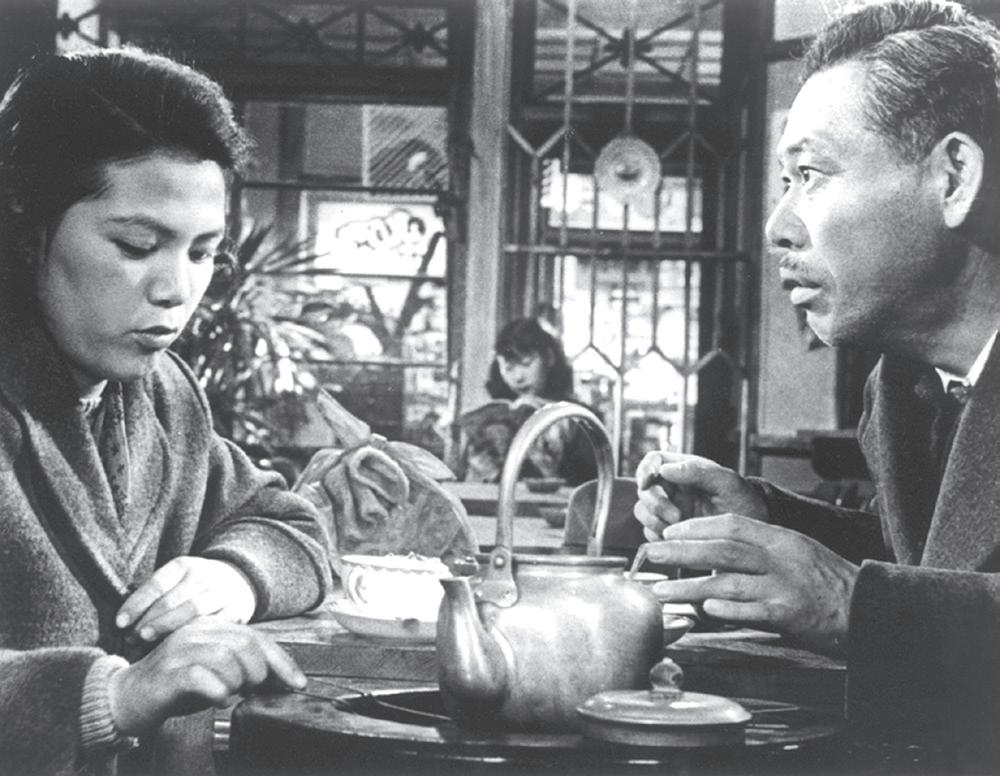
“They gave me 150 quid,” he says. “It’s funny what you remember.”
After that, he played five journalists on the trot, and he credits
DEADLINE.COM/ AWARDSLINE 5
Left, Akira Kurosawa’s Ikiru; below, Aimee Lou Wood and Bill Nighy in Living.
his agent, Pippa Markham, with keeping him afloat in the industry. “She was clever enough to send me out for what would be called character roles,” he says. “I wasn’t comfortable with what I was supposedly eligible for, which was to be a young leading man, and that was a pretty competitive field. I had no sense of myself as romantic, or desirable, or anything of that kind. I didn’t realize that you didn’t have to be it; you just had to act it. And I was terrible at auditioning. I used to get too nervous, so if I had an accent to do or just something to occupy me, I had a better chance of getting the job.”

The actor came to a crossroad his career with 1998’s Still Crazy, in which he appears as aging rock singer Ray Simms. The audition was held at 9 a.m. in a disused tax office somewhere near Pinner, where Nighy was confronted by his biggest fear: a karaoke machine. “When karaoke was inaugurated, I made a vow that, whatever the weather, I would never ever be in front of a karaoke machine. It’s my nightmare.”
On top of that, he had to wear flared velvet loon pants, a top that left his midriff exposed, and four-inch platform shoes. “I was 46,” he says, “and they put me in hair extensions. There was just me, the director and the cameraman. They gave me a microphone stand and… guess what? I had to sing karaoke to ‘Smoke on the Water’ by Deep Purple. I had two choices: leave the building and say, ‘I can’t do this,’ or simulate sex with the mic stand. Which is what I did. I saw the cameraman’s shoulders wobble because he was laughing so hard, and that made all the difference.”
Ray Simms revealed a dryly funny, self-satirizing side of Nighy that led directly to his most famous role, as pop star Billy Mack in Richard Curtis’s Love Actually in 2003, and it’s about this time that words like “louche” start popping up in his press cuttings. A lot. “All the words that seem to describe me begin with L,”
he says. “There’s louche, lanky—obviously—languid, laidback… ” He laughs. “Try taking a wander through my head and see if I’m laidback!” Perhaps the best description, though, came from comedian Billy Connolly. “He said I had rock and roll legs, which I was very flattered by.”
Love Actually opened the door to Hollywood, leading to a call from Gore Verbinski asking him if would play the amphibious villain Davy Jones in Pirates of the Caribbean: Dead Man’s Chest. Nighy was reluctant, but Verbinski was insistent. “Come on,” said the director, “how many times do you get to be in a pirate movie?”
The biggest problem was that Nighy didn’t know a thing about motion capture. “They showed me pictures of the octopus man, and it was the scariest thing on the ocean waves,” he recalls. “Then they handed me a pair of computer pajamas and put 250 dots all over my face. Johnny Depp and Orlando Bloom were there, looking like gods, and I looked like somebody who didn’t get into Devo. It was pretty sad. But I’m quite proud of myself. I spent those first couple of days wandering about with white bobbles all over my pajamas and all over my face and a skull cap with a bobble on the top, and I didn’t run to the airport.”
For most of his career, Nighy has done theater in tandem with his film work, although he hasn’t been on the stage since 2015. “I’ve done a lot of it,” he says, “but I don’t know that I’ll do any more. But then, I say that every time. Every first night I stand in the wings saying the same thing: ‘This must never, ever be allowed to happen again.’ But once you get going, and if the wind is behind you, it can be a bit marvelous. And you get a kind of instant reaction, especially if it’s funny. I only do plays with jokes in; I think it’s vulgar to invite people to sit in the dark for two hours and not tell them a joke.”
Is there anything left for him to conquer? “I don’t think like that,” he says. “I’ve never thought like that. When I was younger, people used to say, ‘Are there any roles you’d burn to play?’ No, I don’t burn to play anything. I don’t burn to act. I remember when I was starting out hearing two things that I thought instantly disqualified me. One was that somebody asked Laurence Olivier, ‘What’s the major requirement for being an actor?’ and he said, ‘100 percent confidence.’ I thought, ‘Well, I have zero confidence, so that counts me out.’ And then I read that Rod Steiger once said, ‘You have to burn to act. If you don’t burn, don’t act.’ Well, I’ve never burned, Rod, so I can’t.” ★
6 DEADLINE.COM/ AWARDSLINE FT CLOSE-UP SONY PICTURES CLASSICS
Nighy as Mr. Williams in Living

Cut for Time
How editor Eddie Hamilton wove together “punchy, exciting” sequences for Top Gun: Maverick
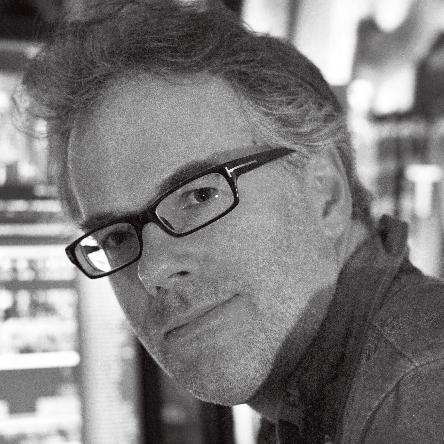

Top Gun: Maverick follows Maverick (Tom Cruise) as he returns to the Top Gun flight school to prepare a new class of pilots for a dangerous mission. For this sequel, the filmmakers gave editor Eddie Hamilton the challenge of compressing more than 800 hours of footage into a movie just over two hours. “It was quite honestly very overwhelming
to create simulated storyboards of what the final sequences would look like. “Quite often we would have these model jets on wooden sticks,” he says, “and we would literally move the jets around and film them with our phones… It was very hard to watch for ages, and it required a lot of imagination.”
Once the exteriors of the jets were shot, Hamilton needed to search through the footage to piece together the final product, which involved a lot of cutting. “The first dogfight scene, where Maverick’s shooting the pilots down and they’re doing the pushups, started out at about 15 minutes long,” says Hamilton. “In the finished movie,
Tom Cruise in Top Gun: Maverick at times,” he says. “There was one day when they had 27 cameras running because there were four jets up in the air with various cameras on them.” Since the interior shots were filmed months prior to the exteriors, Hamilton needed
it’s like four minutes and 50 seconds, so you can imagine it just got compressed and compressed, so only the very best shots were left at the end. We always wanted it to be this kind of punchy, exciting, dynamic, fun, entertaining sequence.”
Ryan Fleming
Visible Spectrum
Production designer Jess Gonchor on using a “Rubik’s Cube” of color for White Noise
The story of White Noise focuses on a family’s everyday life after a toxic chemical spill forces them to face their mortality. Production
designer Jess Gonchor added a vibrancy to the setting to juxtapose the fear of death prevalent in the film. One setting used to achieve that was the supermarket, which also highlighted American consumerism in the ’80s. “It was filled with things that had shelf life and longevity, and bright colors and graphics,” he says. “That was the ‘life’ that counteracted with every-
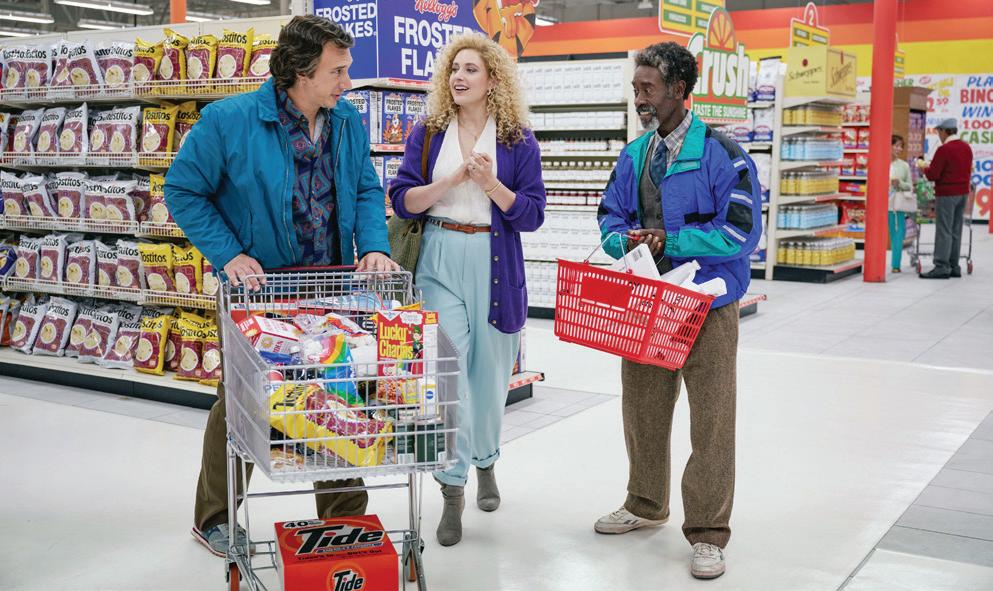
body’s fear of death in the movie.”
While Gonchor usually sticks to a few colors in his designs, he says he drew inspiration from the “simplicity and the color” of the Rubik’s Cube for this project. “All the primary colors are there,” he says, “and when you mix it up, it’s graphic and colorful in a way that was such a huge thing in the ’80s.”
Ryan Fleming
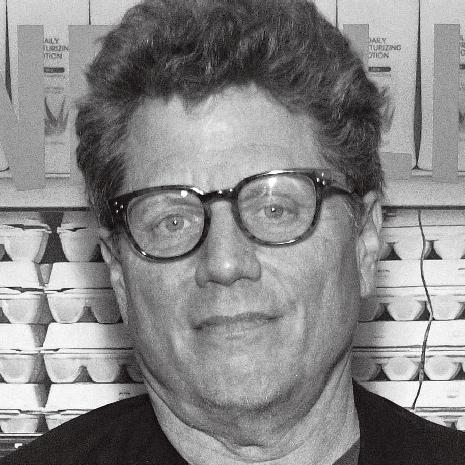
Charted Territory
At press time, here is how Gold Derby’s experts ranked the Oscar chances in the Director and Animated Feature races. Get up-to-date rankings and make your own predictions at GoldDeby.com.

8 DEADLINE.COM/ AWARDSLINE 1
2
3
4
5
1
2 The
3
4
5
Pinocchio ODDS 82/25
Turning Red ODDS 4/1
Marcel the Shell with Shoes On ODDS 11/2
Puss in Boots: The Last Wish ODDS 17/2
Strange World ODDS 11/1
Stephen Spielberg The Fabelmans ODDS 82/25
Daniels Everything Everywhere All at Once ODDS 5/1
James Cameron Avatar: The Way of Water ODDS 7/1
Martin McDonagh The Banshees of Inisherin ODDS 15/2
Sarah Polley Women Talking ODDS 17/2 Director Animated Feature
FT QUICK SHOTS WILSON WEBB/NETFLIX/PARAMOUNT/COURTESY EVERETT COLLECTION
From left, Adam Driver, Greta Gerwig and Don Cheadle in White Noise

AN ANIMATED DEBATE
By Ryan Fleming
Disney swept the animation category with three nominations last Oscar season, culminating in a win for Encanto. This year, Netflix is coming on strong with more than a few contenders, including Guillermo del Toro’s Pinocchio. DreamWorks Animation is back with a few contenders of its own, while Apple, A24 and GKIDS are seeking their first Oscar win for Best Animated Feature. With only five nominations available, who will go on to compete for the prize?
Walt Disney Studios has a few contenders this year, but their frontrunner is Pixar’s Turning Red. Director Domee Shi revisited her own awkward teen years to create a story of a young girl struggling to please her family as she enters adolescence. Turning Red follows Meilin Lee (Rosalie Chiang), a 13-year-old Chinese Canadian girl from Toronto who works at her family’s temple to make her mother, Ming (Sandra Oh), proud. Due to a family blessing/curse, Mei transforms into a giant red panda whenever she experiences strong emotions, which is less than ideal for a teenager. The film, which marks the first from Pixar to be solely directed by a woman, has received critical acclaim for Shi’s depictions of female friendships and the motherdaughter relationship.
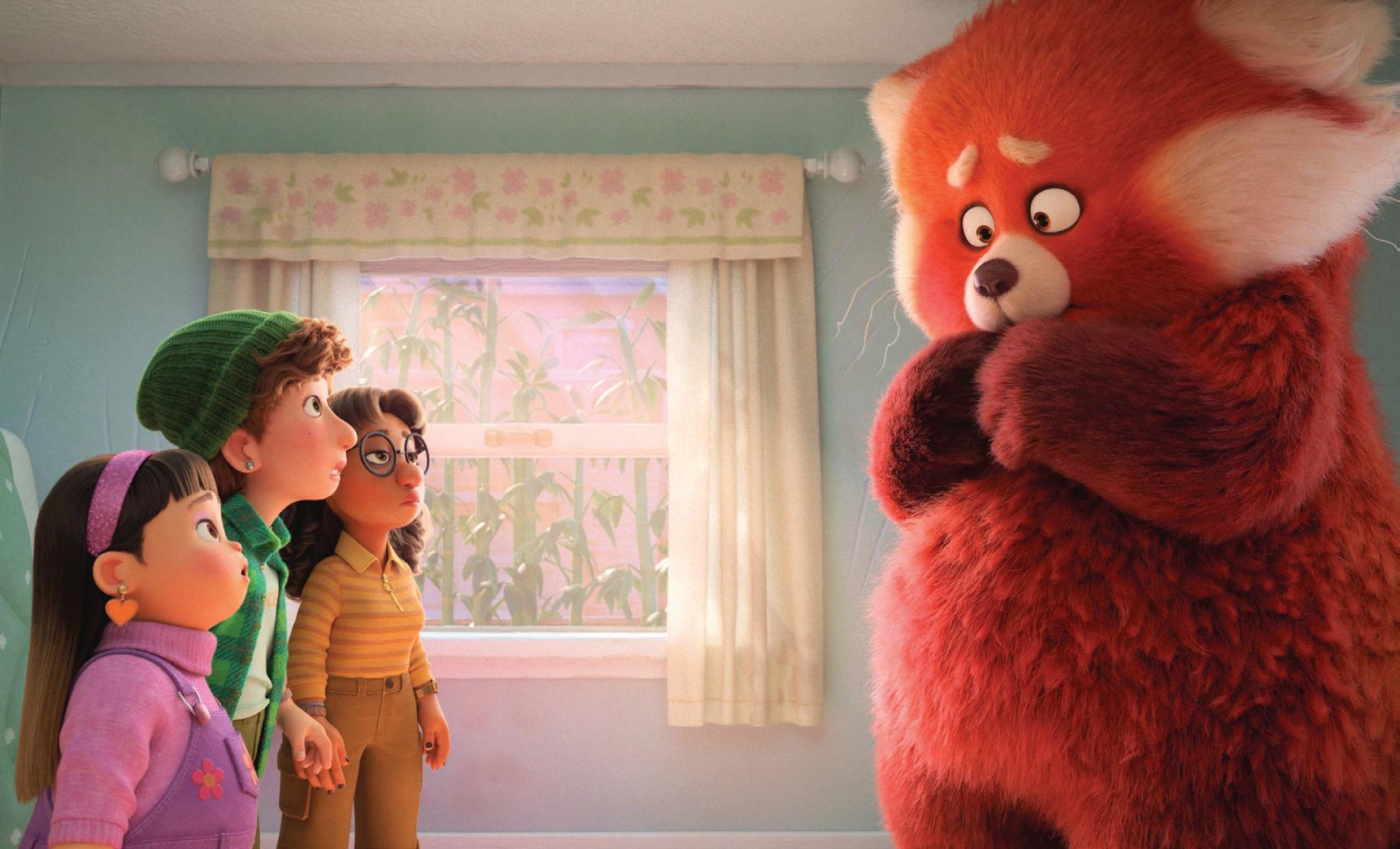
After 25 years of working in Disney animation, director Chris Williams decided that Netflix was the right place to finally make the animated action-adventure he always dreamed of, with The Sea Beast . The film follows Jacob (Karl Urban), a hunter of sea monsters, and Maisie (Zaris-Angel Hator), a young stowaway, as they join the crew of the Inevitable and embark on a hunt for the elusive Red Bluster. After falling overboard during a difficult battle, Jacob and Maisie find themselves stranded on a deserted island surrounded by beasts. The pair soon discover that the beasts are not as sinister as they are rumored to be, which causes Jacob to grapple with the idea of what it truly means to be a hero. Sony Pictures Imageworks, which also animated Netflix’s last nominee The Mitchells vs. the Machines , was challenged by Williams to craft scenes of epic battles between hunters and the beasts on the sea, which is a notoriously difficult setting to animate. The Sea Beast has become Netflix’s most successful animated film to date, with more than 160 million hours viewed.
Netflix’s next competitor is My Father’s Dragon, directed by Nora Twomey and based on the 1948 children’s novel of the same name. The film follows Elmer (Jacob Tremblay), a young boy who helps his mother run a candy shop in their small town. When the store is forced to close, as the town’s population dwindles, he and his mother move to a crowded city where the ensuing hardships lead to a rift in their relationship that causes Elmer to run away. A cat he befriended, voiced by Whoopi Goldberg, tells him of a dragon being kept on Wild Island that could solve all of his problems. On the island, he meets a clumsy and curious Boris the Dragon (Gaten Matarazzo) and the two set out on an adventure to save Wild Island. As opposed to the 3D animation of The Sea Beast, My Father’s Dragon sticks to a 2D storybook style, which has led to positive reviews and popularity among younger viewers.

10 DEADLINE.COM/ AWARDSLINE FT FEATURE
As the competition heats up, which animated feature will bring home the Oscar?
DISNEY STUDIO MOTION PICTURES/COURTESY
COLLECTION
NETFLIX/WALT
EVERETT
The Sea Beast
Turning Red

Guillermo del Toro’s Pinocchio delivers a visually stunning stop-motion adaptation of the Pinocchio fable, reimagining the story in 1930s Italy during the Fascist reign of Benito Mussolini. After the loss of his son Carlo due to an aerial bomb, woodcarver Geppetto (David Bradley) carves a wooden boy from the tree at Carlo’s grave, which has recently become the home of a cricket named Sebastian (Ewan McGregor). A mysterious Wood Sprite (Cate Blanchett) brings the puppet to life, names him Pinocchio (Gregory Mann), and promises to grant Sebastian a wish if
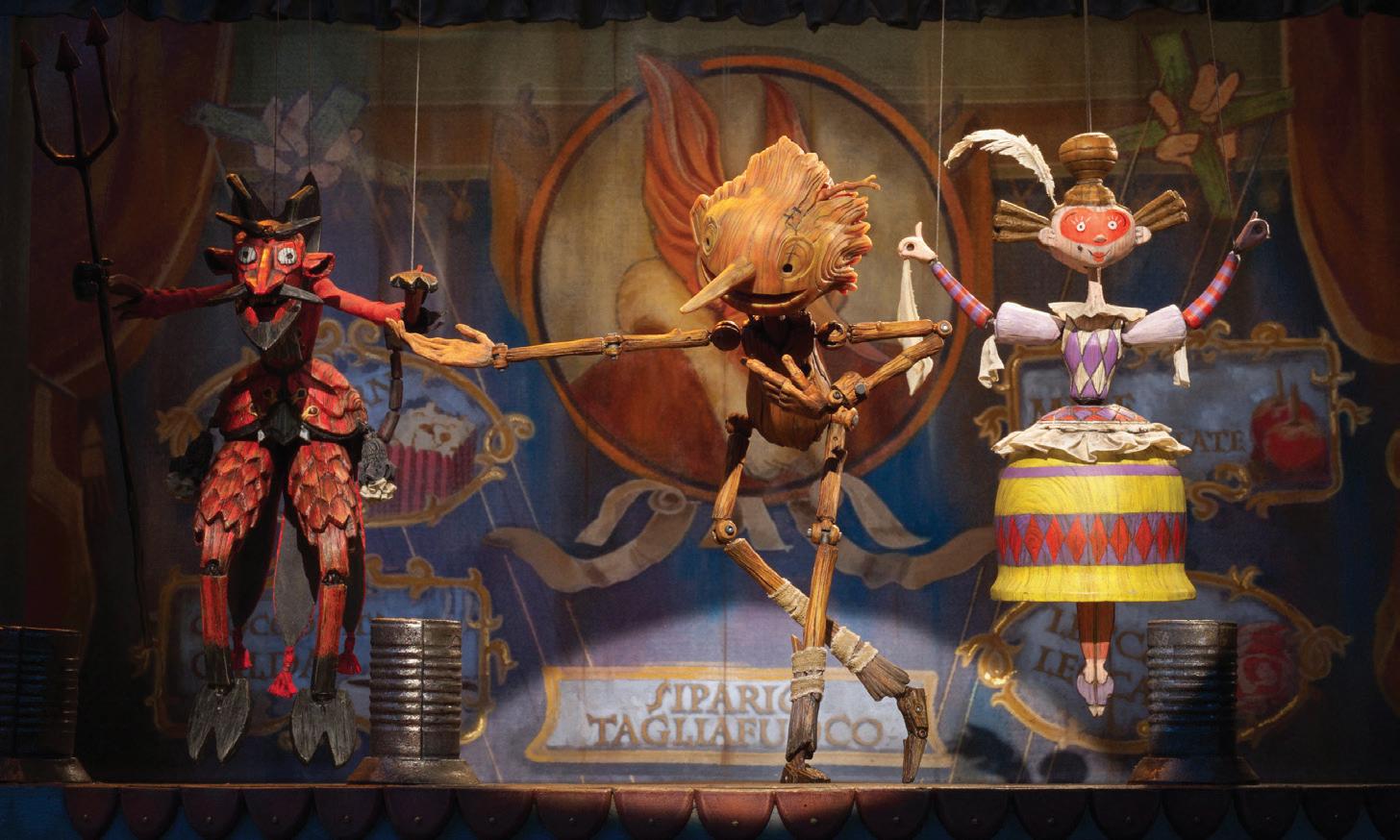
he serves as the boy’s conscience. Co-directing with Mark Gustafson, Del Toro brings his signature artistic style to the project, injecting a shot of playful anarchy into the tale of a boy trying to live up to his father’s expectations.
DreamWorks Animation is back in the mix this year with two major contenders in The Bad Guys and Puss in Boots: The Last Wish. Based on a children’s graphic novel series, The Bad Guys follows a group of anthropomorphic criminals, Mr. Wolf (Sam Rockwell), Mr. Snake (Marc Maron), Ms. Tarantula (Awkwafina), Mr. Shark (Craig Robinson) and Mr. Piranha (Anthony Ramos). After getting caught, Mr. Wolf makes a play to escape prison time by claiming that the group wants a chance to reform themselves into good guys. Though it starts as a ruse, Mr. Wolf soon finds himself excited by the opportunity to better himself. The film grossed more than $250 million worldwide and was the second-highest-grossing animated film of 2022.
DreamWorks earned their first Best Animated Feature Oscar in 2001 with Shrek, and this year they are bringing the sixth installment in the series with Puss in Boots: The Last Wish. The story takes place after Shrek Forever After, when Puss in Boots (Antonio Banderas) is accidentally killed by a bell and discovers he is down to his ninth, and final, life. He soon learns about a wishing star that could help them get his lives back. However, during his quest he is hunted by a mysterious wolf. Puss in Boots: The Last Wish has yet to have its wide theatrical release, but early reviews for the film have been positive.
A24 has entered the race this year with Marcel the Shell With Shoes On, based on a series of short films written by director Dean Fleischer Camp and Jenny Slate. Using a documentary style, it sees filmmaker Dean (Fleischer Camp) move into an Airbnb where he finds a tiny talking shell named Marcel (Slate). Marcel lives in the home with his grandmother

Connie (Isabella Rossellini) and has created whimsical and resourceful ways of dealing with problems in his everyday life. Dean begins filming Marcel’s antics and uploads the videos to YouTube, leading to Marcel becoming a cultural phenomenon that attracts the attention of 60 Minutes’ Lesley Stahl. Although the film has animated characters interacting with the live-action world, it was deemed eligible to be nominated for Best Animated Feature and has since gained a lot of traction in the race.
After receiving its first nomination in the category for Wolfwalkers in 2021, Apple is looking to get its second nomination this year with Luck, directed by Peggy Holmes. Sam (Eva Noblezada) is the unluckiest person in the world. Her life changes for the better when she finds a lucky coin, which her bad luck soon causes her to lose.
Bob (Simon Pegg), a black cat with a Scottish accent, comes looking for the coin, only to accidentally bring Sam into the mystical Land of Luck where the two must go on a journey to find it and turn her luck around. The film’s strength lies in its voice acting and choreographed animated sequences, which were enhanced by Holmes’ background in dance.
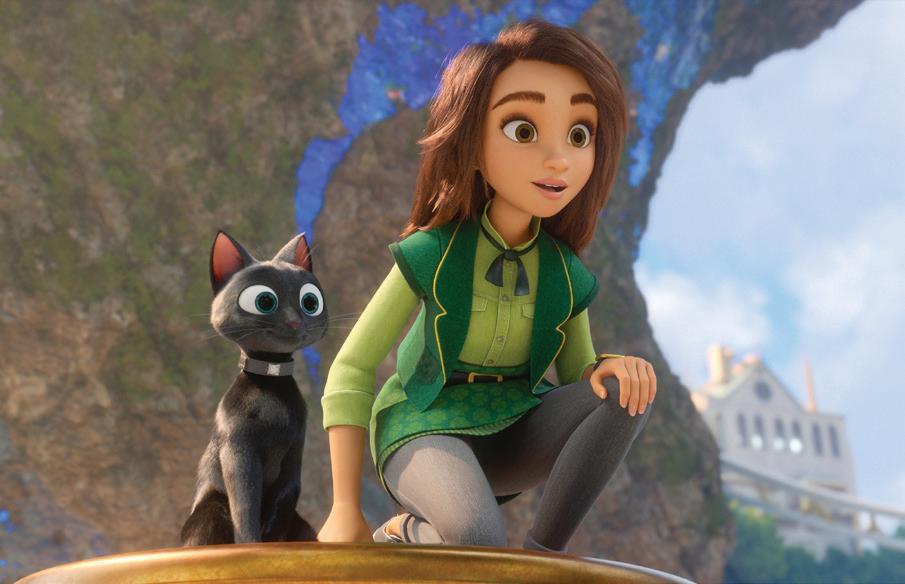
Though Belle didn’t garner the nomination last year, GKIDS has a new chance with its animated musical Inu-Oh. Based on the novel Tales of the Heike: Inu-Oh by Hideo Furukawa, the film follows two outcasts
in 14th-century Japan: Tomona (Mirai Moriyama), a blind Biwa player, and Inu-Oh (Avu-chan), a deformed Noh dancer born with a curse. The two discover they have the ability to hear the spirits of the Heike, a clan of warriors whose stories are lost to time, and the pair begin to perform their stories in a new style resembling modern hair metal. Inu-Oh’s performance recounting the Heike stories starts to cure him of the curse and rockets them to stardom, but they soon attract the attention of the country’s leading power, who doesn’t want these stories told. The film received immediate critical acclaim as a story of artists compelled to speak truth to power through an exciting performance style.
Last year’s winner, Encanto, received a huge bump in popularity thanks to the song “We Don’t Talk About Bruno”, but this year, there haven’t been any songs going viral to keep a film in the public eye. Will Disney or DreamWorks be able to pull off another win, or will Netflix finally break through with multiple films, including Del Toro’s long-awaited iteration of Pinocchio? Will GKIDS or Apple secure their first win after receiving only nominations, or will A24 deliver a surprise upset with Marcel the Shell? Compared to last year, this season seems like anyone’s game to win.★
12 DEADLINE.COM/ AWARDSLINE FT FEATURE
NETFLIX/PARAMOUNT/A24/COURTESY EVERETT COLLECTION
Above, Guillermo del Toro’s Pinocchio; below, Luck
Marcel the Shell With Shoes On

DANAI GURIRA
By Antonia Blyth
In the sequel Black Panther: Wakanda Forever, Danai Gurira resumes her role of Okoye—a part she has also played in the Avengers franchise. This time, Okoye is assigned by Queen Ramonda (Angela Bassett) to watch over Shuri (Letitia Wright) as she ventures into the threatening outside world, with mixed results. While there was pain in returning to Wakanda following the tragic death of Black Panther star Chadwick Boseman, Gurira also cites a strong drive to honor his memory, too.
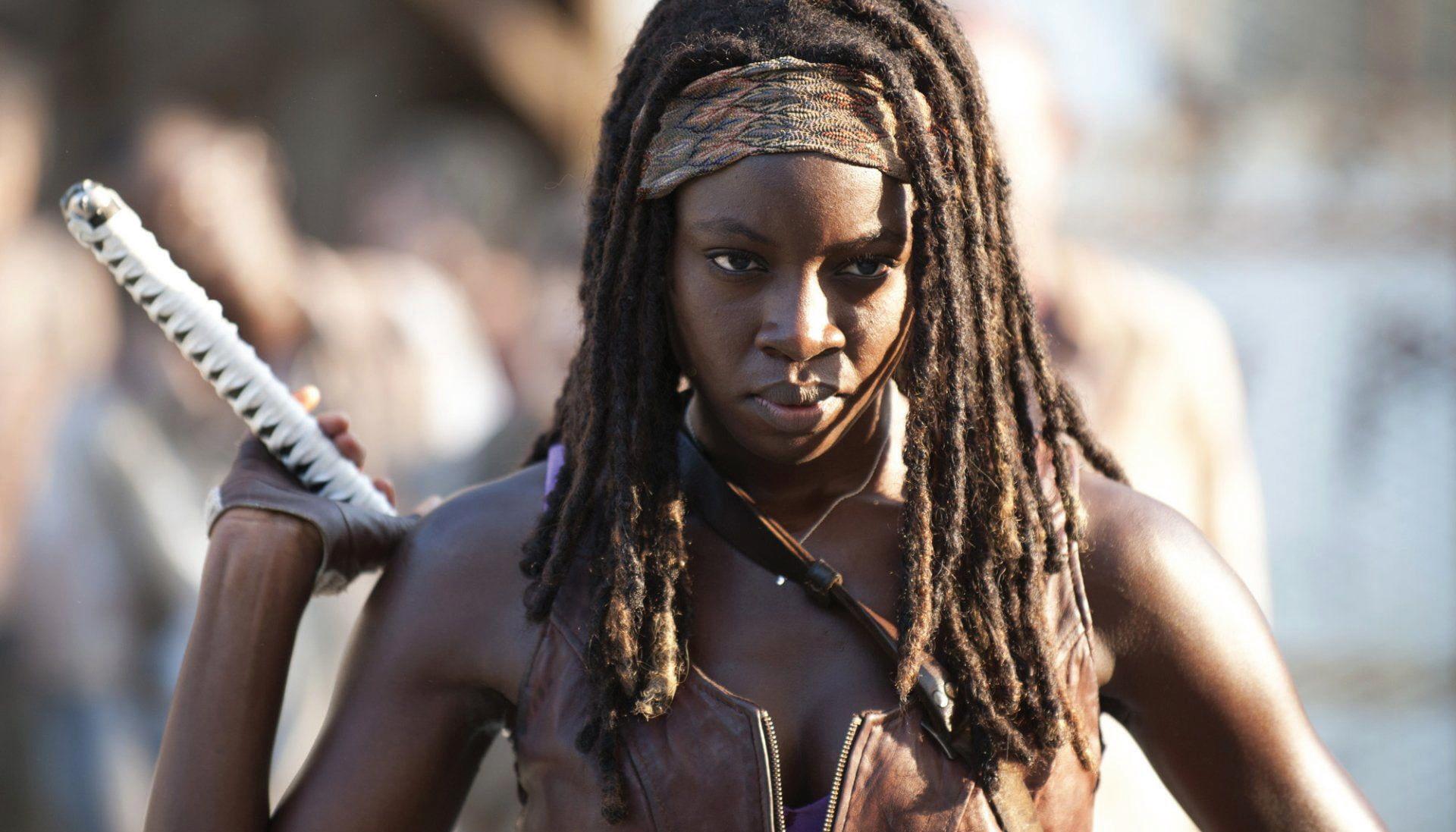
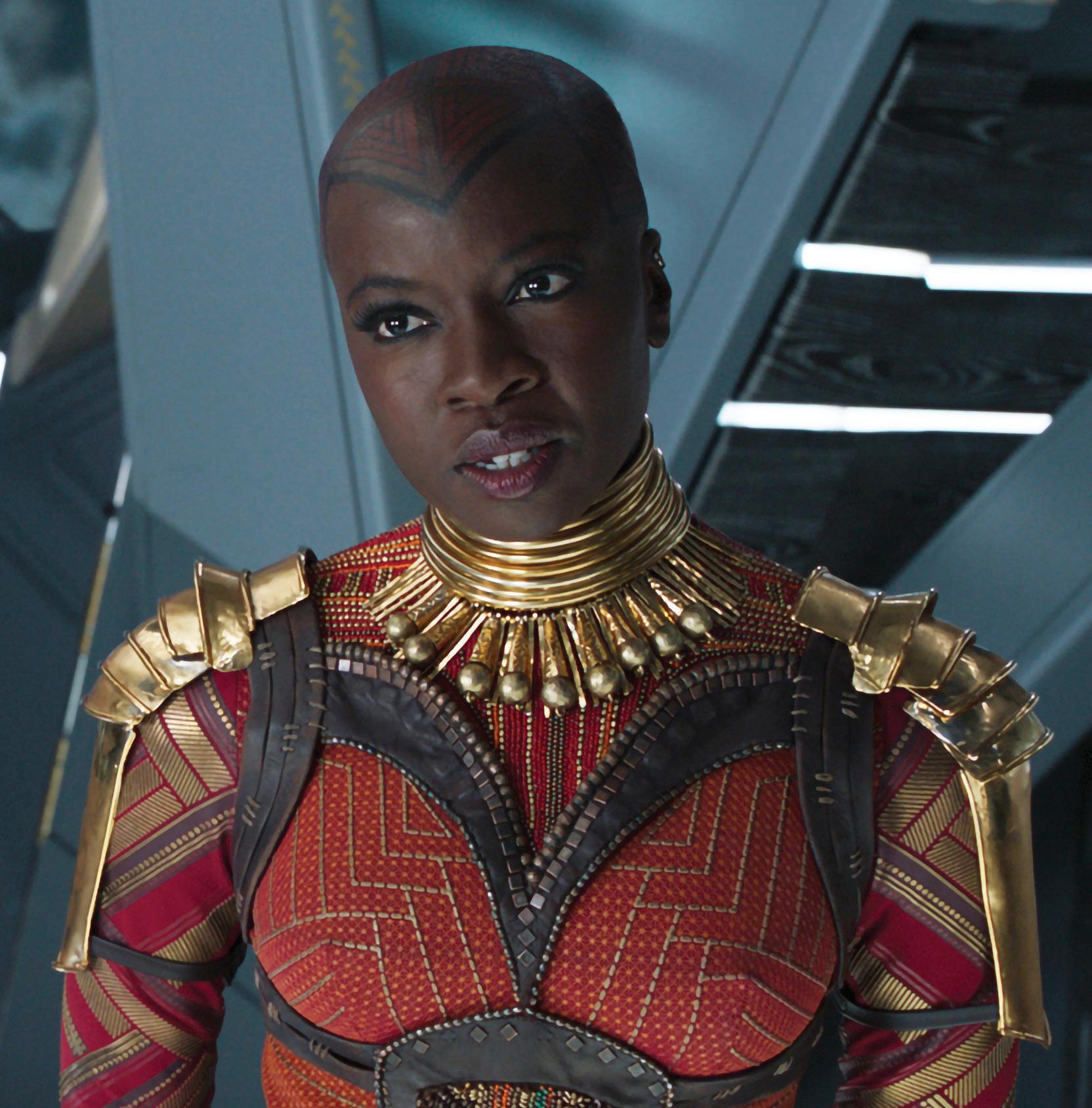
Also a Tony-nominated playwright, Gurira first became a fan-favorite household name as Michonne in AMC’s zombiethon The Walking Dead, and she will soon executive produce and star in an upcoming spin-off series, co-starring Andrew Lincoln as Rick. Here, she reveals her desert island films, onscreen guilty pleasures, karaoke playlist and more.
My First Film Lesson
That they feed you all the time, because I’m from theater where they don’t feed you. You’ve got to bring your own food, bring your own snacks. It’s not happening. It’s like, “OK, can I just take this? Really? All this is for me? I can just eat whatever I want right now?” It’s just always there.
The Best Advice I Ever Received
The power of the word ‘no’ and how that can be a very defining word for who you are, what you stand for, and what you want to be in the world, as well as where you’re trying to go. It also allows you to not be a people pleaser, because you’ll really stand in that word and stand by it. You’re not trying to please everybody. That’s something that women often get conditioned into having to be sometimes, just to survive a patriarchal society. I think it has really helped me go on a route that makes me feel like this is who I am, and this is what I’m meant to be doing in the world, and I’m defining it.
The Part I Always Wanted To Play
I do love doing action stuff. I did tons in Walking Dead, tons in these last two movies of Black Panther
and The Avengers. It’s something that I know I have an ability in, but I also really love to do. I guess I’m a bit of an adrenaline junkie, so I’m always like, “Yeah, I want to do an action flick,” but I think I might have to write it myself. I don’t see where the scripts are that feed my specificity that way. I don’t expect someone to call me up with that perfect script, so I think I’m going to have to write it myself. That’s usually where I land up.
The Most Fun I’ve Had On Set
There was a day [on Wakanda Forever] where we were in this little Lexus, and it was me and Lupita [Nyong’o], and we had to run out of the casino and jump in the car. We had this South African house music playing and we’d hit it, throw it back on, and just be jamming. They’d be like, “Danai, Lupita, get out the car. Danai, Lupita, please come back.” We’d just be like, “Huh? Can’t hear you,” and we’d be jamming in the car forever. Then there was another day with Martin Freeman where he was driving this Land Rover. I probably shouldn’t say this, but we had a little Ghanaian palm wine in the car. We had this ’90s jam channel playing and he knew every single ’90s R&B word.
14 DEADLINE.COM/ AWARDSLINE FILM FRAME/MARVEL STUDIOS/AMC STUDIOS/LARRY MARANO/GETTY IMAGES/PARAMOUNT/NETFLIX/COURTESY EVERETT COLLECTION
The Black Panther: Wakanda Forever star recalls laughter, tears, and lessons learned
FT ON MY SCREEN
Gurira in Black Panther: Wakanda Forever
Danai Gurira in The Walking Dead
My Toughest Role
There is a very particular climb that starts off with the beauty of Maya Angelou’s words about how glad I am to be a Black woman. I would be jealous were I anything else. You start with that thankfulness for all the things that come up being a Black woman, but it also comes with the struggle. That definitely is something that I’ve seen experienced by others, and I’ve experienced in work and in life. There’s a clarity inside that the way things are, the barriers that exist, shouldn’t be there, so you strive to not even pay them any mind, but rather, just to destroy them with the pursuit of the work and the pursuit of the purpose. You destroy them, not just
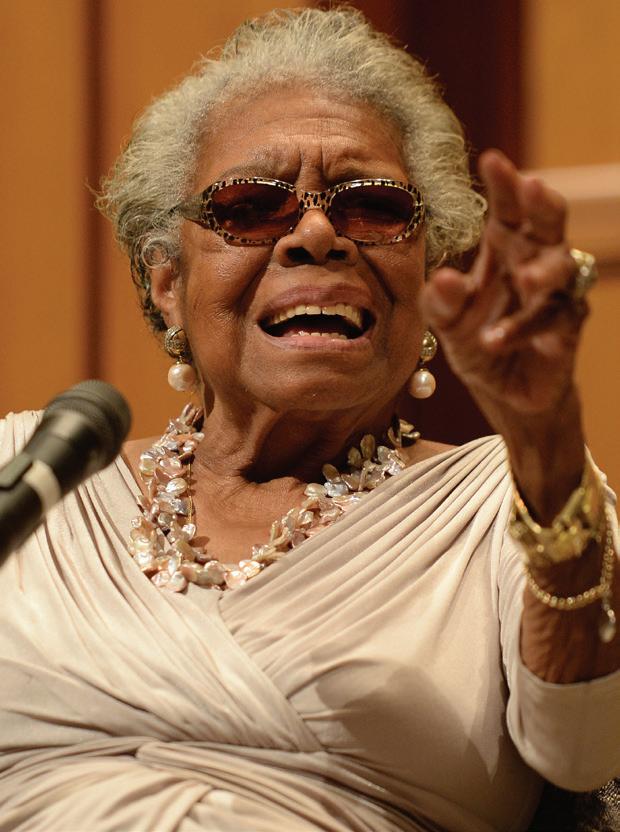
for yourself, but for those coming after you. I think about the women who’ve come before me who’ve done that so beautifully.
The Films That Make Me Cry
I think I cry pretty easily. I cried during Wakanda Forever. I haven’t been able to sit down with the big screen yet and watch The Woman King. I’m sure I’ll cry when I see that. What else has made me cry? Probably back in the day, Dirty Dancing made me cry.
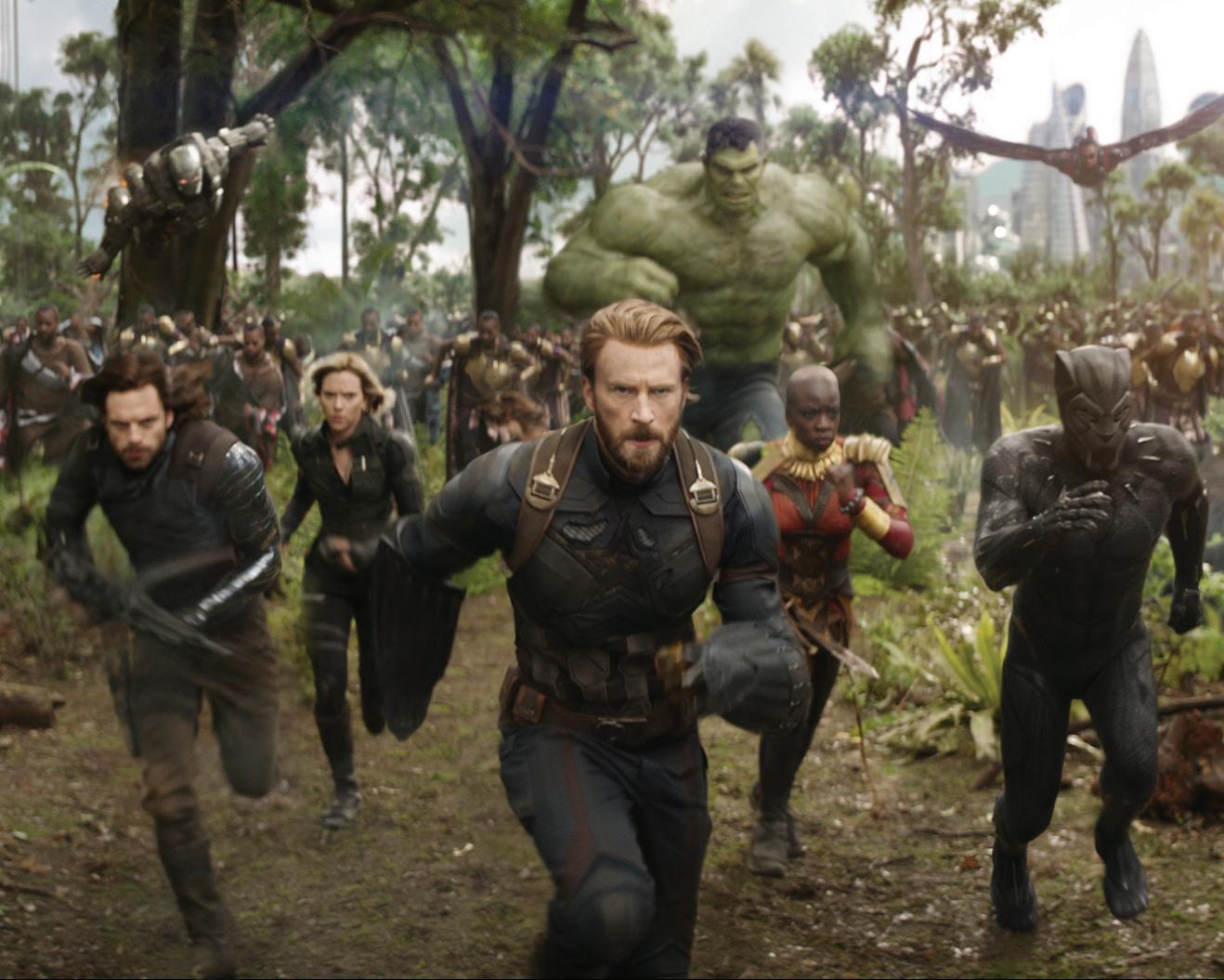
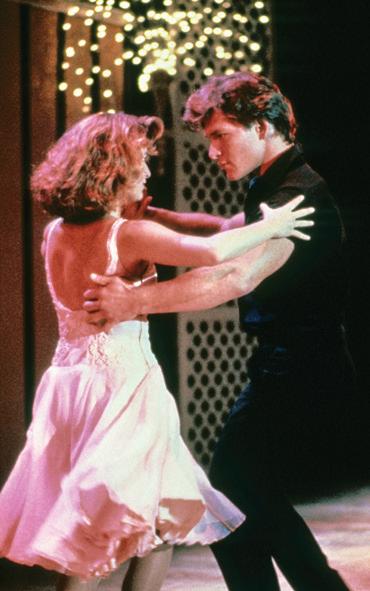
The Character That’s Most Like Me
I don’t think I’ve played a character the most like me, because I’m bizarre. I have a very nerdy side and I have a very gushy side. I have people tell me I’m funny. I don’t know if I am, but I don’t think I’ve been able to play a character that really embodies me so much that I can really say, “Well, that was just me.”
My Most Quoted Role
There were a lot of quotes from the first movie that came out of Okoye that I saw everywhere, that people quoted back to
me, that were being used at anti-gun rallies in DC. There were just so many. And then even something she says in Avengers that people really started to quote back to me a lot, too. I think it’s definitely Okoye. I mean, there are some things Michonne has said that I would definitely see hardcore fans would have on T-shirts, or they’d want me to write it when I was signing their sword replica. In Season 3, Episode 12, she says, “The mat said welcome,” because she was defending the fact that she was eating Morgan’s food, and people would quote that back to me. And, “We’re the ones who live.” That’s the one that her and Rick use back and forth.
My Desert Island Films

Probably the first Coming to America—talk about quotable, oh my God—

My Guilty Pleasure
I don’t really watch reality shows much unless they’ve got to do with real estate, because I’m always interested in real estate. I watched that one of the women in Tampa [Selling Tampa]. I mean, it had its dramas, but I’m really actually watching them for the real estate information. I don’t feel guilty about it though.

I have watched a lot of HGTV because I’m really into home design, and I’m really into real estate. I feel it’s very constructive. I’m seeing people figure out their lives. Sometimes I’m getting creative ideas for my own reno. I enjoy it.
Who’d Play Me In My Biopic
Oh God, there’s no need for a biopic of my life. I’m always thinking about the sort of things I could write to give younger Black women a chance to shine. That’s how my brain works. All my plays have Black female protagonists and I’m always looking, like, ‘Where can I find her? What can I write that allows all that talent out there that don’t get their shot something to shine with?’ That’s kind of how my brain works. I don’t really think about, ‘OK, now what actor could play me?’ That’s completely nuts. I really have never thought about this. ★
DEADLINE.COM/ AWARDSLINE 15
Jerry Maguire, Dirty Dancing. The first Bad Boys. Those are the ones that come to my mind.
The Avengers
Selling Tampa
Maya Angelou
Coming to America
Dirty Dancing
Jerry Maguire
THE POWER of THE HOUND DOG

16 DEADLINE.COM AWARDSLINE
TAKING ON THE STORY of ONE of ROCK’N’ROLL’S GREATEST ICONS, ELVIS DIRECTOR Baz Luhrmann FOUND a REMARKABLE NEW STAR in Austin Butler AND RESTORED to PRESLEY’S FAMILY THE REAL STORY of THE MAN THEY KNEW AND LOVED. HE TELLS Antonia Blyth WHY IT WAS NOW or NEVER …
 BAZ LUHRMANN PHOTOGRAPHED EXCLUSIVELY FOR DEADLINE BY JOSH TELLES
BAZ LUHRMANN PHOTOGRAPHED EXCLUSIVELY FOR DEADLINE BY JOSH TELLES
the night BAZ LUHRMANN premiered his film
Elvis at the Cannes Film Festival, all eyes were on Priscilla Presley. She had turned 77 the day before, and in the 45 years since her former husband’s death, she’d suffered many cartoonish caricatures and lame imitations of the man she loved. But that night, as the credits rolled, she cried.
Luhrmann was relieved; after all, Presley’s blessing wasn’t something the director took for granted. “I really mean this with great respect, because now we’re like family,” he says, “but she got a little bit vocal about her doubts. She said, ‘I don’t know, this film could be crazy. Baz can be wackadoo. And how can this skinny kid play Elvis?’”
The “kid” she referred to was Austin Butler. And her concern was understandable. How could she trust anyone to depict the man she loved; the tortured and brilliant artist who changed music history? He was a man both complex and self-destructive, with a huge, fragile heart. As Luhrmann says, “Elvis had become wallpaper. He was sort of a Halloween costume. But to his family, he was always a husband, a father, a grandfather and a person.”
On top of that, Luhrmann wasn’t planning some puff piece of cinema about a beloved icon. Instead, he sought to look behind the velvet curtain. “There were things that were going to be difficult for them to see about Elvis, but they were also going to see the humanity and true spirituality of him, which was the most important thing.”
After seeing the film, however, Presley wrote Luhrmann a letter. “I won’t share all of it,” he says, “but the key thing she said was, ‘My whole life I’ve had to put up with people impersonating my husband, and I don’t know how that boy did it, but every move, every wink... If my husband was here, he’d say, ‘Hot damn, you are me.’”
and physical health, until in 1977, when the 42-year-old Elvis—the bestselling solo music artist of all time—died of a heart attack, likely caused by his reliance on barbiturates.
Says Luhrmann, “The Colonel represents the great sell in America, and this therefore made it about America: the sale of the soul, the artist and the ringmaster.”
Surprisingly, when producer Gail Berman first approached Luhrmann about an Elvis project, he hadn’t been sure. “She’d managed to get the rights to the estate, and she said, ‘I’ve got this one idea.’ I said, ‘Well, what is it?’ She says, ‘It’s you.’ And she never gave up. Then, when I told her my idea about the Colonel, she dogged me even more about it.”
Having cracked the subtext, there was still a long way to go: where do you find an actor with the range to play that kind of icon? Luhrmann originally set about workshopping Harry Styles and Miles Teller for the part. But then came this former Disney actor, Austin Butler, for whom getting the role felt almost tinged by magical intervention.
“I had never heard it before in my life,” Butler says, “but in the month prior to hearing about Baz making the film, an Elvis Christmas song was on the radio, and I was kind of just goofing around, singing along to it. And my friend said, ‘You’ve got to play Elvis.’ But it was such a long shot, I just laughed and pushed it to the side. And then a couple of weeks later I was playing the piano, and my friend said, ‘I’m serious. You’ve got to figure out how you can get the rights to maybe write an Elvis film or something.’ I said, ‘That’d be amazing, but there’s no way that that’s going to happen.’”
A week later, his agent called and told him about Luhrmann’s film.
“Well, immediately I got chills,” Butler says.“Because of the synchronicity of it all, I thought, ‘I got to just give it everything I got.’ So, I started prepping from that day as though I was going to be making the movie.”
The first thing he did was send Luhrmann a self-tape. “It came out of this detail that I learned about Elvis,” Butler says, “about his mom, who passed away when he was 23. That’s how old I was when my mom died, so I ended up filming this tape that came out of a nightmare that my mom was dying again. It was an emotion of such deep pain. It kind of stripped away the icon of him, or the caricature of him, and it just made him so human.”
This was precisely the depth of Elvis that Luhrmann sought, and Butler was so right for the role that Luhrmann doesn’t even recall offering it to him. “I just remember the moment he walked in,” he says. “Then one day we made the movie.”
Luhrmann had originally planned to have a voice impersonator perform as the young Elvis, because he didn’t have the rights to use those original recordings. Nevertheless, he asked Butler if he could sing. “Austin said, ‘Well, I don’t really sing but I’ve practiced one Elvis song… ’” He pauses. “I’ve still got it on video. I mean, when you hear him sing, it’s crazy. You cannot believe. It’s spinetingling. We just started riffing, and hours would go by.”
BAZ LUHRMANN likes to live his movies, and Elvis was no different: in the course of making it, the Australian moved to Memphis, Tennessee, where he visited Graceland, Elvis’s home, took a dive deep into the singer’s archives, and even found the man who had been with Elvis on the day he discovered the power of Gospel music.
His mission was to show us the lost boy behind the mask, but he would frame it as “a canvas to explore America”—and crucial to that was the relationship between Elvis and his manager, Colonel Tom Parker (played by Tom Hanks in the movie). A former carny, Parker used both financial and coercive control to line his own pockets, while depleting the artist’s mental
Butler returns the praise, describing Luhrmann as a great collaborator. “Baz has this extraordinary quality where he doesn’t have a barrier between life and art,” he says. “He lives the art life. David Lynch talks about that, and I think Baz is very similar: there’s this never-ending poetry of the art, and you see how it flows into his life and vice versa. So that’s an amazing quality to be around, because you don’t feel like you’re ever breaking into something else. The two are one. And it’s also a way that
really love
work.”
18 DEADLINE.COM/ AWARDSLINE
I
to
“In the case of my movie, it’s basically the SELLING OF THE SOUL . It’s talent versus promotion, really.”
HUGH STEWART/KANE SKENNAR/WARNER BROS./COURTESY EVERETT COLLECTION
Finding the right actor to play Colonel Parker was equally fortuitous. Casting Tom Hanks so severely against type would only serve to highlight Luhrmann’s message: how, as with Elvis, a star can be constrained by audience expectations. He says of Hanks, “Once you start to be something avuncular, everybody wants that tune from you, a riff on that part of you as a performer. My joy is finding actors and helping them play a tune no one’s ever heard.”
He recalls that Hanks came on board shockingly fast. “An actor like that, to get them to do a large role like that, could take you a month of talking and convincing and cajoling. I went in to see him at Playtone, and I said, ‘Colonel Tom Parker’s like a clown with a chainsaw.’ I had a video of Parker, and I had all these props to start convincing Tom to do it. I never got the video out. He stopped me in the middle of it. He talked a bit about the character, and he went, ‘Well, if you want me, I’m your guy.’ It must’ve taken 20 minutes.”
Luhrmann’s theory as to why Hanks was so sold on the sinister Svengali role is this: “I think he’d got to such a place in his life that he knew by playing Colonel Tom Parker he would have an extra level of distastefulness from his fanbase, because it’s a bit like your favorite dad turning out to be corrupt. I think he wanted to take that step and break the expectations, because he’s truly one of the great actors of all time.”
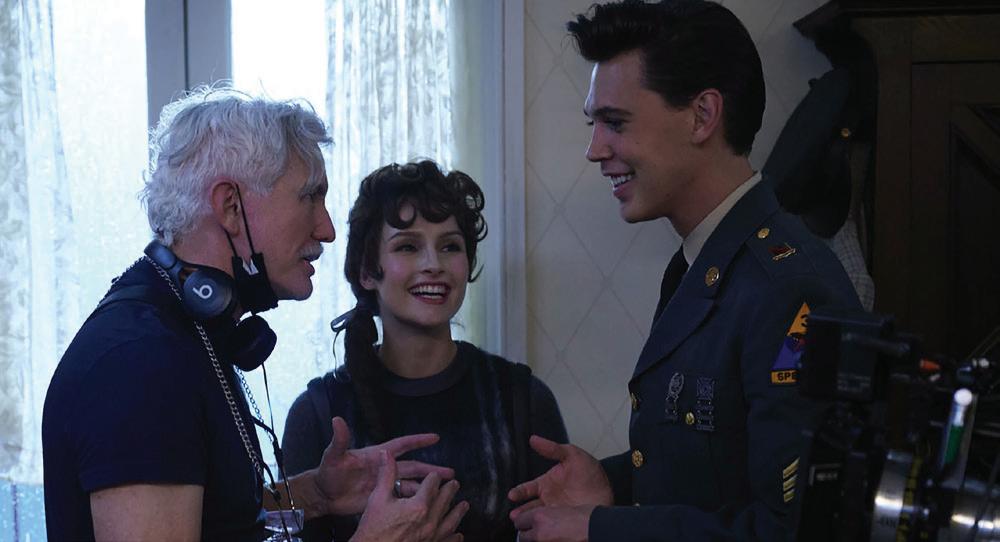


Significantly, Luhrmann uses the Colonel’s point of view to frame the movie, a device he compares to the 1984 Miloš Forman-directed Amadeus , in which the story appears to be led by the ill-fated Mozart, when in fact it’s the twisted and jealous Salieri who tells the tale.
“It’s not Amadeus’s story,” Luhrmann says. “Salieri is saying, ‘So let me
DEADLINE.COM/ AWARDSLINE 19
From top: Baz Luhrmann and Austin Butler; Luhrmann with Butler and Olivia DeJonge, who plays Priscilla; Butler with Helen Thomson, who plays Elvis’s mother Gladys.
get this right, God. I was chaste. I made a deal with you to give me the gift of music. And I’m king. I’m loved. And then you go and put genius in that little pig? How’s that fair?’ And then you have the preposterous conceit in that movie, like, ‘Right, I’m going to wear a mask and get Mozart to write the Requiem to kill him.’ Now, you have to have a stupid idea like that so that you can explore the bigger idea, which is, in that case, jealousy. In the case of my movie, it’s basically the selling of the soul. It’s talent versus promotion, really.”
So now he had the theme, the cast and the dramatic tension. But at the heart of all of Luhrmann’s films, there’s always a love story. And Elvis’s is not the one you might expect.
“Very early on,” says Luhrmann, “a young guy working with me on the music said, ‘Look, I really like what we are doing, but every movie you’ve made has had this great romance in it. And you’ve got Priscilla in it and the Colonel. Is the romance really the Colonel and Elvis?’ And I went, ‘Well, Priscilla, absolutely. The Colonel and Elvis? Yes.’”
But now, looking back, Luhrmann sees that it’s something else. “I’ve just realized, the true love story of Elvis, and the way it fits into the oeuvre, is between the audience and Elvis. It’s actually about his addiction to this love: the more you get, the less love you actually feel. It’s a destructive love. Because in the end, Elvis Presley is not that child who runs around and just can naturally sing and everyone goes, ‘Oh, you’re great.’ He keeps developing a character, and then, at some point, he can’t take that character, the
mask, off. But he has that addiction to the audience, and the audience’s complete need for their icons to stay eternally young, to do another album, another song, another movie… ”
IN TRYING TO FIGURE OUT the man under the shades and the rhinestone jumpsuits, Luhrmann found an extraordinarily talented, deeply spiritual person who spent his life trying to mitigate old pain. The film takes us back to Elvis’s beginnings in Tupelo, Mississippi, and later, Memphis, seeing the hardship of his home life. “There’s a big hole in his heart from childhood,” says Luhrmann, “from the shame of his father going to jail, from being in one of the white houses in the Black community, all of that. He’s trying to mend his life constantly, trying to be liked and getting people to like each other. And ultimately, that’s going to end in self-destruction.”
There’s an important scene where a very young Elvis ventures into a Gospel service with a friend, and the friend instinctively tries to pull him back, as though they don’t belong there. But Elvis is captivated, and the preacher says, “Leave him be, he’s with the spirit.”

That friend was Sam Bell, and, unbelievably, while living in Memphis, Luhrmann turned investigative reporter and tracked Bell down, getting that story firsthand.
“One of the family members knew of him,” he recalls. “We got an address.
20 DEADLINE.COM/ AWARDSLINE
COLLECTION
WARNER BROS./COURTESY EVERETT
I sent a FedEx. Nothing. We drive around to the house. It’s raining. And I could see the FedEx is wet from three days of rain. It hasn’t been touched. And the house looks pretty unused. So, I said, ‘Look, he’s not here.’ And one of the young guys says, ‘So let me get this right, we’ve come all the way to Tupelo, and you’re not going to get out of the car?’ I get out the car, there were cobwebs around the door. I thought, ‘Well, he’s clearly passed.’ And then the same young guy said, ‘We’ll go round the back, then.’ I’m like, ‘Don’t get arrested. I’m Baz the coward.’ Unbelievably this older lady comes out. I said, ‘I’m looking for Sam Bell.’ She says, ‘Yes, I’m his wife. He’s been in hospital for six months, but he’s coming out next week.’”
Bell was a veritable goldmine. “Sam told me a whole lot, actually. I mean, there’s more than I put in there about how he and this kid called Smokey used to fight all the time. And Elvis was a bit of a story maker-upper because he was so embarrassed about the fact that his dad had been off in jail. Sam said, ‘My grandparents adored him. He called them sir and ma’am. No white person in those days, man, woman, or child ever said that to my grandparents.’ They just thought he was the most magical, unusual, sweet and vulnerable, but kind of cocky kid they’d ever met.”
Bell passed away in the fall of 2021. “The revelations were so authentic,”
Luhrmann says. “And he never asked for money. He just told the stories.”
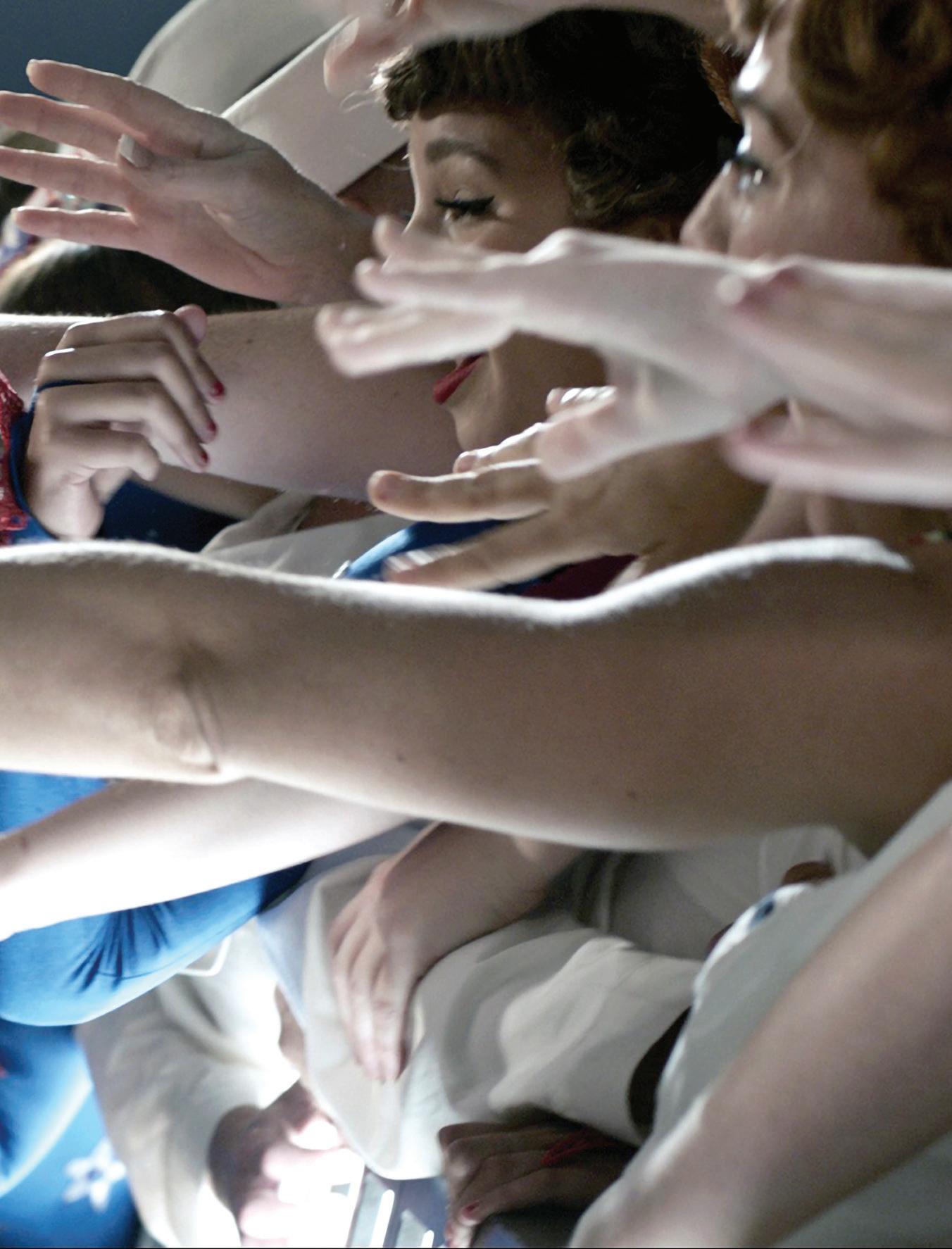
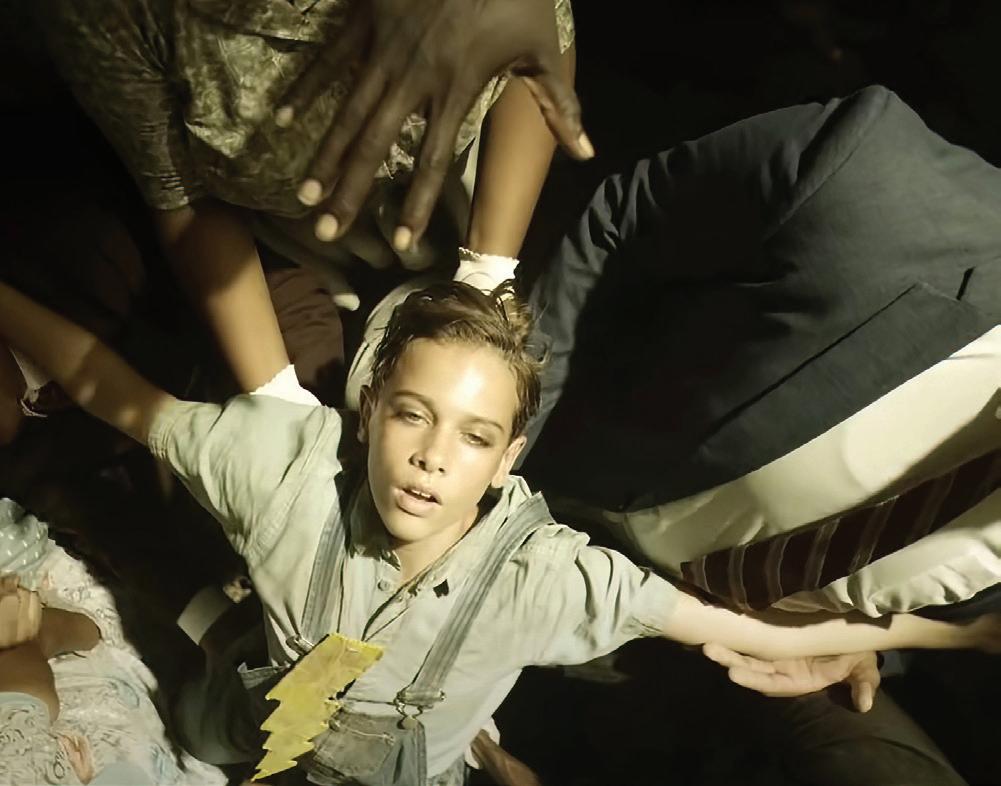
Luhrmann thought a lot about them, and the pain that dogged Elvis. He sees it as a throughline to a universal human experience: the need to fill the emptiness, to manage shame, to love and be loved.
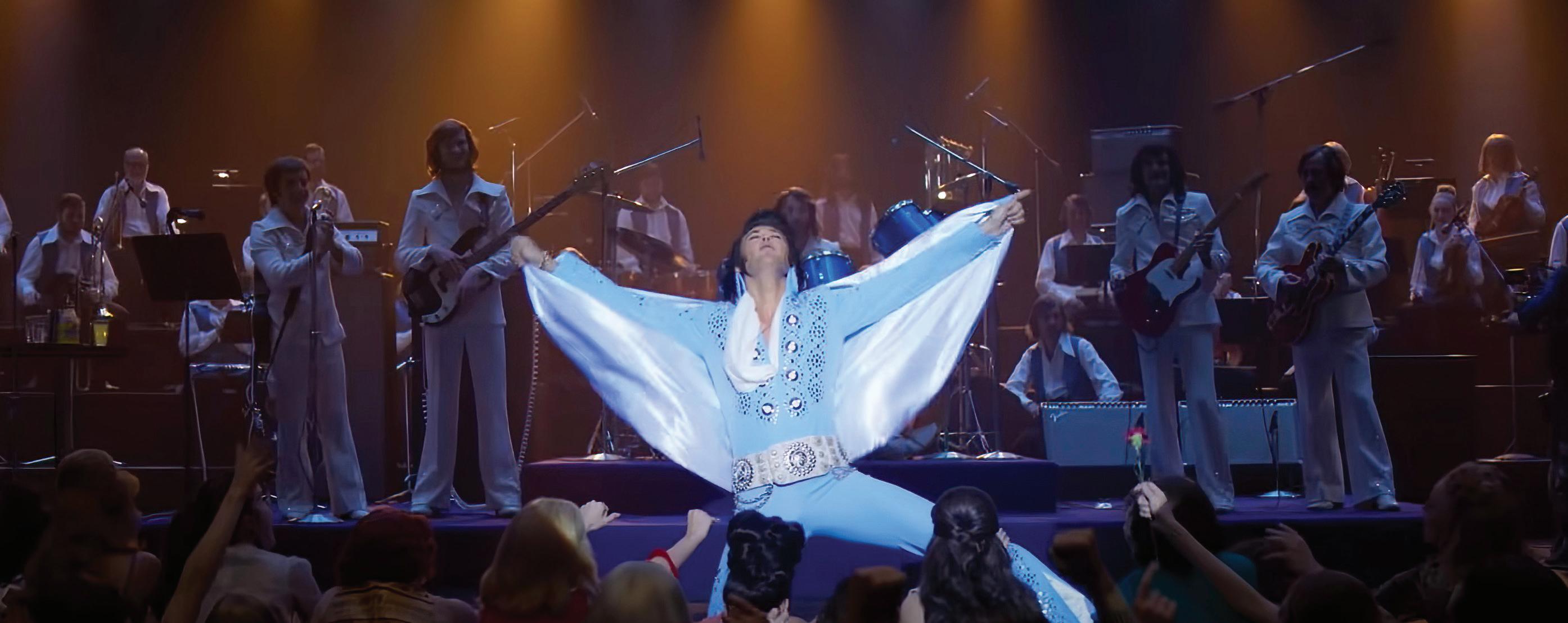
“That’s what the Greeks call pothos,” he says, “and that is, the more love that you seek that’s not internal, the more adoration you need. It’s a drug. [Overcoming it] is a life’s work. And you probably don’t start to deal with that until you’re at least 40. Because before 40, you’re going, ‘Am I someone?’ And you’re just so focused on getting it. And then when you get it, you’re like, ‘Hang on, I thought this would fix things. No. Shit. Well, how do I fix things?’ The external thing probably helps you a lot because it’s selfmedication of a feeling of insecurity and not being good enough. I mean, we see them, they’re all poster boys for it, whether it’s Michael Jackson or Napoleon. They just keep going, they keep pursuing some impossible goal that ultimately destroys them.”
There’s some footage of Elvis from the very last time he performed on camera. He’s singing “Unchained Melody”, and two years before he shot the movie Luhrmann knew he wanted to use it. “He sings the best he ever sings,” Luhrmann says. “It’s so moving that that’s the death scene. That’s the farewell.” But Authentic Brands Group, who control the licensing and merchandising rights to Elvis Presley, did not want it to be shown.
Fortunately, Gail Berman came to the rescue and persuaded them to agree. Luhrmann says, “They actually said, ‘Look, we trust you so much if
DEADLINE.COM/ AWARDSLINE 21
Clockwise from left: Butler as Elvis singing in Memphis; Chaydon Jay as a young Elvis inspired by a Gospel revival meeting; Elvis on the Vegas stage.
you really believe that. But we’re scared of it because Elvis is so unattractive in it.’ He’s discombobulated. He can hardly put two words together. I said, ‘Well, if you don’t want to do it, I’ll get Austin to do it.’”
Butler came through. “Unbelievably, he just absolutely studied it and channeled it, even in the costume test,” Luhrmann says. But Luhrmann knew he still wanted to follow the biopic trope of showing the real artist at the end. So, he cut from Butler’s version to the original. “We knew we had an emotional beat-change; we knew we really had something.”

Says Lurhmann, “There’s a moment when Elvis is singing the song and he looks to the audience and he smiles like a little boy: ‘Am I doing good? Am I good?’ And you realize that there’s still a little boy in there trying to make up for a dad going to jail, trying to please and be loved, and have people love each other. It’s so childlike. And then we cut to the real Elvis. I mean, we could have run through with Austin, but I knew we were going to miss the really important final thing: Austin’s humanized Elvis in a way that I don’t think Elvis has been humanized for so long. You have to remind people that it’s OK that his body was corrupt and all the discombobulation with the drugs. Inside was still this beautiful kid who just wanted to love and be loved in return.”
The Lost King
Five fast facts that Baz Lurhmann would like to share…
There are five things that—relentlessly— people are on at me about. Here’s a quick list:
1.
There isn’t a fourhour version. I have four hours of material.
2.
I will—not now, but in a couple of years—do some sort
of extended version of Elvis that will let you see more of the performance, because Austin Butler’s actual performance in the movie is on another level. There’s footage that people who like the movie should see, because they deserve it.
3.
I did discover extra footage from the two big documentaries, Elvis on Tour (1972) and This is Elvis (1981), out of the salt mines. You have
to have money to find them.
4.
I will do what I can, when I can, to try and make sure that that those documentaries are reexamined and that some of the material that’s not in there is in there. Again, I will do what I can.
5.
Finally, just remember I don’t own all these things. I’m not a king who just says, “Let there be Elvis on Tour: The Sequel.”
A Little More Conversation…
Baz Lurhrmann takes a walk through his 30-year career in film
The day before this retrospective interview, Elvis director Baz Luhrmann was approached by a super-fan. “The guy was so nervous,” he recalls, smiling. “And it reminded me of what movies meant to me when I was younger. Like Saturday Night Fever or Apocalypse Now: those two movies were everything to me. I’ll never be able to get those movies out of my DNA, which is why my films tend to be like Saturday Night Fever musicals made at the scale of Apocalypse Now,” he laughs. “Apocalypse Now: The Musical, anyone?”
Don’t rule it out. Here, he looks back on 30 years of filmmaking and the steps that led from a low-budget feel-good romcom set in the boondocks to a blockbuster biopic of the king of rock’n’roll…
Strictly Ballroom (1992)
A rebellious young ballroom dancer defies the rules of the Australian Dancing Federation in the hopes of winning a major championship.
I come from an acting-teaching background, and Strictly Ballroom was born while I was at drama school. We were taught how to create collaborative environments and how to make our own work. Strictly Ballroom was a work that I did based on a primary Greek myth: the idea of triumph over oppression, and also the myth of the ugly duckling. I had this idea of placing it in a world that I understood, and I understood the world of ballroom dancing very well because I grew up in it, in this tiny country town in New South Wales. I devised it with a group of actors; I’d set out the architecture of the story and I’d come in with the actors every day. The original show was 20 minutes long.
After I graduated, the school was invited to a drama festival behind the Iron Curtain in Czechoslovakia, which was then just as Glasnost was hitting. We thought were going to be laughed out of the Soviet Union. I used to watch the other kids rehearsing; they’d be doing Chekhov’s The Seagull, and there we were with our funny ballroom-dancing play. But there
was this underlying Brechtian message in the play, we used to actually turn to the audience and go, “Fuck the Federation!” and there were recordings of Ronald Reagan and Margaret Thatcher while we were changing into our Latin costumes. At the end of the show, there was a 40-minute standing ovation. They invaded the stage, all the satellite countries, because they reacted to the metaphor of oppression.
Years later, a guy called Ted Albert saw a longer version I did with my theater company. He had a band called AC/DC. You might have heard of them. He wanted to start a film company and he tried to buy the rights, and I said, “No, I’m going to direct it.” He said, “All right,” so I developed the script and got my old friend Craig Pearce to work with me. We were about to be green-lit, and Ted died, very tragically. The film was over, but then Ted’s wife Antoinette stepped in. We defied all the odds, just like the movie.
The film screened in Cannes, at midnight, and a large crowd pressed in on us. I’d never had that before. A security guard reached in and grabbed me. He dragged me through the crowd as they followed us down the Croisette and he said, “Monsieur, from this moment on, your life will never be the same again.” Actually, he was right.
22 DEADLINE.COM/ AWARDSLINE
BRENDON THORNE/GETTY IMAGES/MIRAMAX/20TH CENTURY FOX/ COURTESY EVERETT COLLECTION
From left: Luhrmann, DeJonge, Butler and Tom Hanks at the Sydney premiere of Elvis
People might say, “Well, it’s Dirty Dancing.” Or they might say, “It’s Rocky.” But those films were also taking primary Greek myths, these against-the-system, overcoming-oppression, transformative myths, using a fun or ironic kind of language that nonetheless disarms the audience and leaves them with a resonating—whether you get it intellectually or not— larger idea. I can say that now without it sounding pretentious. But when I said that when I was 30 it sounded very pretentious.
Romeo + Juliet (1996)

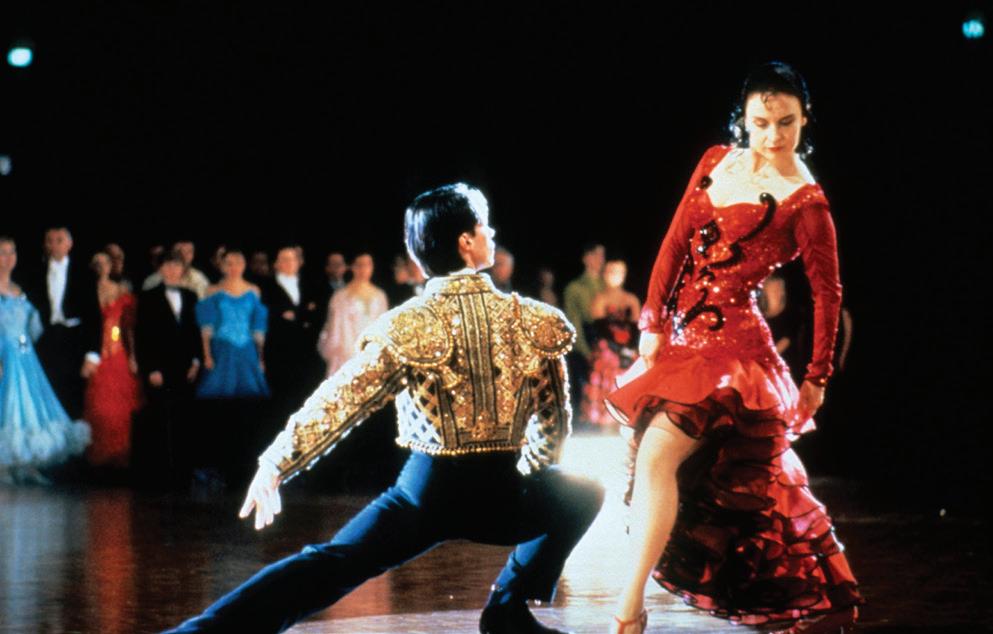
William Shakespeare’s tragedy is reimagined as a post-modern urban gangster movie.
I had an overhead deal with Fox, and Romeo + Juliet was certainly not what they wanted. I think everybody wanted Strictly Ballroom 2, But that’s not how I proceed. I have these ideas or things I want to do, and one of the things I always wondered, having been a scholar of Shakespeare—he’s my go-to, really, kind of my guiding light—was the question: if Shakespeare were here, how would he make a movie?
I’d done a crazy thing once in Australia, with a girlfriend of mine, where we went into a boys’ prison—more than a reform school, a place with serious offenders—and did a radical theater company. We did some scenes from Romeo and Juliet with the boys, and I thought they’d kill us. But it was amazing
how quickly they took to the idea of playing both Romeo and Juliet.
It was unbelievably freeing for them. I only remembered that the other day.
At the time I was thinking about my next movie, I was really focused on the idea of reinventing the musical. I really thought I could do that, but I knew it was going to be quite labor-intensive.
I needed to learn more, to study musicals and learn more how to actually make or produce music.
I thought, “Well, that seems too big to do right now. Why don’t I
do something really small that I could knock off pretty quickly as a short adventure? What if Shakespeare made a movie?”
That turned into an epic journey of unimaginable proportions, with me ending up in Mexico with 19-year-old Leonardo DiCaprio and a young Claire Danes.
One day someone should make a movie about the making of that film. I mean, we had our own army. We had things like our hair and makeup person being kidnapped, and us getting him back for $2,000. (Or was it $200?) Take the church scene where the helicopter attacks Leo. It was a real helicopter shooting at him, and it blew out all the windows in the local neighborhood. We shouldn’t have been there. And it was a totally real church. The candles were real, the neon lights were real. There was no artificiality. The final shot at the end was just the camera on a rope being winched up into the ceiling. The romance of making that, plus all the difficulty and drama, was epic. So, I went from Strictly Ballroom to this epic cinematic creative adventure.
It’s ironic to me that a lot of commentators called it “MTV
Shakespeare”. I don’t mind, but MTV had nothing to do with it. I’ve never made an MTV thing in my life. What I was coming at was the way Shakespeare would do high and low comedy to disarm you. He would then slash that by flipping to high tragedy. I’m alright with it, but people back in the day would just say, “It’s bonkers.” But it’s prevailed, and it’s prevailed because there’s a method and process to the madness, if that makes sense.
I can give you an example: if you look at Romeo + Juliet, you’ll see there’s no actual objects in there that date it. At some point we were going to maybe have rollerblades and a Sony Walkman, but I knew that would date it. The cars are not dateable, the clothes are not dateable. That’s why it’s so profoundly copied. Even now, 25 years later, it’s still copied in fashion because it has its own world. But even in Strictly Ballroom, you can’t exactly tell if it’s the ’80s or the early ’90s. It’s slightly timeless. I build my films to move through time and geography, and mostly I build them for the future.
DEADLINE.COM/ AWARDSLINE 23
Strictly Ballroom
Romeo + Juliet
Moulin Rouge! (2001)

In 1899, a young English composer becomes infatuated with a beautiful cabaret singer at the famous Parisian nightclub.
If I was being honest with myself now, if I was self-examining—which is something I’ve often avoided doing, for good reasons—I’d say that yes, the cinematic ambition definitely did grow with Moulin Rouge!. I perhaps instinctively thought that to crack the code of the modern musical was too much of a leap after Strictly Ballroom. But to look at the modern language for Shakespeare? Achievable.
But then I went back to it. If you dig into the history of musicals, you see they have a language specific to their time and place. So in the ’30s, something like Top Hat is so artificial that Fred and Ginger just say, “Let’s go to Venice,” and Venice is clearly drapes, a glass floor, plastic gondolas and the orchestra just bursts out of nowhere. When you get to the ’60s you get The Sound of Music, and it’s slightly more realistic: Julie Andrews is at least outdoors on a hilltop, and there’s a whiff of Nazis in it. You get to the ’70s, and that’s a much more realist period. They’re doing ironic takes, like Grease, on
how musicals were done in the ’50s, or there’s Cabaret, where we’ve got a Greek chorus commenting on musical numbers that are done on stage, and this time the Nazis are actually terrifying. Each period has a way of connecting the audience to a set of rules that make a musical, and that’s what I was looking for with Moulin Rouge!
George Lucas has always been so supportive. We were talking the other day about “immaculate reality”, the idea that if you create worlds, or a cinema language that’s all your own, then immaculate reality means that the rules within that world—your rules— have to be totally worked out. Even if the audience can’t pick up on them, you have to totally know them and stick to them so they’re able to buy into the world you’ve created. The mechanics in the beginning of Moulin Rouge! are meant to challenge the audience to sign on with that immaculate reality. After that, it’s meant to assault you through sound and humor and rhythm so that you surrender your intellect and hopefully feel, by the end, that your intellect has a response that lingers. But your emotional response is the first thing we’re trying to shake you down on. Guillermo del Toro said a great
thing. He said it’s like a heist. It’s like a heist on your emotions. Certainly Moulin Rouge! defied a lot of odds. Before we finished it, SNL heard there was this period musical that had ’70s numbers in it, so they did a send-up with Will Ferrell in a 19th-century costume proclaiming, “Everybody… was … KUNG FU FIGHTING!” It was hilarious! You can’t believe now just how preposterous the idea of the musical being reinvented was and how crazy it seemed what we were doing. Yet there’s no doubt about it, it caused a lot of controversy. I mean, Romeo + Juliet did cause a bit, but the feeling there was, “It’s all pop.”
I remember the opening night in Cannes. I was with Francis Ford Coppola when the reviews came in from Time magazine’s critics: Richard Corliss’s said, “It’s the best film of the year,” and then Richard Schickel’s came in and said, “It’s the worst film of the year.” That kind of controversy just fueled it.
In the end a lot of people saw it. But everyone forgets that the international rollout of Moulin Rouge! happened during 9/11. Just recently a father brought two young girls to meet me, they were twins, and they were in their 20s. They were staring at me really intensely. They were French, and I thought, “Maybe they don’t understand what I’m saying.” Afterwards, the father— who was a cinephile, actually—said, “You don’t understand. When 9/11 happened, they were eight years old. They watched Moulin Rouge! every day. They were upset, but they hid in Moulin Rouge!.” They’re filmmakers themselves now, by the way. But there seems to be a pattern. I’ve noticed a whole generation of people in their 20s that Moulin Rouge! became a kind of refuge for.
Australia (2008)
On the eve of the Second World War, a British noblewoman inherits a huge cattle station in northern Australia and then must fight to protect it.

24 DEADLINE.COM/ AWARDSLINE
Moulin Rouge!
20TH CENTURY FOX/WARNER BROS./COURTESY EVERETT COLLECTION
Australia
I do a whole lot of other things in between films, because I’m always looking for creative adventure. When you do one of these movies, they take forever, and I live them. I absolutely live the movies. The research takes years, and creating them takes years, so I want to make sure it’s something that’s going to keep me getting up every day. After Moulin Rouge! I started to get such noise, like, “This is his brand, this guy makes this kind of movie.” Now, I’ve always admired artists like David Bowie, or Picasso, or Dylan when he went electric. They flip what the audience wants from them, and they flip it because they have another note on their instrument that they want to explore.
For a while I was doing Alexander the Great, and it was a giant journey. I was so down the road on that. It was with Leonardo DiCaprio again, and Mel Gibson, and I was working with Dino De Laurentiis. At one stage Martin Scorsese was involved, and we built studios in Morocco. It was such an adventure, but there came a time when, for personal reasons, I really couldn’t continue with it.
So, instead, I did Australia. I wanted to sort of flip—if you like, in a postmodern way—Gone with the Wind and use it as a sweeping pastoral epic. But I also wanted to address, very deeply, the personal issue of the stolen generation in Australia. I always felt that this was something that only so-called “serious films” had been made about. Small films. But how do you take such a difficult subject in a way that reaches a broader and wider audience? That was my real motivation. Taking a traditional, old-fashioned form, the sweeping epic, and flipping the perspective to that of the indigenous child.
I was really living it, living in north Australia and working with some of our country’s great writers, like Richard Flanagan, learning about the stolen generation. As a filmmaking experience, it was by far the most fraught. We were hit by equine flu. I went to the desert to shoot, and it rained for
the first time in 150 years, so I had a grass-covered desert. It nearly killed me, but I wouldn’t give a day of it up at all. Looking at it now, it’s probably the only thing I’ve done where there’s no confetti or fireworks. Actually, there might be, but if there’s no fireworks, there’s definitely a big rainstorm.
It’s weird because in America it didn’t play at all. It’s the only film I’ve had that didn’t really open in America. Everything else has played there, but it’s the biggest film I’ve ever had in Europe, and it still is. It’s still my number one movie in France and Spain, and I’m still not sure why. I was in Paris a couple days ago. They really lean into Australia, and they talk about it like it’s this masterful epic.
I’m like, “Hey, isn’t it the loathed child?” But it’s the number two highest grossing Australian film of all time, so somebody saw it.
The Great Gatsby (2013)

An adaptation of F. Scott Fitzgerald’s 1925 novel about a Long Island banker who becomes involved with his enigmatic, party-throwing millionaire neighbor.
After these large films, I go on what I call a methadone program, because I’m so high on adrenaline
that I allow myself a period of time where I’m sort of debriefing myself. I usually go off on my own for a couple of weeks, and after Moulin Rouge!, I went on the Trans-Siberian Express. Which, by the way, is not the Orient Express. Don’t get confused, this was not some beautiful first-class place where they bring you breakfast on a silver tray, it was a rattly tin box where a babushka would take a rubber hose, hand it to you and say, “Go shower!”
I had this new invention called the iPod. It had two speakers and on it were two recorded books. I don’t remember what the other was, but one was The Great Gatsby. I got out the red wine and I put it on. By the morning I was so enraptured in that world that I wanted to live in it. I started to pursue the rights, and I did Australia in between because it took that long to find a way of getting them.
Then there was the 2008 economic crash. It came after the Australia shoot, just as it does at the end of Gatsby : there’s the Roaring ’20s and then there’s the Great Depression. I thought, “Wow, this story speaks to now.” Which, I have to say, is always a crucial deciding factor in any work I make: can it speak to where we are?
Today, more than even when it opened, it’s got not just a fanbase,
but teachers come up to me and say, “We show your Gatsby because young audiences understand not just what that time was like,”— and this is what I set out to do— ”but what it might have felt like.” I mean, it may be a quiet narrative, but it’s about the Roaring ’20s, by a brash, young novelist who was living in that crazy, far-out age. If you look at footage from the ’20s, they weren’t all dressed in white. It was noisy, it was colorful, and it was in your face. I mean, Fitzgerald put what was considered at the time to be a confronting kind of black street music called jazz into the novel, so Jay-Z and I decided to turn that into hip-hop. It caused a lot of dissension, but we did it, and it worked.
How I feel about it is how I feel about all the movies: they’re my children. Some are loved more at birth than others. Some are loathed by commentators, but they’ve all gone on to have relationships—mature relationships— with long-standing audiences. In the end, I made a choice a long time ago. If you’re going to make things that are very personal or out of the box, there’s only one relationship that really counts, and that’s the relationship with the audience and with yourself.
★
DEADLINE.COM/ AWARDSLINE 25
The Great Gatsby
BY DAMON WISE
Following Swiss Army Man , in which Daniel Radcliffe played a flatulent corpse, was always going to be hard for the Daniels, AKA Daniel Scheinert and Dan Kwan. But not only did they do it, with a crazy fantasy about a Chinese American mom—a never-better Michelle Yeoh—who unlocks the secrets of the universe, they’re also looking at serious awards season buzz for their direction, screenplay and cast. The directors are obviously flattered, but they have a favor to ask. “You’re not allowed to root for our film unless you go see all the other ones,” Scheinert says. “Particularly in a theater. They’re so good and so much fun in a theater.”
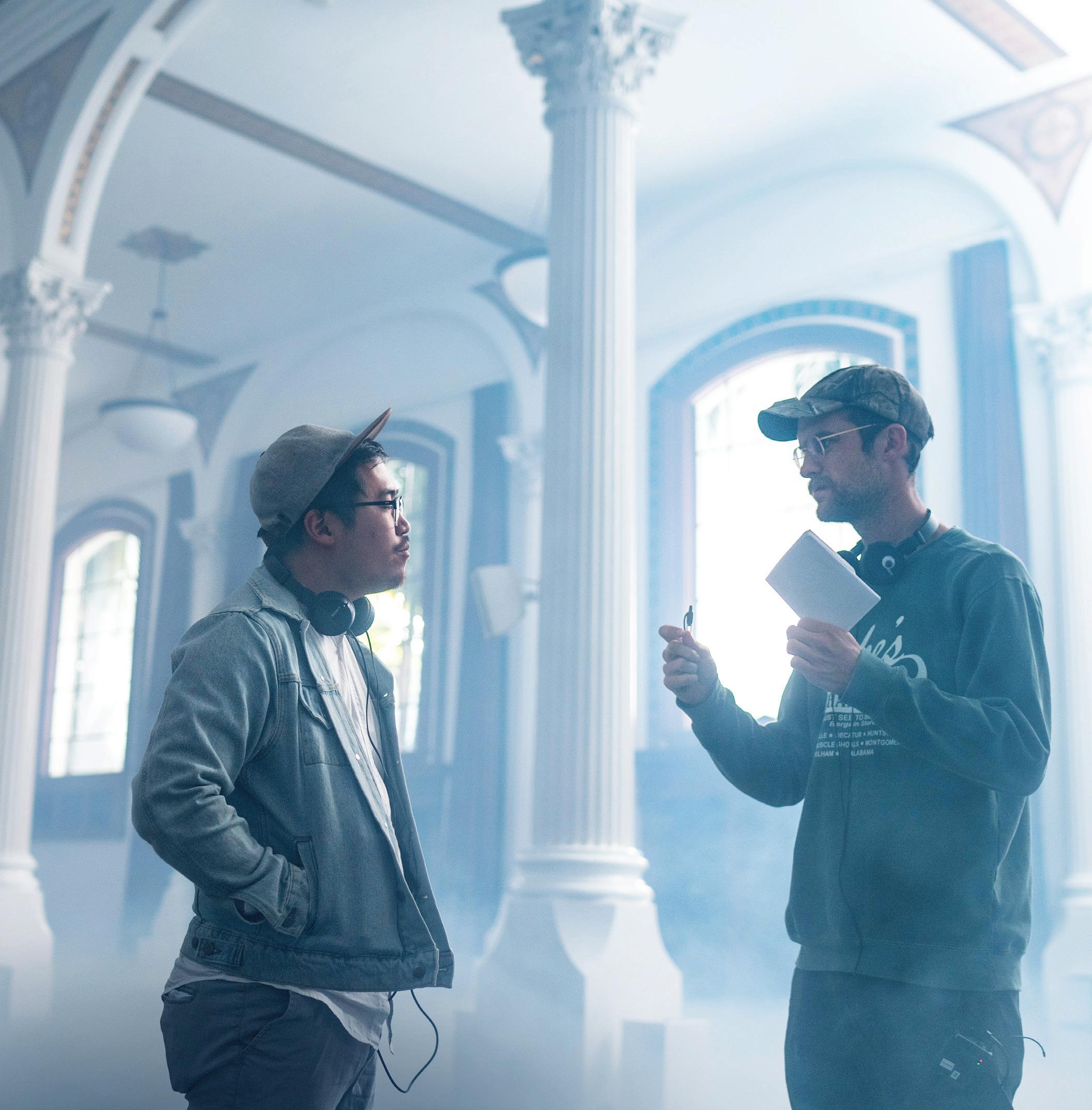
Cast your mind back to when the film premiered at SXSW. Were you nervous or did you know what you had?
DANIEL SCHEINERT: I think we knew. We were less nervous than Swiss Army Man because we had a distributor, we knew that the movie had crowd-pleasing qualities, and that SXSW is a very friendly place
where we’ve screened a lot of our very weird movies over the years. So, we were like, OK, this audience will be friendlier than some festivals to the weirdness. But the reception still humbled us and freaked us out. And it was the first time we got a taste of just how much people resonated with the emotional side of the movie, not just the action.
26 DEADLINE.COM/ AWARDSLINE A24/COURTESY EVERETT COLLECTION
The DANIELS The directing duo discuss the hive mind that gave us Everything Everywhere All At Once
★ ★ ★ ★ ★
The Best Of 2022 | Directors
It’s a film about levels, but it also works on many levels: there’s a level of spectacle, but there’s also a lot of emotion and philosophy, which is the most surprising element. How did you approach such a big story?
DAN KWAN: We’ve been directing together for 10 years, and we’ve slowly learned that we love to balance all those things. I don’t think we’d be happy if we only made a fun action movie, and I don’t think we’d be happy if we only made a philosophical treatise. And so, every time we come up with an idea, we always, in the back of our minds, know we have to pair it with these other things so that we get this beautiful constellation effect.
Is this an idea that you could have had independently of each other, or is this very much a product of the Daniels?
SCHEINERT: Totally. We always say we would make completely different movies if we were by ourselves, but in this case, it started with a silly idea Dan had and then he pitched it to me. I don’t like science fiction if it doesn’t acknowledge the philosophical repercussions of its premise—if it just brushes over that and it’s just fun—so I pushed back, and we stumbled into the bleak, meaningless direction the story might go. I don’t know which of us wanted it to be Chinese American first, but I do think that our internal conversations had made us hungry to explore that because our longtime producer is Chinese American, and Dan is. So, it’s definitely through conversation that the idea took shape. We’re always stress-testing each other’s ideas, being each other’s first sounding board.
How important was it to have a middle-aged woman as the center? Was that always the plan?
SCHEINERT: It was always our parents’ generation.
KWAN: Yeah. We always knew the film was going to be about generations, that gap that happens with every generation, because it felt like a really perfect way to explore
the multiverse and the way that we were trying to use the multiverse as a proxy for the internet, and how it’s really divided us and our own parents. But then the fact that it was about a mother came later. As we were exploring draft after draft, we slowly realized how much easier it was for us to write to our mothers. We have very strong-willed, interesting mothers who have... left an impression on us. And so, writing to that just felt way more personal and way more interesting and something that we talk about a lot. It became a movie that we hadn’t seen before.
Putting my mom in The Matrix was a very funny concept that, once we pitched it in those terms, we started to really get excited.
Do you have a particular axe to grind with the IRS? It’s something that upsets a lot of people at this time of year.
SCHEINERT: We’re not good at taxes, and we know that there’s this prejudice against the IRS, so we really wanted to tap into that [laughs]. But we do not have an axe to grind with them. We think they need more financing. We think Americans need to pay their fair share of taxes. We think it’s a hard job. They’re just underfunded, and we’ve got to make our tax code go after the billionaires.
KWAN: We wanted the biggest challenge at the end of the film not to be a bad guy with a big weapon or something like that. The hardest challenge to us was an empathy challenge. And so we thought, ‘OK,

who would it be hardest to empathize with? The awful, crotchety auditor.’ And so that felt like a really fun thing to play with.
The action scenes are tremendous. What’s the secret to directing kung fu?
SCHEINERT: You have to just rip off Hong Kong movies and hire the right people [laughs]. But from the very beginning, it was something we were very excited to do. We’ve always loved that kind of cinema and we’ve gotten to do little bits of it in our career.
KWAN: For both of us, how we look at filmmaking is, oddly enough, through an action movie lens. That’s what I grew up on. My favorite movies, growing up, were the Hong Kong action movies and James Cameron’s action films. Terminator 2 was one of my favorite movies of all time when I was five years old. And so even when, before we started actively making this film, our whole career we’ve been shooting music videos kind of like they’re action films.
There are so many universes, so many worlds. Were there any that didn’t make the cut?
SCHEINERT: There’s a lot that we wrote in the various drafts, and it took us a while to figure out, “What are the rules of what should stay and what should go in a movie that’s trying to go for too much?” And so, we whittled it down to universes that would definitely move Michelle’s character in a new direction. But there were two; there’s two that are on the Bluray that disappeared. One where
Alpha Waymond is a pacifist and Michelle is a talking urn, and it was a universe where they talk about how this action movie was all for nothing and that war is not the answer. But the most heartbreaking one to cut, which was in every draft of the script, was a universe where you meet Spaghetti Baby Noodle Boy, which is a little talking macaroni and Michelle’s a talking spaghetti, and they talk about what it’s like to be in a world filled with pasta people. It was all puppets. We shot it, but in the test screenings, nobody responded to it.
What did your mothers think of the film?
SCHEINERT: I still don’t really know what she thinks of the themes of it, but she laughed a lot at the accounting jokes, and she laughed a lot at the sex toys. I was like, “OK, I don’t fall that far from the tree. My mom is weird like me.”
KWAN: My mom is interesting because we’ve had a career of making things that push buttons. And so my mom has a very strange relationship with our work where something will come out and she’ll be like, “What is this? Why did you make that?” We did the video for Lil Jon, ‘Turn Down for What’, which is very aggressive and strange and sexual, and she was not into it at all. She’s seen our film three times. I don’t think she really understands it fully still, but she’s been to screenings, and she’s seen people react emotionally to the film in ways that I think she can appreciate.
Would you ever return to the multiverse or is that done now?
SCHEINERT: Technically, everything is part of the multiverse, right? It’s the biggest umbrella possible. But, no, I think we’re very excited by new challenges, so it’ll be a while before that feels like a new challenge. We do have one movie idea that is bigger and more ambitious and messier, and one movie idea that is focused and ambitious in the opposite direction, assuming we are capable of restraint. I think that’s a window into our brains. We’re always trying to go somewhere new, but we’re not sure which way we’ll go first.
★
DEADLINE.COM/ AWARDSLINE 27
From left: Stephanie Hsu, Michelle Yeoh and Ke Huy Quan.
Gina PRINCE-BYTHEWOOD
 BY DESTINY JACKSON
BY DESTINY JACKSON
all-female faction of West African soldiers known as the Agojie, the film follows its leader Nanisca (Viola Davis), and her fierce tribe of warriors as they defend the kingdom of Dahomey from a violent neighboring empire and Europeans capitalizing on the slave trade. Here, Prince-Bythewood talks about creating a sisterhood
Initially, you were approached to write and direct The Woman King but instead told the studio to come back to you when they had prepared a script. So, when you received the finalized script years later, what made you sign onto this project?
It was exhilarating to read. I knew immediately this was the film I had been dreaming about making since the beginning of my career. I’d also just promised that I would take a break [from filmmaking]. So, it was like, ‘Damn, this is my movie, but I’m going to have to say no.’ But I sent it to my husband and told him, “Just read this.” And he read it immediately and texted me, “This is your next film.” So that was like, ‘Oh my gosh, I get to do this.’ Because the balance of being a mother and a filmmaker is real. But with everything I wanted, Viola Davis attached, equipped with my body of work, and certainly with coming off The
Old Guard, I knew how to make this movie. I knew what the action could feel like and look like.
I had all the films that were my templates, like Gladiator and The Last of the Mohicans. I’ve studied those. I’ve seen them hundreds of times. And now I get to put my own stamp on this movie. So, the exhilaration never left.
Why do you think The Woman King needs to be told right now?
I think it’s a story that needs to be told over and over and over again. I think there is, I would not say a dearth, but there are no films that tell us about our history beyond enslavement in this country. Everything we learn starts there. And there’s so much more history that we need to be in touch with that we’re not. And it’s just such a mystery to so many, and we need that. We need to be able to see ourselves as heroic or as kings or as queens
and women kings; we’re missing that. And so those stories need to be told. Historical epics are great because they take you into a world and culture you may not be a part of, but you can connect with those characters. The world needs to do that with people that look like us. This took seven years to make, and I mean, Black Panther opened the door for this, which is beautiful. And I think these films should just keep building on each other, and the success of those will beget more stories that need to be told.
Nanisca delivers a line in the film that I feel encapsulates your experience here, “We are Agojie. We do not act alone; we move together with one purpose. Alone, you are weak.” How did you build this world and family dynamic? Building the Agojie women, that was a big one. And I knew specifically
how I was going to do that when I knew I needed them to do their own fighting stunts. Because it’s the best way to shoot action, action should be story-driven and character-driven, and to do that, you need performance. And if you’re cutting around stunt doubles to do it, it’s very hard to get that. But also, being an athlete myself, I knew they needed to feel what it feels like to train at that level, fight and be in their body, and trust and respect their body. With Danny Hernandez, my incredible fight coordinator, I created a program for them, and we had a strength trainer Gabriela Mclain help build their bodies first so they could withstand the training. But it was also about building up their physical and mental stamina. And that started months before shooting. I was adamant about that with the budget; I needed the time to build these women. This is not training for a month. We’re going to look cool. I needed months. And I knew that’s what it was going to take. And it was never about anyone losing weight; it was just about making their bodies athletic because they’re warriors. I need you to feel that on a molecular level.
28 DEADLINE.COM/ AWARDSLINE
MICHAEL ROWE/GETTY IMAGES FOR IMBD
For director Gina Prince-Bythewood, making the historical epic The Woman King was a dream come true. Despite dealing with a seven-year-long development process, Prince-Bythewood was determined to prove that Hollywood stories centering on powerful Black women deserve to be seen. Based on a real
of warriors, world-building, and the importance of seeing yourself on screen.
The Woman King director on the dedication needed to bring the West African war epic to the screen
★ ★ ★ ★ ★

It was six days a week, two times a day, weight training in the morning, and then in the afternoon, you’d come back, and you do weapons training, martial arts training, fight choreography, running, learning how to throw a punch. So many women don’t know how to throw a punch, and that’ll take you out of the movie in a second if you can’t run and if you can’t throw a punch. It was so intense, but I knew it would help them build their characters. I knew it was the best part of the rehearsal process because you’re starting the physicality and understanding who these women are. And I knew it would build a sisterhood because when you train that hard, there’s a lot of tears and breakdowns. But then, in that breakdown, you build each other back up. And I knew that’s what was going to happen. I would pair different people together to train at different times to build that relationship, and I knew that organic friendship would show up on screen.
How did you direct what others call a “career-defining” performance out of Viola Davis? How does one even direct Viola Davis? I’m not going to lie; that was my biggest intimidation. I literally said, “What am I going to possibly say to Viola Davis? How do I direct her?” And I think I went in with a whack assumption that probably everybody else does, that she steps on set, and she’s just great because she’s great. Viola is great, but she’s great because she works at it. And I got to have a frontrow seat to the level of work she puts into these characters. That’s where the fun began with her and I, building Nanisca and me, sharing books and videos of different people that embody both Nanisca, the survivor, and Nanisca, the warrior. Muhammad Ali and Claressa Shields were really good templates; I was sending her clips of them. The way they fought, they showed no emotion. And that’s what I thought Nanisca would be, just brutal efficiency to her, and that was my way in, in terms of directing her.
I’ve been in the ring. I used to kickbox, so I could talk to her about what she didn’t have knowledge of. And then, in building that comfort, I could start getting into character. And she’s the type that wants to be directed. She absolutely wants to be directed. She does not want to be left alone. And so that’s a great comfort as well. But it was like the first, I don’t know, couple of days, I finally went to her; I said, “I feel really stupid because every time I come up to you, I’m saying that was great.” Because it was. it was a really good collaborative relationship.
The rest of this ensemble cast is also fierce, with Thuso Mbedu, Lashana Lynch, Adrienne Warren and Sheila Atim.
This ensemble is insane, and they had an insane work ethic. But also, what I love about them is they were competitive in the best way. One of my favorite things in the film was the Oyo battle. You see a group of Agojie women leaping off their backs into the air with the machetes. So, I knew I wanted Lashana and Adrienne. Adrienne actually used to play ball back in the day, and Lashana played netball. So, when Adrienne came aboard first, she practiced and learned the [stunt] in about an hour. I told Lashana the night before, “I’d like you to do this thing, but I’m telling you the night before, so I understand if you say no. However, Adrienne learned how to do it in an hour.” And that was it. So, she was like, “Yeah, I’m in,” because I described it to her too, and she
was like, “That sounds dope.” And to see them on set asking, “Who went higher that take?” was fun. It’s like a healthy competitiveness. But they were hysterically funny and just connected in different ways.
The chemistry with Lashana and Thuso was amazing. It was really about building those relationships and staying open to the things that you’re discovering on set. And to do those scenes, like Izogie’s death and Nawi discovering who she was, as a director, those are the hardest things to do because part of directing is to create a space safe enough for them to give me everything. Building trust and getting to know each other and knowing what they’re going to be pulling from to give me those emotions and having to go again and again, it’s so hard because you’re asking someone to rip their guts out in front of a crowd for us.
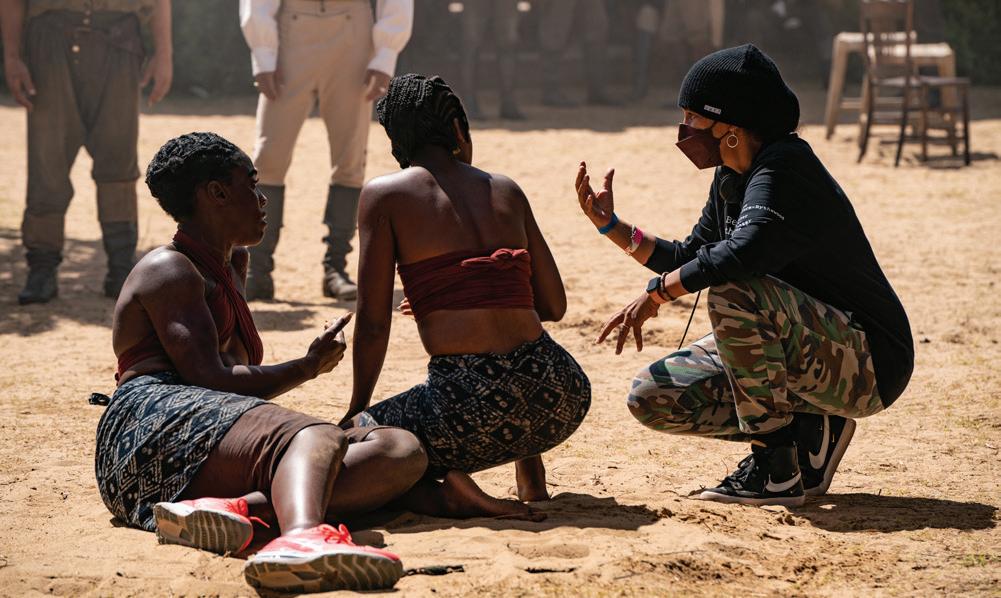
What did you learn about yourself through this film?
The strange thing is, I’ve always said, like always, that there’s no crying in directing. Just as a female director, you can’t ever show weakness. Being on this film and being with these women and the story of learning that vulnerability is a strength that absolutely shifted me now. Not like I cry all the time on set, but I can remember talking to Lashana the day we were going to shoot Izogie’s death. And I just went to her in the morning, I was like, “OK, how am I going to protect you throughout this day?” But we
just started talking about the scene, and I started to tear up because she was so real at that point. It’s like this is really Izogie’s last day in captivity. Lashana’s understanding of that [scene] helped. We could connect on a visceral level. And that’s what you need to do as a director, to be able to connect with your actors in that way.
A nomination would make you the first Black female directing nominee in Oscar history.
For The Woman King, we were doing a film that hadn’t been done before. It took seven years for someone to believe. And then, even with that belief, we were still questioned. If it failed, people would say, “Oh, you can’t make a movie starring Black women.” That’s just how our industry is. You can’t make an action film starring Black women. You can’t make a historical epic about anything other than what we’ve seen a hundred times before. So that’s where that self-imposed pressure comes in. And also, it was this ensemble of actors who trusted me implicitly. And in some ways, that’s scarier than having somebody not believing you. It’s like, ‘OK, I’m going to prove you wrong.’ I had to come through for them. And as for the conversation, it’s exciting because it means that people respect the film, that they’re moved by the film. You know, we put all this work into it, not for that. We put in all this work for it because we believed in the story, the characters, and the actors.
This is a big epic film with Black women at its core, which is a beautiful thing. So, to be in the conversation is a beautiful thing. It means we did what we set out to do. So, of course, when you hear this, it’s like, ‘How is that possible? In the entire history of the Oscars, a Black woman’s never been nominated?’ But then you know the industry, it’s also how rarely we get the opportunity to make films like this. This took seven years. So, it’s a beautiful thing to be in the conversation, but ultimately, it’s about the film.
★
30 DEADLINE.COM/ AWARDSLINE
ILZE KITSHOFF
Director Gina Prince-Bythewood on set with Lashana Lynch, left, and Thuso Mbedu.

S.S. RAJAMOULI
 BY DAMON WISE
BY DAMON WISE
Seeing is disbelieving when it comes to RRR, an Indian blockbuster set during the rule of the British Raj. Starring Telugu icons Ram Charan and N.T. Rama Rao Jr. (N.T.R.), it’s a lavish adventure based loosely—very loosely—on two legendary Indian freedom fighters, Alluri Sitarama Raju (Charan) and Komaram Bheem (N.T.R.). Whether these two ever did drive motorcycles through exploding trains, fight with lions and tigers and bears, and challenge Delhi’s high society to a dance battle is a moot point, the magic of S.S. Rajamouli’s delirious epic, the most expensive Indian movie ever, is that it piles on the spectacle without ever losing its sense of fun.
When did the idea for RRR first come to you?
I can’t pinpoint that, really. There were two or three thoughts running in my mind, in parallel. One was that I wanted to do a multi-starrer, bringing two heroes together. That always fascinated me: a story about two heroes. Another idea was when I saw The Motorcycle Diaries. All the while, we see the story of a normal young guy, and suddenly the director tells you it is Che Guevara. That was a brilliant idea, and I thought that could be adapted to many, many stories. Then I read about Alluri and Komaram. They were born around the same time, and they left their homes around the same time, but we don’t know what happened for a period of
two or three years. I thought these coincidences were beautiful because I could then go into a fictional account of their friendship. What if they met, and what if whatever you saw in RRR actually happened?
You invent all these amazing set pieces—how do they find their way into a movie?
For me, finding a particular plot of a movie is just an excuse to express my emotions in a very fantastic way. These kinds of ideas are always there; I just need to build a platform on which I can mount them. Once I get a sense of, ‘OK, we have two freedom fighters whom we look up to like demigods, and I’m going to tell a fictional tale about them,’ I don’t need
to stick to the facts. The points in the plotline enable me to do the fantastic action sequences. I like to stretch the audience’s imagination as far as possible and still make them feel for those action sequences. Not just a sense of awe, but also a kind of emotional feeling for the characters as the sequences are going forward.
Have you ever imagined anything that would be impossible to do?
No, nothing is actually impossible. No sequence, no thought is impossible; it’s just that you need to build the audience’s anticipation to get to that particular point. By that point, the audience should be wanting to see it happen on the screen. If you can make that happen, then I don’t think anything is impossible.
How long did it take for you to make this film?
We shot for about 320 days. It was spread over a period of three years or so. Because of Covid, we had to stop the film quite a lot of times.
What was the biggest challenge?
I think it’s quite obvious. The wild
animal sequence, which disrupts the party, I would say was the most difficult one in many aspects. For one thing, we were shooting at night. Second, it was a long sequence, so we had to shoot for, like, 45 nights. Then there were about 2,000 extras there, and when they were supposed to react in a certain way for [the CGI] animals that were obviously not there on the day of the shoot. For it all to be believable, they had to all perform in a certain way.
Music is a huge part of the movie. How do you work with music?
In Indian films, in particular RRR, we have to divide the music into two parts: the songs and the background score. To start with the background score: the way I form the scenes in my head during the shooting is that I see a kind of flow. Like, ‘OK, so this [scene] has a slow pace.’ Then the narration suddenly picks up pace and suddenly stops, so I want to stop for a moment, then rush into the moment. I always see the scene, and I visualize it in a kind of flow. When I sit with the composer, I try to explain that to him, and, luckily for me, he also talks about the flow of the emotion of the movie or a particular scene. We rarely discuss the actual music of the film. We just discuss things like, “I want to slow down. Is it slow enough?” or “I want to rapidly change gears. Is that changing rapidly enough?” These are the conversations we have a lot.
For the songs, in a way, it’s the same thing: “What are we going to convey to the audience with that song, and what should the flow be? What should the ebbs be?” [With RRR] things were different, however, because at the beginning of the film, we knew that we were going to have a dance song [“Naatu Naatu,” in which the two heroes challenge the British]. I needed to make it believable, so I had to create a long buildup scene for the song to happen. The song is a story in itself.
You’ve got two big stars in the film’s main roles. Where there any egos in this?
Dealing with stars usually would be a big, big problem. Luckily for me, it
32 DEADLINE.COM/ AWARDSLINE DVV ENTERTAINMENT
The director of action extravaganza RRR explains why you have to be realistic and demand the impossible
★ ★ ★ ★ ★

was not. I’ve worked with both of them before. We had huge successes when we worked together, and we are close. We have been friends for a long time, and apart from that, they both are also friends outside their professional life. In their personal life, they’re friends. So, all these factors worked for me, and I didn’t have any issues with them in such a long period considering the big-star status. It was quite a smooth sail.
That dance sequence would kill a lot of Western actors. I wonder if you ever had a moment where they said, “No, we can’t do this.”
Both of them are very good dancers, but even for them to leave their styles aside and do it in the exact same manner was a difficult thing. Yeah, they suffered a lot. They complained a lot, but they knew they had to do what has to be done, so they did it.
Is it true that the “Naatu Naatu” dance has become a bit of a thing? Yeah, it has. Even before the film released, when we released the song on the net, it went viral. It became a thing for any two people. Whether it’s a mother and daughter, whether it’s two friends, whether it’s a brother and sister, you just put your hand on the shoulder of the other person, do the step, and post it on social media. There were literally millions of versions of the song. It became a big viral thing and then it faded out. But now it has picked up again and people are doing the dance in different, unimaginable ways and posting it on social media.
Is this kind of film always what you set out to do? Your earlier films were not always on this scale. When did you realize this is where you wanted to pitch your artistry?
For a very, very long time, I always liked larger-than-life stories or characterizations, even before I came into films. Even in the early stages of my working as an assistant in different departments, I wanted to direct big action sequences, big-scale war films. That was always there. But,
obviously, in the early days of my career, I couldn’t do it. There would be no producer who would be willing to put that kind of money into that. Luckily for me, I had success upon success, where my market started increasing, and the producers got to know the kind of vision I had.
When did you realize that epic filmmaking was going to be the future for you? When did you realize that you could do whatever you wanted to do?
The want was there from the beginning. The realization gradually happened. I would say Magadheera is one of the films which I did, a part-period movie, which was a huge, huge success. And I also did a movie called Eega, which is the story of a housefly taking revenge on a human being, and it was a hugely successful film. So, the success of these two films, I think, gave me a lot of confidence [to think] that I could deal with very farfetched ideas and also deal with very large budgets and make them work. A combination of those two films, I would say.
What is Tollywood, and where do you fit into it?
[Laughs] I don’t like the word Tollywood. I don’t like the word Bollywood either, but gradually we’ve got used to it. But the point is, in India we have many states. Each state speaks its own language. So each language has a film industry of its own, many of them at least. Many states, about seven to eight, speak one language—Hindi. The
Hindi film industry is called Bollywood, and they have a larger market because they have a larger audience. I come from the Telugu film field where we have two Telugu-speaking states and I make Telugu films.
Well, this brings us very nicely to the success of RRR. It’s outgrown India even, it’s been a big success in the UK and in the States. When did you know that was going to happen?
I didn’t know. I still don’t know. Obviously, we knew that it’s going to appeal to the Indian audience in India and outside India. Also, we had a little bit of success with Baahubali in Japan, so we knew RRR had the scope to do well there, and maybe in few more Eastern countries. That’s what happened when it released in March 2022. But there were also many appreciative words coming from the West. Initially, we thought this must be a few white friends who went along with their Indian friends to watch the movie. But as the number of appreciations started increasing into hundreds and literally thousands, we realized this was much bigger than we thought.
And then [distributors] Variance Films said we could do a re-release in the West. Initially, we were skeptical, but their enthusiasm made us go ahead with it, and they had a very nice way of taking it to the people who matter: to reviewers, to influencers, to critics, people who saw the film and put in a good word to their followers. And at the same time the
film released on Netflix and it was topping the charts for 15 consecutive weeks. During this time, RRR started really, really going big in the West, and gradually we realized, “OK, there is really something more to this.”
There are stories that people have been dancing in the cinemas. Is that something you’ve witnessed? Well, in India, we see that a lot. We Indians celebrate by dancing, shouting, clapping, whistling at everything, it happens for almost all the bigticket films, at least on the opening weekend. But to see that happen with a Western audience is really unbelievable. I saw it firsthand in New York. They didn’t dance, but they were laughing and clapping. Then we traveled to LA and I saw it in the TCL Chinese IMAX Theatre with almost 1,000 people, 90% of them Americans. And they were shouting exactly the same way we would shout in the theater. And then the “Naatu Naatu” song came on. I saw them coming down the aisle, to the space in front of the screen, and dancing. I was on top of the world. And after that I saw it many times in Chicago, in San Francisco… In different screenings across the country, I saw the same kind of reception. It really, really felt great.
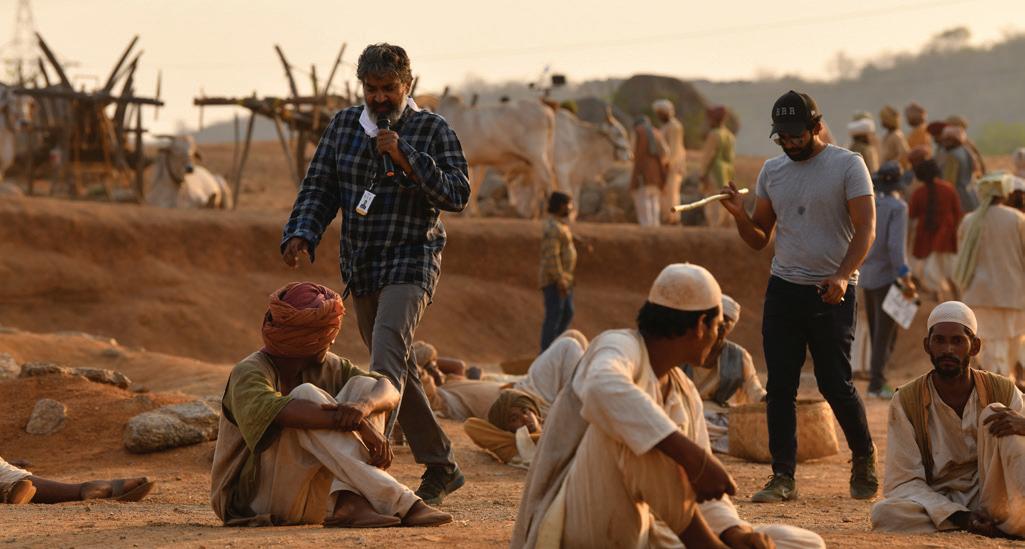
Did you always want the film to be seen on IMAX?
Yes. When I knew I’d be making larger-than-life stories, moments that are best experienced on a big screen, IMAX was always on my mind. So, yeah, the best experience of RRR is usually for the people who saw it on IMAX.
One last question: what’s your dream project?
Like I said, for a long time I wanted to do a big-scale war film, but that I have done with Baahubali, so my goal, or my dream, has been fulfilled. So, the biggest one for me would be to direct Mahabharata, the Indian epic. That would probably be a 10-year project. That would be my biggest dream. Hopefully, one day I’ll do that.★
34 DEADLINE.COM/ AWARDSLINE
DVV ENTERTAINMENT
Director S.S. Rajamouli on the set of RRR

Laura POITRAS
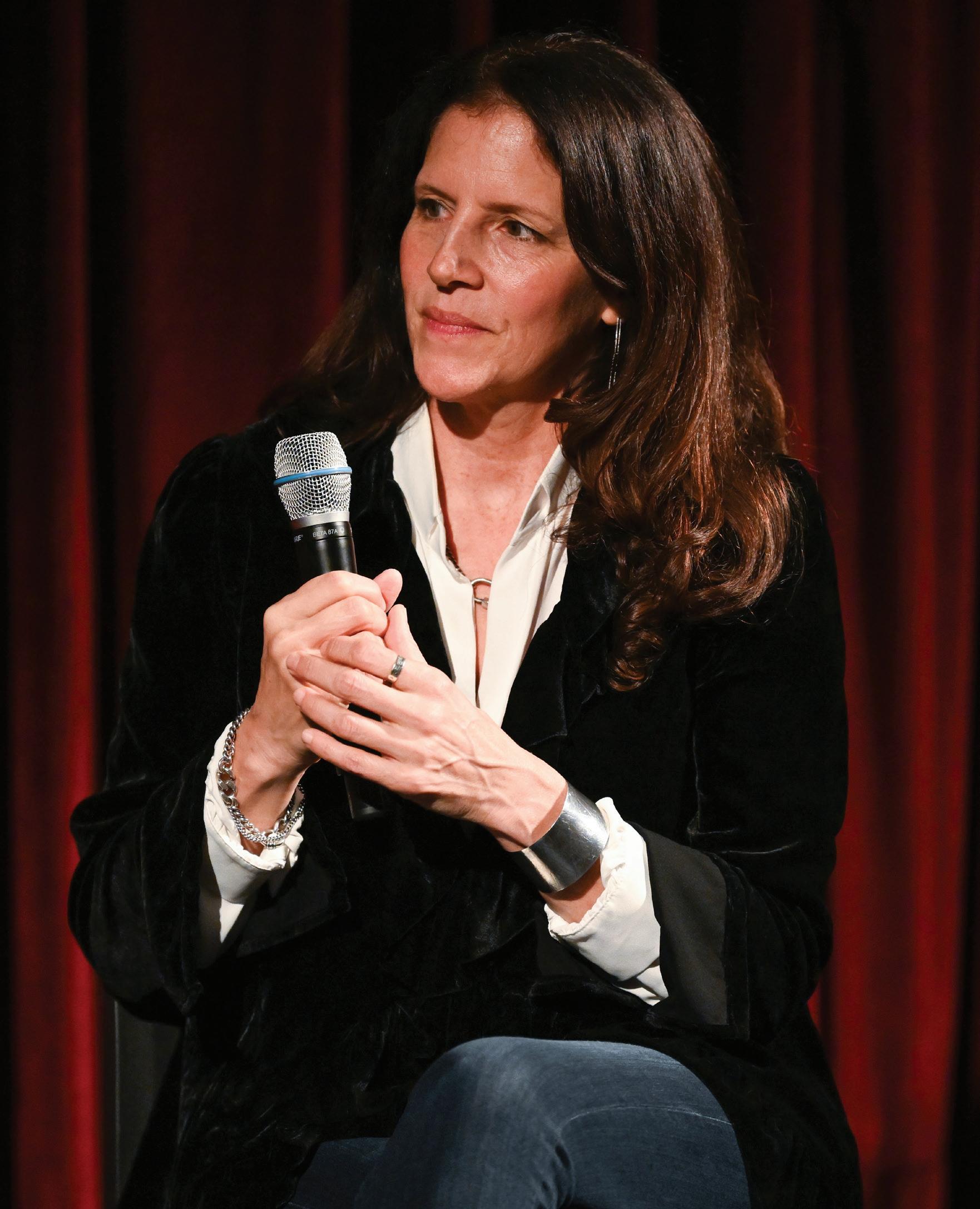 BY MATT CAREY
BY MATT CAREY
Individuals confronting the might of powerful institutions. That thematic focus unites much of the work of documentary filmmaker Laura Poitras. The Oath , from 2010, revolved around two men—one Yemeni, the other Saudi—entangled in the Bush administration’s war on terror. The 2015 Oscar-winning documentary Citizenfour centered on cyber intelligence contractor Edward Snowden, who exposed top-secret details of the NSA’s global surveillance program. Poitras returns to the Oscar race this year with All the Beauty and the Bloodshed , her film about artist Nan Goldin. The renowned photographer went up against the billionaire Sackler family, owners of OxyContin maker Purdue Pharma. Goldin became addicted to Purdue’s signature drug and later founded the organization PAIN to shame museums into cutting ties with the Sacklers, who burnished their name by donating handsomely to major art institutions.
When did you first become familiar with Nan Goldin and how did the documentary come about?
I encountered Nan’s work when I was in film school. I encountered The Ballad of Sexual Dependency, first as a book, and then I saw it being projected [as a slideshow]. I was really inspired by what she was doing in terms of cinematic language and in terms of framing, of mise en scène and using slideshows as a narrative device, just really groundbreaking.
So, I knew her work in that way, but I didn’t know her personally.
We met first when I was releasing Citizenfour—I was traveling with it, we happened to be at the same festival. And then fast-forward to 2019 where we met [again], and this is how this current film came about. She told me she had been documenting the work of PAIN, her organization confronting the Sacklers, and I was just really excited. I was like, “If there’s anything I can do to help…” She said, “Well, we’re looking for producers.” And then I ultimately volunteered for the project. So, this was a film that was very much initiated by Nan and her organization.
Goldin is one of the producers of the film. It’s somewhat unusual to have the subject of a film also be a producer on it.
It’s not that unusual. I think it’s a case-by-case. For instance, on Citizenfour, Ed [Snowden] could not be a producer. We were dealing with the NSA and he was very much a source. It would jeopardize him. But a film like this that was started by Nan and that is so much built around her artwork, it was important actually, essential, that she be part of this film. And she talks in the film about how she works with the people she photographs [permitting them to tear up photos if they want to]. There is this kind of collaborative relationship of how she works that I think we tried to incorporate into how this film was made.
The film creates a portrait of an artist and of a human being. And yet integral to it is this campaign of PAIN to expose and hold accountable the Sackler family. They’re two very connected things and yet, in a sense, separate. How did you manage to balance that in the storytelling?
There was an amazing editing team on this film, and Joe Bini—he has edited many of Werner Herzog’s films—he had these ideas around dramaturgy and produced a document that really articulated themes in this chapter structure… The first chapter is called “Merciless Logic”, which we learn is something Nan’s sister quoted of Joseph Conrad. It
36 DEADLINE.COM/ AWARDSLINE DANIEL ZUCHNIK/GETTY IMAGES
The All the Beauty and the Bloodshed director on going through “trapdoors” to hold those in power accountable
★ ★ ★ ★ ★

captured something—themes of a society, a cruel society that crushes people who are rebels and outsiders and who stand up to power. And it rewards people like the Sacklers who ruthlessly profit off people’s suffering and death. We had a very strong dramaturgy going into it that helped us narrow down the people that we wanted to focus on.
I love films of multiple story threads that you’re in one and then it’s sort of like you go down a rabbit hole and you’re someplace else, and then you go back. I love what that does as a viewer experience. And I think we were able to kind of do a bit of that in this film. There are trapdoors that we go down and we meet people—for instance, Tin Pan Alley and Maggie Smith at the bar in Times Square. This film allowed us to [do that] because Nan’s life is so extraordinary, we can draw upon or go to all these different places like P-Town [Provincetown, Massachusetts], an amazing queer community. There were possibilities because of Nan’s life and the materials from her personal archive.
How did we put it together? Believe me, it didn’t work
immediately. It worked on paper, and then it was a disaster on the timeline. It doesn’t just happen.
There’s this sort of iterative, iterative, iterative, [process], like, what is the information you need here to get you to the next place, but doesn’t have too much gravitational pull that you can’t leave it? And that’s just time, time, time.
One major connective thread between All the Beauty and the Bloodshed and your earlier films is this theme of people going up against powerful forces.
I think that is a continuum. Before I made documentaries, I came out of this much more experimental avantgarde film tradition. I’ve been working with different types of forms. I am drawn to the observational, like Ticking Clock, where there’s a drama.
This had that. It had this small group taking on the Sacklers; they’re having meetings, they’re being followed by some thuggish PI guy. It had a lot of ingredients and that kind of drama that my other films have.
But, again, Nan’s openness and a willingness to speak with such rawness and honesty about her life is something completely different. And that’s the collaboration with Nan. What’s the difference between this film? It is Nan, what she brings to this film is different than my past films.
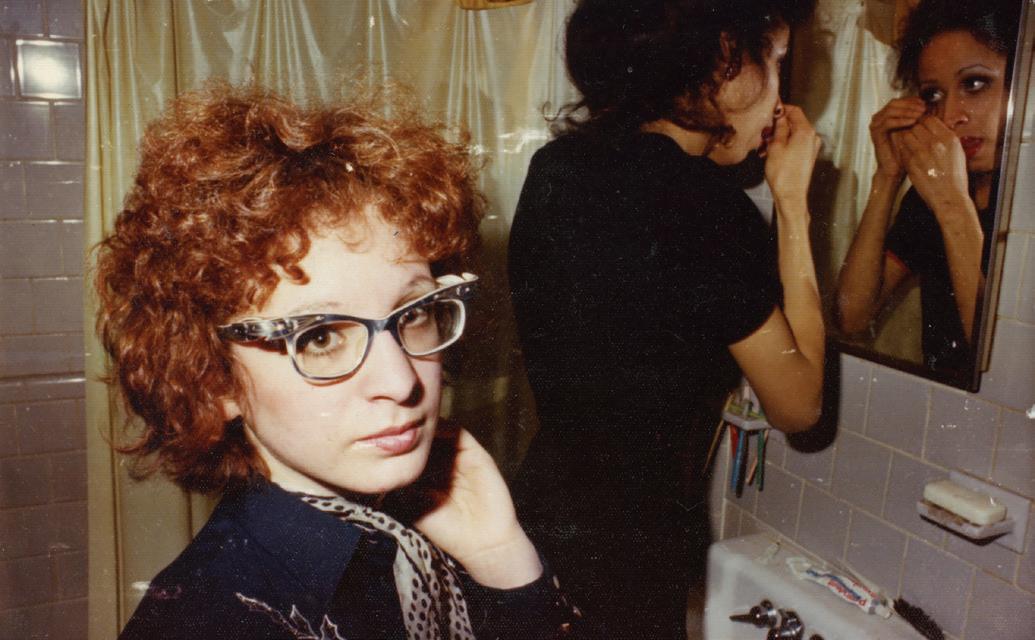
Did you identify with Nan and other people in the film—Megan
Kapler of PAIN and New Yorker writer Patrick Radden Keefe—who believed they were being surveilled? You’ve experienced that in one way or another because of the nature of your work.
I definitely identified with it. When I was working on the project they were pretty freaked out. The person who’s seen following them—he wasn’t hiding it. And we actually did a lot more research into that. We actually identified him, and we met him. I tried to flip him. I wanted him to go on the record and talk about who hired him, share all of the surveillance footage.
I just had this fantasy I could flip him. We did meet him, I wasn’t able to flip him and we didn’t include that [in the film]. We also really liked him, in the end, because he felt just like this working-class guy, trying to survive. And he also railed against big pharma. He was actually very in sync with Nan, even though he had scared the hell out of them… But, yeah, it did resonate for me. And it’s also showing the playbook, like this is what powerful people do. This is what [Harvey] Weinstein did, to try to intimidate his victims.
Your film won the Golden Lion at Venice, only the second documentary to accomplish that. How surprised were you to win the award? It was surreal, I mean truly surreal. I keep expecting to wake up, like, “Oh my God, that didn’t possibly happen.” We knew we were invited to
Venice, but we didn’t know we were in competition for a while. It matters to me—I believe nonfiction is cinema. But when we got the word that we made it into competition, for me, that was the victory of saying, “OK, great,” because it’s important that nonfiction sit alongside scripted work in how we understand cinema. So, I was just thrilled to be invited in competition and to show on that platform. I had no expectations [of winning]. That was not something I had even contemplated. So, it was amazing. It was really extraordinary.
You were recently named the Guest of Honor at IDFA in Amsterdam. You did a Q&A there with the festival’s artistic director, Orwa Nyrabia. I spoke with him afterwards and he was pleased to have teasingly accused you of secretly loving the United States, despite the thrust of much of your work. That was so funny. I was just like, “Hope and love? What are you asking?” But yeah, as I said there, I feel an obligation as a citizen of this country to continue to interrogate its power. But “love” isn’t the word I would use to describe that relationship.
Do you see yourself as a dissident? That’s not really a term used in an American context, but I wondered if you perceive yourself that way. I’d certainly, I guess, put myself in company with some people who embrace that term. As I said in the talk with Orwa, one of my jobs is sort of exposing the myth of American exceptionalism. And I don’t think that’s necessarily a dissident position. I think that’s more like, “Let’s not pretend that we’re not part of a global empire. Let’s not pretend we don’t have proxy wars that are dropping drone attacks and assassinating people in other countries. Let’s look at things with the truth and be adversarial towards that,” which fits more into maybe some description of a journalist than a dissident. But I’ll leave it to others.★
38 DEADLINE.COM/ AWARDSLINE
Activist and artist Nan Golding.
NAN GOLDING
I love films of multiple story threads that you’re in one and then it’s sort of like you go down a rabbit hole and you’re somewhere else, and then you go back.

Edward BERGER
BY DAMON WISE
Edward Berger caused a splash in 2015 with hit TV series Deutschland 83 , a slow-build spy drama set in the deep freeze of the cold war. This year he went even further back into Germany’s history for All Quiet on the Western Front , a brutal retelling of Erich Maria Remarque’s World War I novel, published in 1929. After years in limbo, the project received an adrenaline shot when Berger came on board to take the story back to its German roots. The harrowing Netflix production has gripped audiences with the story of rookie soldier Paul Bäumer (Felix Kammerer) and has become a strong awards-season contender.
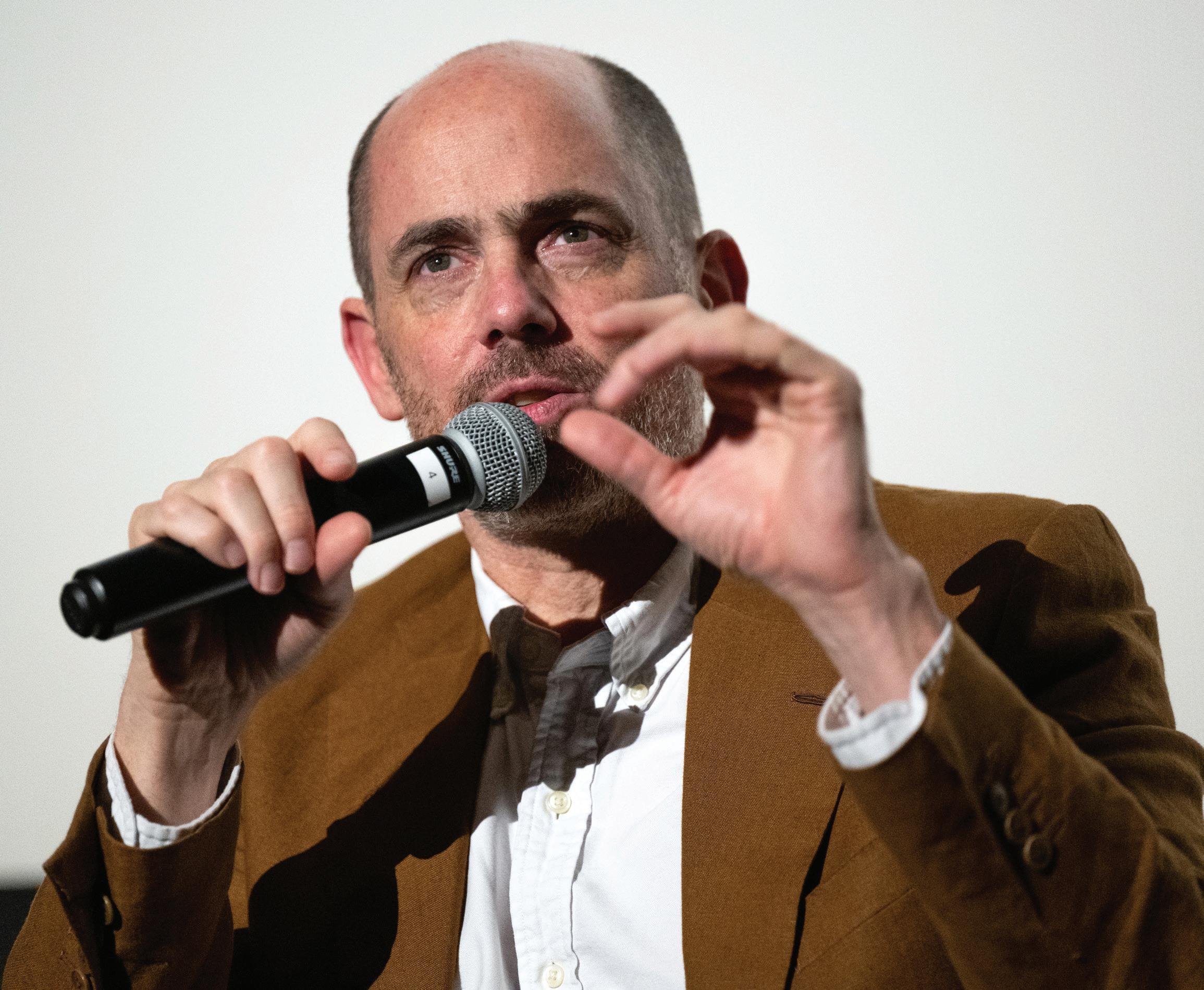
This project has been gestating for a long time. When did you first hear about it?
Just before the Berlin Film Festival in 2020, so, by now, it’s almost three years ago. The initial instinct was that it was a really good idea, but, of course, I wanted to go home and talk about it. I’m always riddled with doubt about what the next film should be, so I talk through it at the dinner table. Normally, the moment I bring up my next project, my kids disappear. They think, ‘Oh, it’s so boring.’ But this time, my daughter heard the title and she whipped around and said, “All Quiet on the Western Front? You absolutely have to do it. It’s the book that’s touched me most. I cried three times. I just read it in school.”
How old are your kids?
She was 17 at the time. She’s now 20. I thought, ‘If a book still has such an impact on a 17-year-old girl something like 90 years after its publication...’— and it’s a war novel, it’s not really meant to entertain a 17-year-old girl— ’there must be some relevance left to it.’ And then I read the script and I felt it was a great basis to add to. For me, the big reason to make it again was to go back to the German novel and make a German film out of it.
What did the scriptwriting process involve?
The North Star during the rewriting and the planning of the movie was always the novel, which has a really interesting reportage feeling. We tried to find a mixture of styles, and
40 DEADLINE.COM/ AWARDSLINE AMANDA EDWARDS/GETTY IMAGES
The German director on the horror and humanity of All Quiet on the Western Front
★ ★ ★ ★ ★

first of all, we tried to hit that tone by saying, “Let’s grab the audience by the collar and drag them through the mud, make them feel that they are there. Make it a really subjective, visceral experience.” But it’s a hard balance to strike—at the same time, you have to stay five inches further back to get this kind of observational style. In terms of the scale of the film, a lot of it came from that final script. James Friend, the cameraman, and I sat down with it and asked each other what kind of shots we needed. Some scenes need a wide shot, and suddenly that scene would feel big But it needs to feel big, because the people in the story are, in a way, very small. They’re pawns. And sometimes you need to get the feeling that you’re getting lost in the utter chaos that’s all around you.
How did you cast the film?
For the soldiers, it was important that you hadn’t seen these actors before. They’re so iconic, these roles, that it was important that you should meet them with a certain innocence, that you don’t go, “Oh, I’ve seen them in Harry Potter…”. [For a time, Daniel Radcliffe was attached to the project.] I needed a new actor, a new face, to associate with Paul Bäumer. It’s such an iconic literary role.
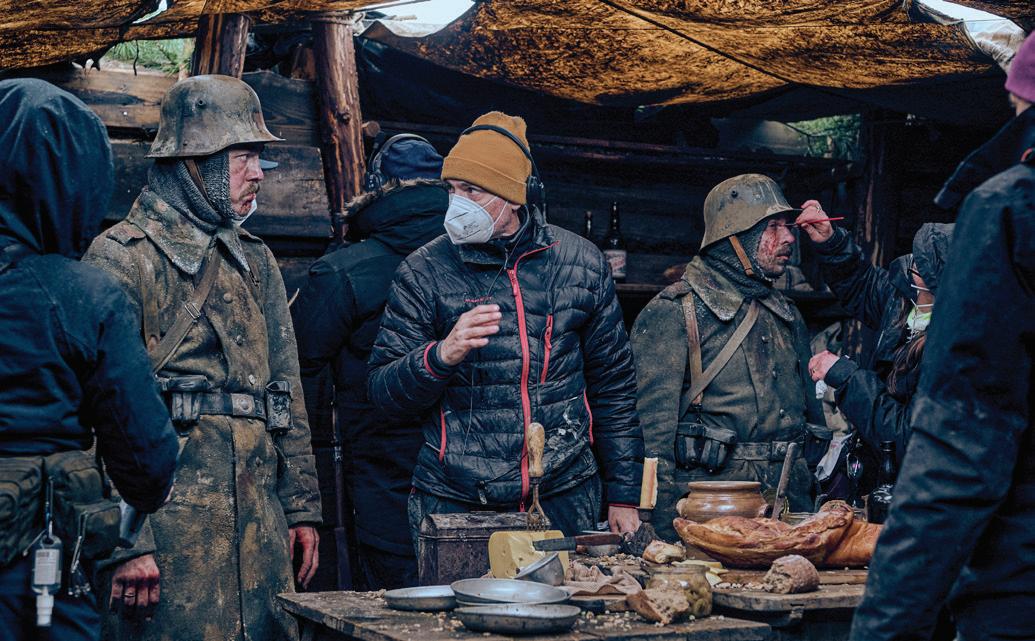
Did they have to do any kind of boot camp to prepare?
Yes. They did, for a week or two. They had to learn how to salute and do these military things that none of us know how to do. So, there was a military advisor, and the stuntmen put them through a physical boot camp so that they wouldn’t hurt themselves when running across the field. Then there was the armorer, who taught them how to shoot and throw grenades. It was interesting when they came to set... I mean, I call them ‘the kids’ but they were in their early 20s. We did a costume test, and that was the first time they had their uniforms on. They were very excited about making this movie, this adventure we were about to embark on.
They soon found out it was going to be a lot of really hard work.
That must have been good for the film, surely?
It was. I saw in their faces the same innocence that the kids have in the beginning of the film, going off to war. I thought, ‘That’s what it must have felt like to them.’ Going away from their parents for the first time, into a foreign country. They treated it as an adventure. They were excited about it, and very, very early on they found out that it was just… horror.
How old was Felix when you shot the movie?
Felix was about 23 or 24 when we made the film. He’s older than Paul Bäumer, who’s 18 in the movie. But I also cast a lot of 18-year-olds, and I felt like, ‘Well they’re just kids.’ They’re almost too innocent. But at 24 you’ve been away from home for a little bit. You’ve had your first disappointments, maybe. There’s something in your eyes, a certain wisdom, that you’ve learned. So, Felix was exactly the right age to play both ends: to play the young, innocent kid who wants to go into this adventure and the guy who’s aged before his time.
How do you approach violence in a film like this? How do you know how much is too much and how much is not enough?
The book is very violent. It’s really
brutal. Then again, I felt it had to be pretty brutal, because anything that feels glossed over would be untruthful and therefore propaganda, kind of glorifying it. And so, I wanted to make it a physical, visceral experience, putting the audience right into it. Which includes violence.
But what’s enough and what’s not enough? That’s so subjective. It’s just about having an inner compass, where you say, “I don’t want to see this anymore.” But sometimes that can be good. Sometimes you need to be able to turn away from a movie, to be repulsed by it. I don’t want you to watch the whole movie and just go, “OK.” [He shrugs] You need to be physically attacked by the violence. You need to feel the impact of the violence.
The scene where Felix kills a French soldier is very difficult to watch. At first, he doesn’t see that he’s been programmed to kill, and then he realizes that he doesn’t want to kill... And then he tries to undo this terrible thing that he’s done. “Programmed to kill” is a great way of putting it. And then he realizes, ‘Why am I doing this? This guy’s just like me.’ In that scene, I don’t think it’s so much the violence, because the scene isn’t really that violent. It’s just relentless. This scene was actually sort of shot in real-time. He jumps in, stabs the guy, crawls away, realizes he’s still alive, tries to get out of the crater, gets shot, crawls back, tries to
shut him up, tries to give him water, and we witness every second of it. In other films, you might go, “Well let’s take one step and then cut to a close-up, and shorten the walk just to speed up the scene.” We didn’t do that in this scene. We just kept you there for every second of it.
That scene, by the way, was three pages long in the script, and, usually, a page is a minute. I’d rehearsed it before the shoot, in a rehearsal room, and then we rehearsed it on set. It was 10 minutes long, and we’d only scheduled a day and a half. The AD came to me and said, “Can you simplify this? Because if you shoot it like this, it’ll take three or four days.”
What did you do?
I just ignored him because my daughter had singled out that scene. She said to me, “That scene in the crater when he kills the Frenchman is so hard to read.” It’s hard to read because you witness every second of it. And I knew I had to get this scene right in order not to disappoint her. And so, we did, in the end, spend three days on it. It was very hard for everyone to achieve it, but it was really important to get every single step of it. ★
42 DEADLINE.COM/ AWARDSLINE REINER BAJO/NETFLIX
Edward Berger on the set of All Quiet on the Western Front
Well, the book is very violent. It’s really brutal. Then again, I felt it had to be pretty brutal, because anything that feels glossed over would be untruthful and therefore propaganda...
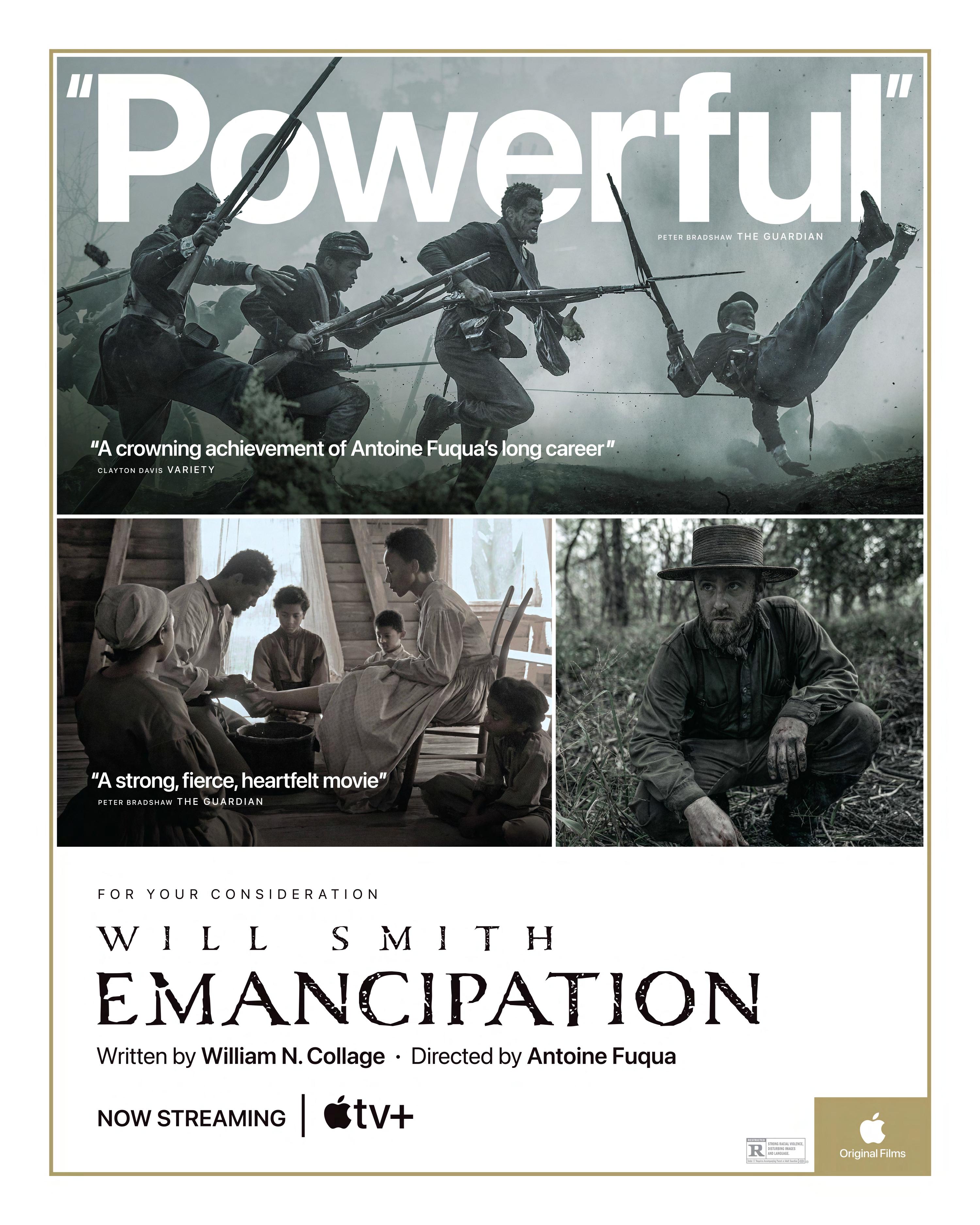
Costume Design
Powered Up
How costume designers Ruth E. Carter , Mayes C. Rubeo , Glyn Dillon and David Crossman brought

superheroes to the next level
By Ryan Fleming
From comics to films, superhero stories have always had an impassioned audience. This Oscar season has seen new people donning the mantle of the heroes, which gives the costume designers the chance to elevate their design while still paying homage to the original comics.

After the death of Chadwick Boseman, Black Panther: Wakanda Forever brings a new Black Panther into the fold and elevates the role of Queen Ramonda. The Batman sees a new actor taking on the role of the caped crusader, with an updated “Batsuit” to match the gritty realness of the film. Mighty Thor makes her Marvel debut in Thor: Love and Thunder , while the original Thor’s costume changes in response.

44 DEADLINE.COM/ AWARDSLINE
MARVEL/WALT DISNEY STUDIOS/WARNER BROS./COURTESY EVERETT COLLECTION
Black Panther: Wakanda Forever
Making a sequel to Black Panther was no easy task. After the loss of Chadwick Boseman, the script needed to be rewritten and the mantle of Black Panther needed to be passed onto a new character. Costume designer Ruth E. Carter needed to not only create a suit for Wakanda’s new champion, but also to elevate Queen Ramonda (Angela Bassett)’s appearance as she became the new leader.
In the first film, Queen Ramonda is next to King T’Challa (Boseman) in an advisory role, which allowed her outfit to be more relaxed as she was no longer the face of the nation. After the King’s passing, she takes a more direct role as ruler, which meant that her costume needed an update. “We see a strong presence of metal,” Carter says. “Her crown has been elevated and she has a collar to her dress that’s been 3D-printed and painted to look like metal.” Though she needs to exude the strength of a ruler, Carter wanted to keep her arms exposed to show that she is still vulnerable in that power. “For Angela Bassett, that is her strongest asset,” she says. “Those powerful arms of hers.”
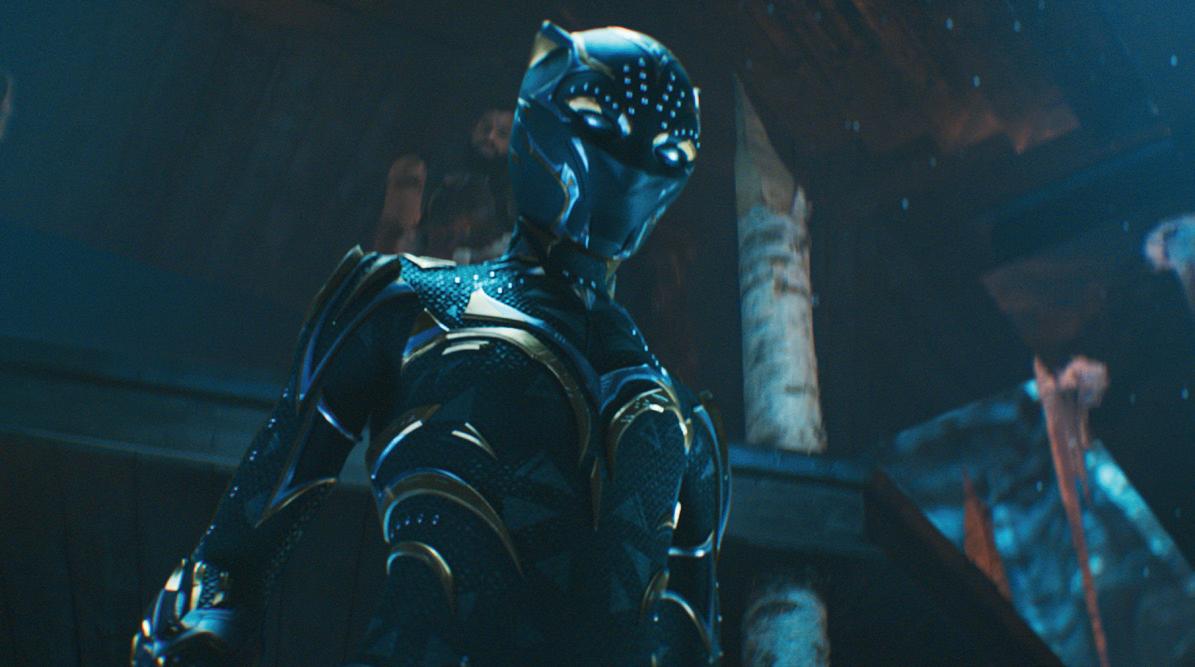
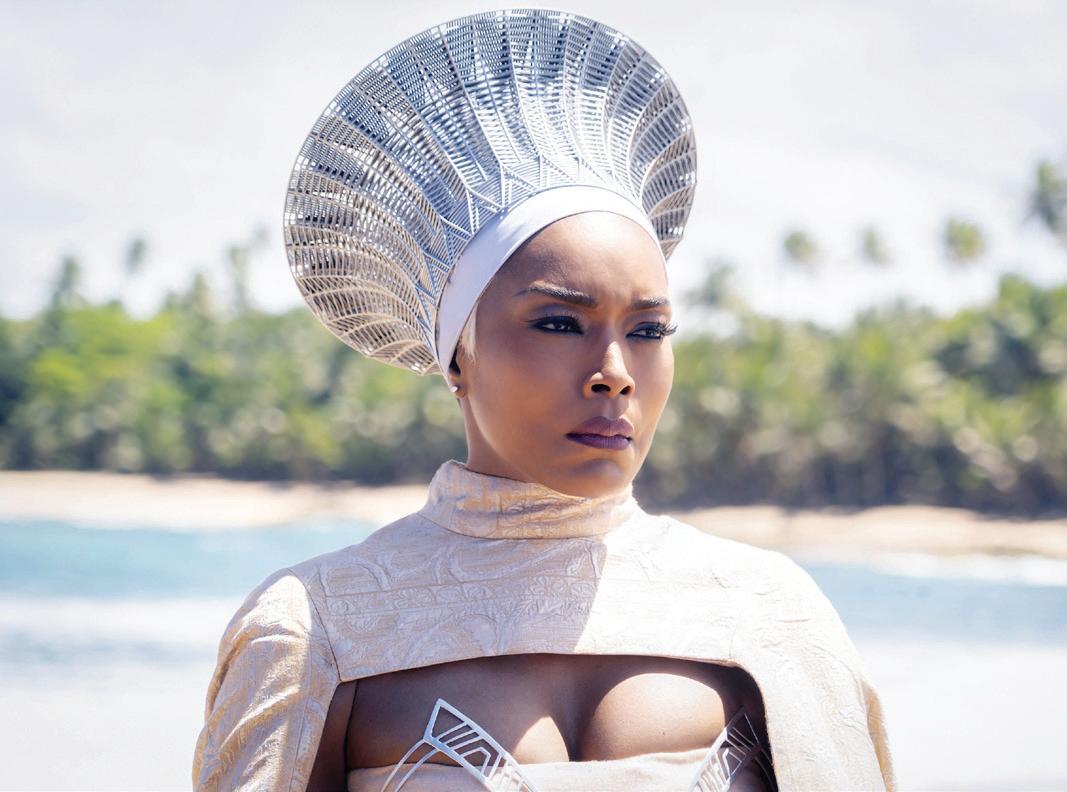
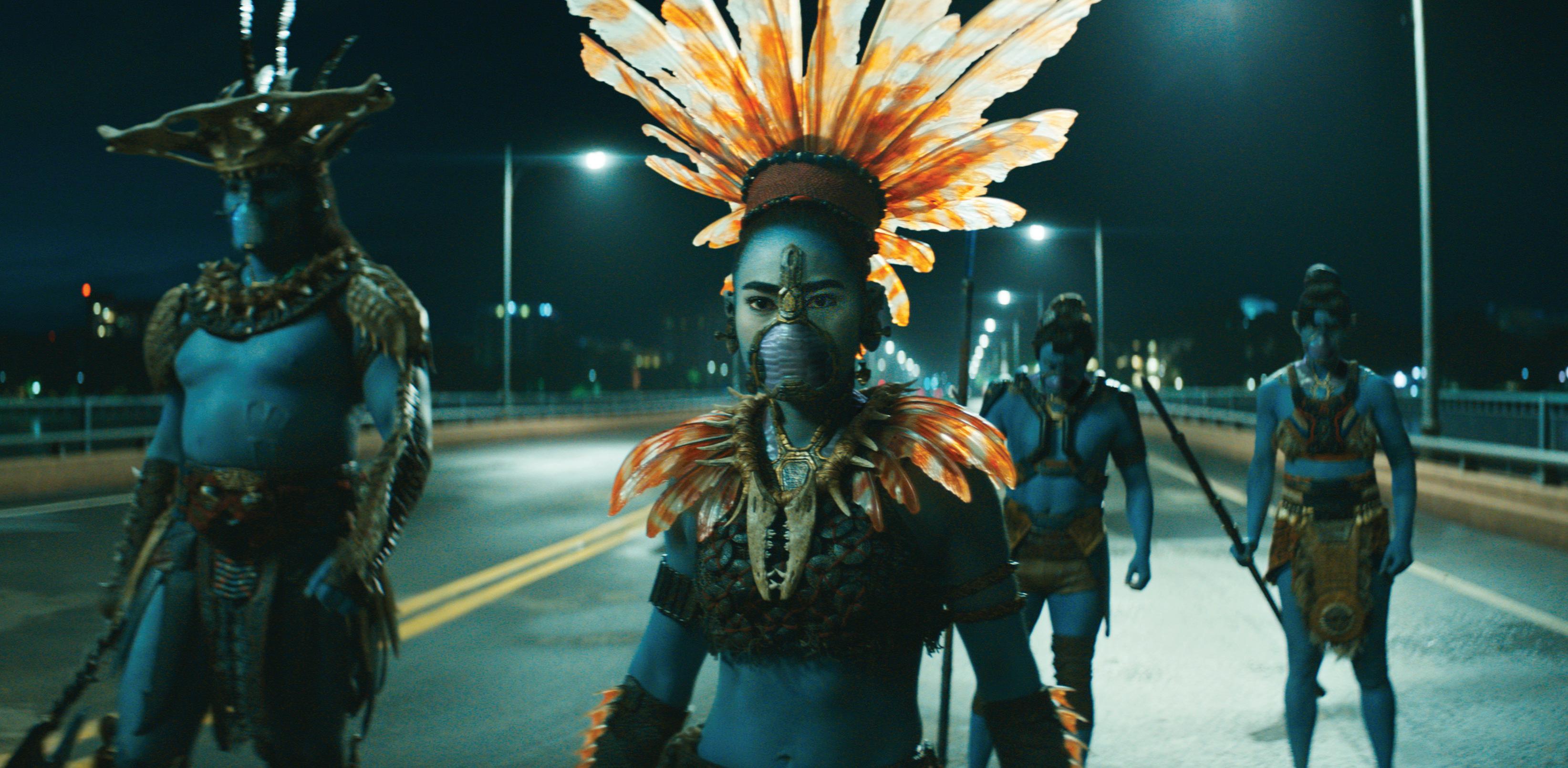
When Wakanda is threatened by an adversary, Princess Shuri (Letitia Wright) is forced to take on the mantle of the Black Panther. “We didn’t go too far away from her form, the silhouette of a woman, with a bust and hips and shoulders,” says Carter. “But we also wanted to delicately enhance the dynamic figure of the panther suit.” Whereas T’Challa’s suit was adorned with silver vibranium, Carter wanted Shuri’s suit to have a combination of gold and silver elements. The design went through a lengthy process until they decided that “adding more of the striations on the suit gives it a bit more brilliance than the former Panther suit,” she says. “T’Challa’s suit highlighted the physique. In this case, we also highlight the adornments, and that’s what gives it its femininity.”
The biggest challenge for Carter was creating costumes that could function underwater. “Clothes aren’t meant to be worn underwater for eight hours and used again the next day,” she says. “We had to rethink everything about what fibers could go in water and still look organic.” The clothing needed to be weighted as well, while still looking elegant. “We’d like to think clothes look like ballet all the time in water, but they just rise up.”
DEADLINE.COM/ AWARDSLINE 45
From Top: Alex Livinalli as Attuma and Mabel Cadena as Namora; Angela Bassett as Queen Ramona; Letitia Wright as the new Black Panther.
Costume Design
The Batman
Director Matt Reeves brought a new actor, Robert Pattinson, into the Batman role, and two costume designers, Glyn Dillon and David Crossman, with the sole purpose of designing the signature Batsuit. “There are four crucial ingredients to a Batsuit,” says Dillon: “The cape, the cowl, the utility belt and the all-important insignia, or bat symbol.”
For this Batman, Reeves wanted the character to be grounded in reality, with every piece of the suit having a purpose. “Matt definitely wanted the suit to be utilitarian,” says Dillon, “and importantly, it had to be a suit that Robert could move and fight in. Practicality and mobility were the main concerns.”
Dillon and Crossman managed to make even the bat insignia and the cape utilitarian, as the former doubled as a blade and the latter transformed into a wingsuit.
In addition to the action sequences that make up any superhero film, the story sees Batman play detective, as he tries to solve the puzzles left for him by Paul Dano’s Riddler at each scene. “It was important to have a more neutral expression on the cowl,” Dillon says. “I thought it would be cool if the cowl had the stillness of a skull, and that meant Robert was free to do more with his eyes.”
Although the cowl had the appearance of moulded leather, Dillon says it was actually 3D-printed and molded in rubber. “But it was sewn by hand,” he says, “because printing and molding the stitches
didn’t look good enough, so the tiny stitch holes were sculpted in the computer, and then we had the amazing team in Jenny Alford’s workshop putting the stitches in by hand.” The suit itself was created with nylon to give the appearance of bulletproof Kevlar, while the cape was made out of Japanese faux leather to give it weight.
The design was inspired by the comics, but Dillon says the main idea behind this iteration of the Batsuit was its gritty realness. “For instance, his utility belt in the comics is yellow or gold and that’s carried through to most of the films,” he says, “but we liked the idea that he would use stuff that cops would use, leather ammo packs and handcuff holders etc… it feels much closer to ‘Special Forces’ than Spandex.”



46 DEADLINE.COM/ AWARDSLINE
WARNER BROS./ MARVEL/WALT DISNEY STUDIOS.
Clockwise, from Left: Robert Pattinson as Batman; Jeffrey Wright as James Gordon with Pattinson as Batman.
Thor: Love and Thunder
As the costume designer of Taika Waititi’s Thor: Ragnarok , Mayes C. Rubeo was already familiar with the thunder god’s lore. In Thor: Love and Thunder , Rubeo was able to use that lore to create the costume for Dr. Jane Foster (Natalie Portman), as she wields Mjölnir and becomes Mighty Thor. “It was based on the old comics,” Rubeo says. “We try to honor those iconic costumes in a way and transport them to a modern era with technology.” Although she doesn’t want to stray too far from the comics, Rubeo’s designs take modern materials into updated look. “The audience is looking for something really amazing, for new materials that are so modern and flexible and versatile,” she says.
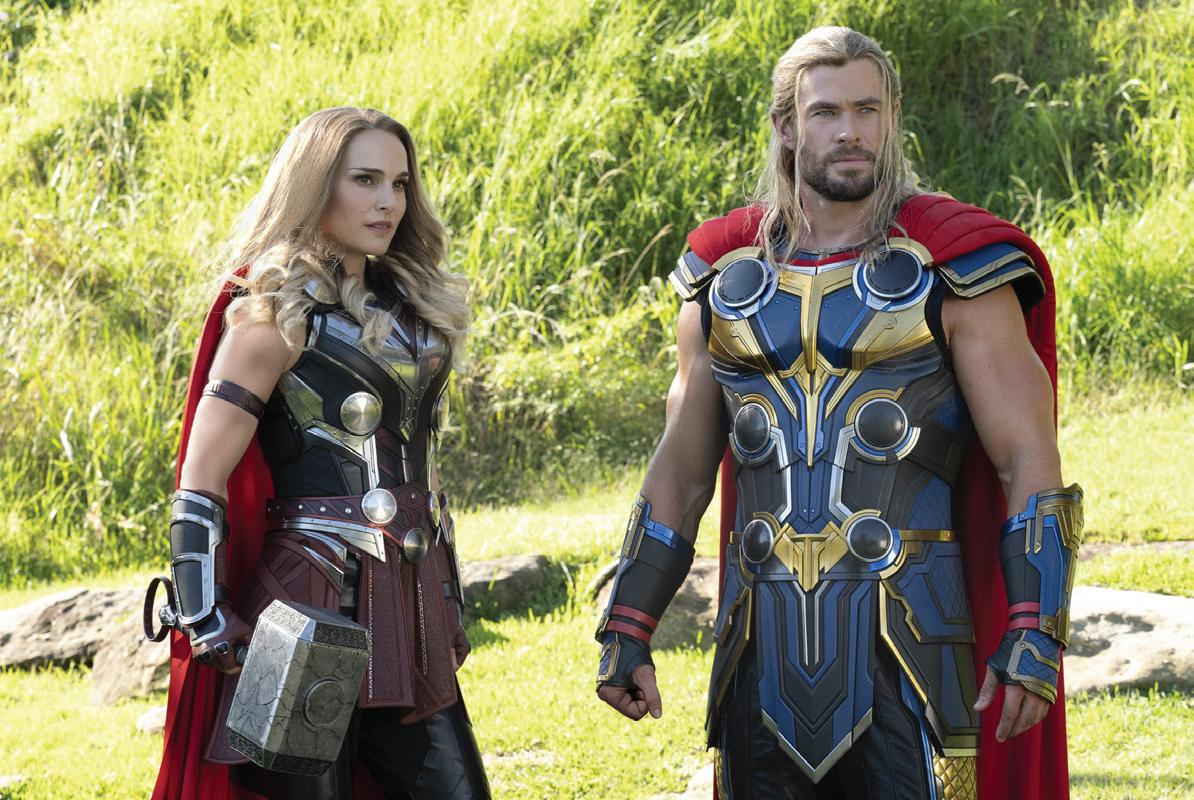

Since Portman is vegan, it was important to Rubeo that she make her costume out of materials that did not come from animal products. “For the most part, her costumes are plastic and synthetic materials,” she says. “I respect her so much, and the least I could do is to accommodate this to make her costume.”
Compared to Mighty Thor’s subdued colors of silver and black, Thor’s appearance in the film has become flashier in response to his ex-girlfriend. “Thor is going through a moment of insecurity,” says Rubeo. “Imagine when an animal wants to be more intimidating—he grows bigger and he gets shinier and brighter.” To highlight this change, Rubeo dressed Thor in what she calls the “insecure Thor outfit,” with vibrant golds and blues as a way of peacocking around Jane.

Most of the costume choices are directly inspired by the comics, but Gorr the God Butcher (Christian Bale) had an important color change. “In the comic books, Gorr was all in black,” says Rubeo. Since black was being used so much in other costumes, she decided that dressing the villain in white would be a great contrast to vibrant colors used with the superheroes. “The villain doesn’t have to be in black to be a villain,” she says, “[white] is also very scary.” As a character that has lost everything and resides in the shadow realm, Gorr’s white outfit matches his pale complexion to create a character that is devoid of any color but still stands out against the shadows he commands. “Sometimes his complexion is whiter; sometimes he has a flesh color but is still very pale,” she says. “It was really striking to see him in this fashion.” ★

DEADLINE.COM/ AWARDSLINE 47
From Top: Mighty Thor and Thor; Christian Bale as Gorr the God Butcher.
Natalie Portman as Mighty Thor.
Chris Hemsworth as Thor.
DOMHNALL GLEESON
THE PATIENT
BY LYNETTE RICE
In FX’s The Patient, Domhnall Gleeson plays a foodie named Sam Fortner who has a voracious appetite for killing—so he kidnaps his therapist Alan Strauss (Steve Carell) and chains him in his basement for round-the-clock analysis. It’s a recipe for disaster, and Gleeson— perhaps best known for playing General Hux in the Star Wars franchise—is a master at serving up the scares.
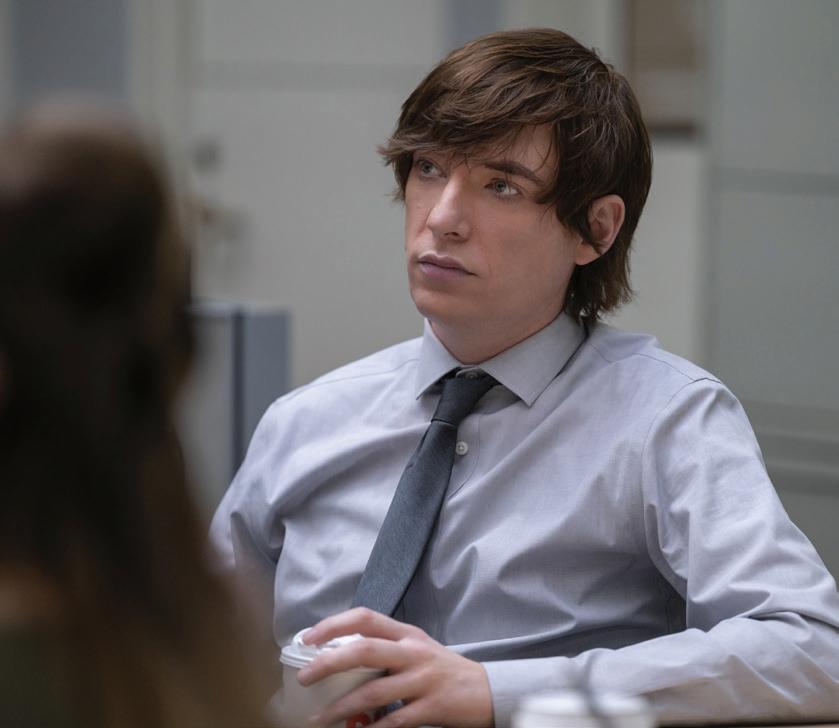

Are you prepared for people to come up to you and say, “You make an excellent serial killer?”
I feel so good about it. I played a person who had done similarly awful things once before in a film called Calvary [with his father, Brendan Gleeson], but that was for half a day, and I prepared for that for like a month ahead of time. On this, I got to do that kind of prep. I got to have this guy in my world every day to show all different sides of him. He really made me laugh even though he was such an awful person, and he was trying. And so yeah, if people come up and say you’re a good serial killer, as long as they’re talking about the show, then I’m more than happy.
When showrunner-writers Joel Fields and Joseph Weisberg first cast you, did they let you know how it was going to end? No. A lot of the conversations we had were about whether it was possible for Sam to get better, whether it was a futile wish on Sam’s part, or whether he
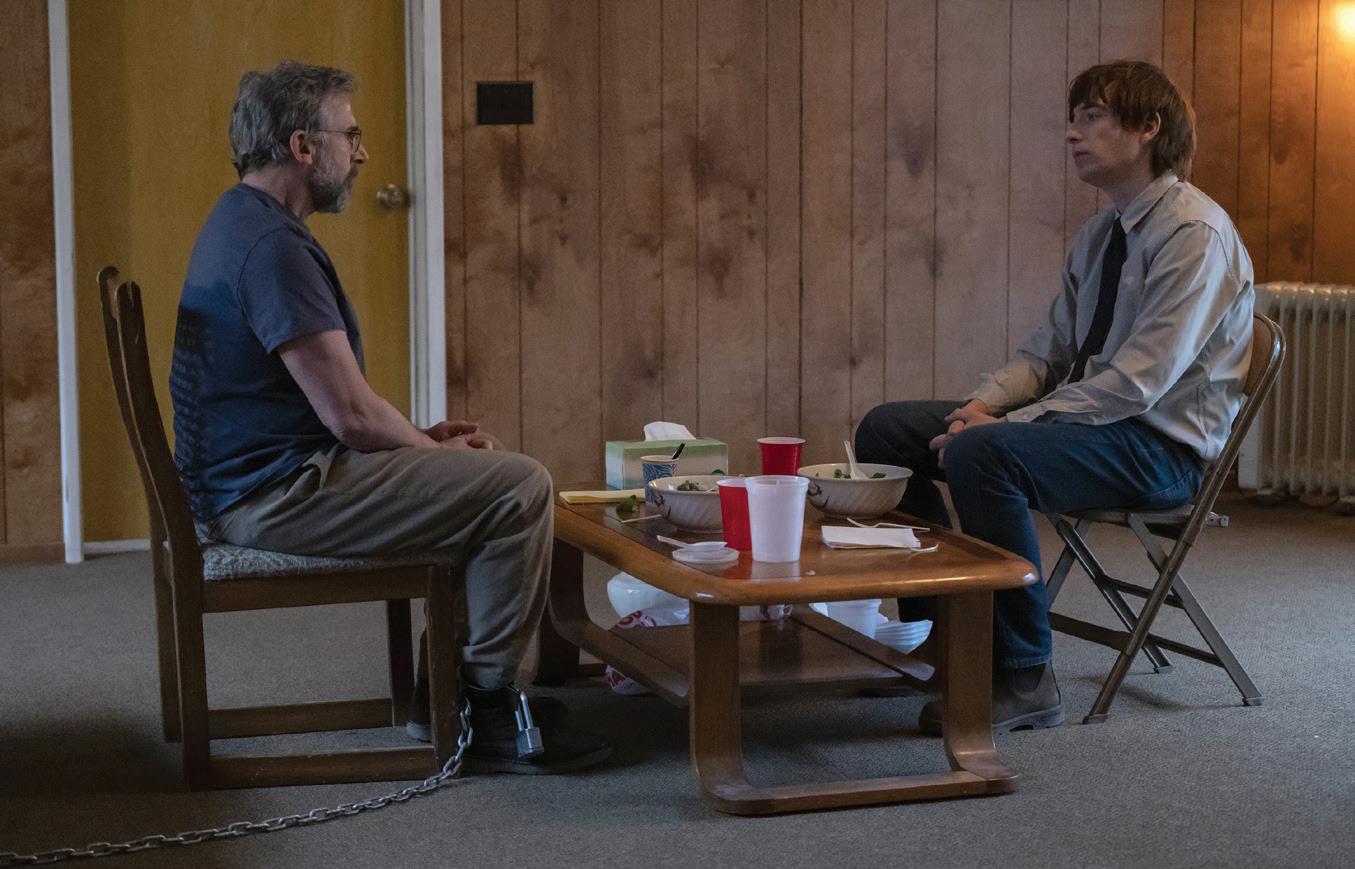
wanted to control something in a different sort of way. Control is a big part of his life. So obviously, the ending has a lot to do with that. I didn’t know what the ending was until maybe halfway through.
What was your initial reaction to the ending?
I loved it. I thought it was very emotional. I thought the letter that Alan wrote to his family was beautiful and showed his development as a patient. I thought it spoke so well of what is possible with therapy, despite the fact that it hadn’t worked out in quite the way that Sam wanted it to. But Alan said at the very beginning therapy cannot work like this if the patient has all of the power.
What was the journey like for you? It was wonderful. It felt incredibly freeing. Everybody
talks about collaboration, but so few people are genuinely collaborative. Even though everyone was masked all the time and being careful around each other and not having a lot of time together off set, it was truly collaborative. Those conversations were sometimes heated and sometimes not on the same page, but they always moved forward in the best possible way, with trust that everybody wanted to make something good. It was exhausting in the way that the best work is. Sometimes there is excess energy spent on shit that isn’t important, on conversations that aren’t important, on details that aren’t important. And it sucks the life out of a production, and it kills everyone involved. This was like the other end of the scale. His job could have been a nightmare because it’s heavy with long scenes and on one set, but it wasn’t. It was insanely brilliant. ★
SUZANNE TENNER/FX NETWORKS/COURTESY EVERETT COLLECTION/NETFLIX
From top: Domhnall Gleeson in The Patient; Steve Carell, left, with Gleeson.
Gleeson as the homicidal Sam Fortner.
48 DEADLINE.COM/ AWARDSLINE New TV | 2022
NIECY NASH
BY LYNETTE RICE
Niecy Nash has heard it all before—people acknowledging her good reviews in Dahmer—Monster: The Jeffrey Dahmer Story without actually seeing it because they didn’t want to stomach a Netflix limited series about a serial killer. Fortunately, Nash has a ready answer for those ambivalent fans. “I feel like it’s shining more of a light on the victims than it is on the killer,” says the actress, who plays Glenda Cleveland, a real-life neighbor of Dahmer who repeatedly tried to report his crimes to the police. “Normally, you view it from the lead character’s point of view, but you actually get to enter the story through the eyes of his neighbor.” Here, Nash—who currently stars on Reno: 911! and The Rookie: Feds—talks about the role that has changed her life.

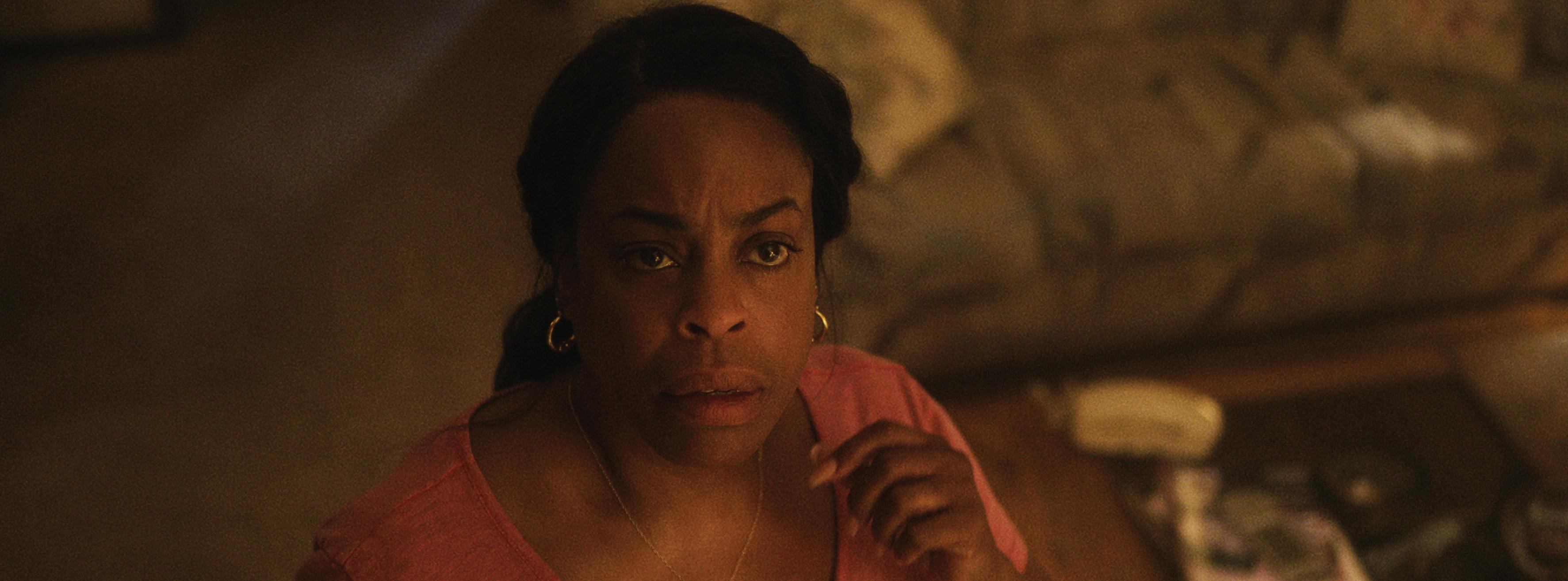
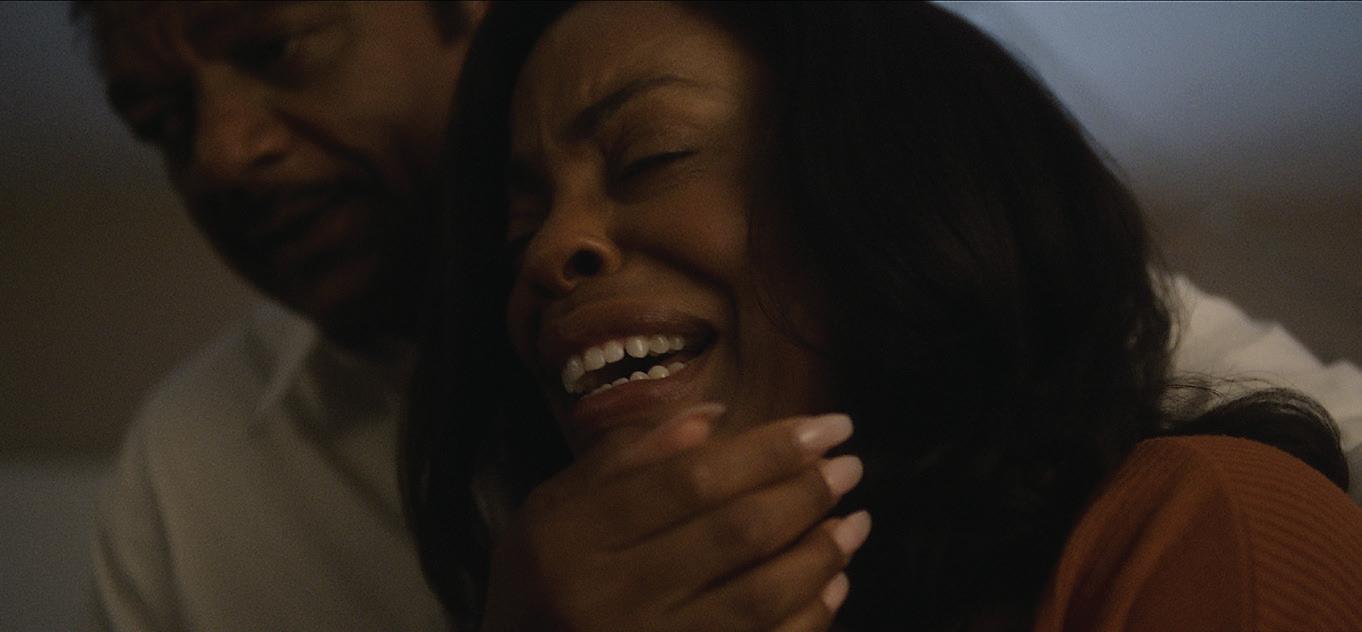
The attention you have received for Dahmer … does it compare to anything else you have done in your career?
Absolutely not. But I didn't take this particular job because I thought it was going to [perform well] in all of the countries and spur all of these online conversations. I had no idea that any of that was going to happen. This story is told through a different lens. You get to unpack the collateral damage in all of the families
who had loved ones who lost their lives to Dahmer. And even though Glenda Cleveland was not killed by him, she definitely was a victim.
Was there a lot of research available on Glenda before you started?
Well, Ryan Murphy is a master storyteller, and he makes sure that whatever is available, you have access to it. This character is a blend of a few different
women and people in
community
Dahmer. I did the best I could while understanding there’s a commonality that all people share who have been hurt. When your voice goes unheard, when your needs go unmet, when you are crying out and no one is listening, that’s a space that if we haven’t been in our life, at some point we will be.
How did you get the role?
Ryan called me. I said, “Hello.” He said, “Niecy NashBetts. I have something I want you to do.” I said, "OK." He said, “I wrote it with you in mind.” He said, “Did you hear me?" I said, "OK. I love you and I trust you.” And that was it.
There’s a gut-wrenching moment during the series when Glenda refers to one of Dahmer’s teenage victims as a baby. The cops had returned him to Dahmer’s apartment after he had tried to escape.
He was 13. I’m a mother. That's a baby to me! Maybe if Glenda Cleveland wasn’t the one doing the calling, or maybe if Jeffrey Dahmer had been anything other than white, or if maybe the police department had not been so homophobic, that boy would still be alive. ★
the
who had an experience with Jeffrey
MONSTER: THE JEFFREY DAHMER STORY
Left, Nash as Dahmer's neighbor Glenda Cleveland; Nash and Nigel Gibbs as Jesse Jackson.
DEADLINE.COM/ AWARDSLINE 49
Niecy Nash in Monster: The Jeffrey Dahmer Story
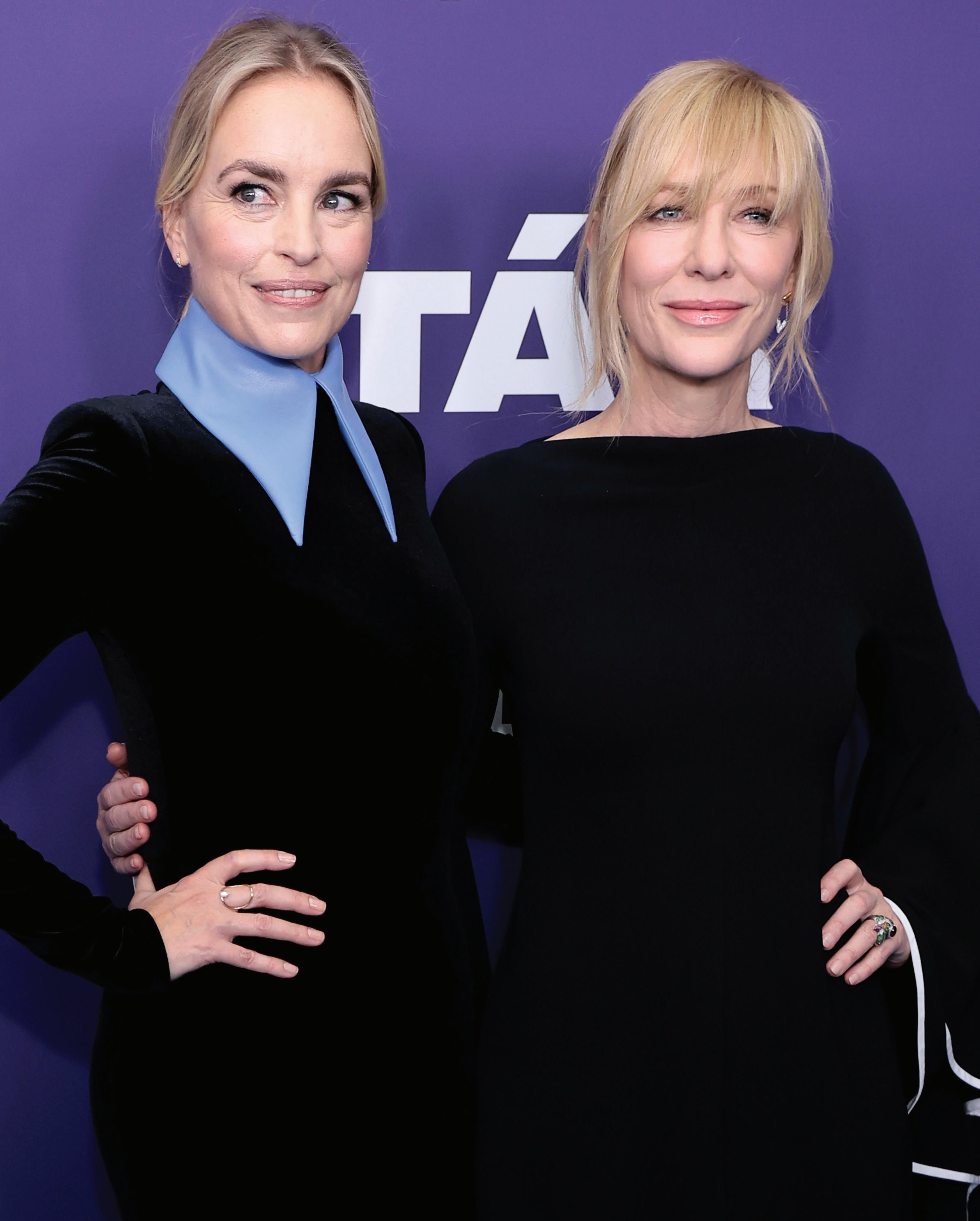
Nina Hoss & Cate Blanchett
14 No. DEADLINE.COM/AWARDSLINE 51
DIMITRIOS KAMBOURIS/GETTY IMAGES FOR FLC
In Todd Field’s Tár,
we meet Lydia Tár, a revered composer-conductor heading up the Berlin Philharmonic, played by Cate Blanchett. Nina Hoss, as Lydia’s wife Sharon, is concertmaster and first chair violin, and together they navigate the politics of their musical life while parenting their daughter Petra. But Lydia, who is at the top of her game, and readying for her career-pinnacle live recording, begins to self-destruct, forming an obsessive attachment to Olga, a young cellist, just as a troubling past entanglement comes to light. The target of criticism from her students and a New York Post article, Lydia’s staff and Olga desert her. Then Sharon takes flight with Petra, and Lydia finally slides into the demise of both her personal and professional life. In conversation with Antonia Blyth, Blanchett and Hoss discuss the absence of objective truth, how change is built on open-hearted discussion, and the emergence of art from the raw, painful edge of experience.
really organic. Our frames of reference, the types of work that we had gravitated towards up until now, had been eclectic and varied and wide-ranging. And I think the thing that I’ve always loved about your work is you’ve got such an amazing sense of ensemble. You, in a deep way, understand what it means to be part of an ensemble and that even the extraordinary work you’ve done leading films, like Barbara and all the work you’ve done with Christian Petzold, which I’ve so deeply admired, you’re very clear about your function in the story, and I think that’s the same with your work on stage. And so that’s something I really gravitated toward. And over the course of my career too, it’s like it’s not the size of the role, it’s the being part of the conversation. And that’s why it’s so great to create a dialogue with you, it’s because you interrogate a story in a really fascinating way that makes me and everyone around you ask really fascinating questions.
How did you build the dynamic between Lydia and Sharon, and how much did Todd discuss it with you versus leaving you to work that out?
BLANCHETT: Maybe it’s understanding the deeper time, the rehearsal process that one goes through in the theater, that you have weeks and then the length of the run of the performance to continue to layer the dynamics between characters. Not just to work out how you’re going to deliver your performance or who your character is, but to layer the textures between people. And that’s what I love talking to you about, Nina.
You first met at a hotel when you were both by chance in Hungary working on separate projects. Did you talk about Tár then?
CATE BLANCHETT: It was just pure chance, wasn’t it? A little bit like the way this project came together. I sort of felt like we’d already met, but I don’t know that we had. Maybe it’s just because we had so many people in common and so many experiences in common, so it sort of felt like it was fated somehow.
NINA HOSS: Yeah, I had the same feeling, like we knew each other. I must admit, I did have this one moment, I told Cate already, that I thought, ‘I mean, does she know what I look like?’ I had

this moment. But then once that was over and we hugged each other, and it felt like we knew each other already. And I must say, that was like the process. It stayed like that. I had the feeling we feed off the same pot, so to speak. From the interest in theater, coming from theater, the interest in art of any sort, of also being interested in venturing out and working with different people and just expanding yourself in the way of how you want to collaborate. And I just felt it’s such a natural flow with each other that I never felt alien... It just felt like, “Yeah, let’s do good. Let’s find everything we can.” I don’t know, what do you think?
BLANCHETT: Yeah, I think so. I think it just felt
In answer to your question, did we start talking about the characters straight away? We sort of did, which enabled us to talk about life and the challenges that we were going through. I mean, that’s the fantastic thing about this story that Todd has woven and the film that he’s created out of it, is that it asks so many enormous questions that the characters are grappling with, but that we’re all grappling with, that we don’t necessarily have answers to. And I think that meant that we continued to interrogate and ask questions about their relationship and who they were, who they thought they were. How had their relationship evolved? How estranged were they from themselves and from each other? And so, it was a continual process of questioning, wasn’t it? Todd obviously facilitated and set the ball rolling simply by writing the script.
HOSS: Yeah, I think by us both having read the story before we met by accident, and then just having the chance to speak in private, we somehow, without really digging into the characters straight away, we talked around it. I told you a lot about Germany and sometimes my struggles with the hierarchical systems and the patriarchal systems that we all live in. But Germany has a very specific thing that I can tell you, from this culture, where this story is set. And then on top of it, the classical music world, which is on its own already a very hierarchical
52 DEADLINE.COM/AWARDSLINE
GETTY IMAGES/FOCUS FEATURES/COURTESY EVERETT COLLECTION
Nina Hoss and Cate Blanchett in Tár
system or world. So, we talked about that.
But to find this dynamic between each other, I always felt, Cate was so... The moment she stepped on this podium, in a way, I was able, even during the rehearsals with the orchestra—and that’s how we started the whole film—I saw the whole character in front of me. I saw the beginning, the middle and the end. And I could just watch this Lydia in front of me, and see, what does that evoke in Sharon? Having had all the conversations in Berlin beforehand. So, us meeting in Hungary, then having the rehearsals in Berlin, and Todd joined, and we really dug deep into also the background stories. What is the world all of these characters step out from? And what happened when they met? Why do they meet? Why are they fascinated by each other?
We were terrified, I think, Cate and myself, that we would start [the shoot] with the orchestra. And…
BLANCHETT: …And there we did.
HOSS: But at the end of the day, it was a blessing, I think, because we knew what the center was for both of our characters. It’s the work also, and the passion for the work. And in a way, it’s not so unlike our private selves. I think, I mean, for me, my job is my life also. And I felt the same while being around Cate. That it’s not just something we just do, we are just very passionate about it. We want to defend the characters, the story, the director who has a vision, the people, the ensemble. You’re just very much into it and you are willing to go quite far to get what you look for. And that’s why it felt very natural exploring this relationship with Cate.

BLANCHETT: And, I think too, because of the way that we met. It was in a moment of estrangement and crisis, and we were both sort of dislocated from our reality, and Todd wasn’t there. It was just happenstance, chance, that we were able to table our fears and concerns and ask, I think as the audience does, all the quote-unquote dumb questions. We realized very quickly that that’s not what the film’s about. And so, we were able to put that aside and go much deeper into it, I think.
It’s interesting you talk about the music, Nina,
because I think that was for both of us an enormous, “Ah.” It was like it took our breath away how vast the challenge was. Even though it’s not a film about classical music, it’s so rooted in that world, and there’s a deep authenticity that Todd was writing about, where no one was able to hide either from the camera, or from each other, or certainly not from the audience and not from themselves. So, it was very exposing, and it was great to start with that layer of questioning immediately, I think. I don’t know about you, Nina, but I was so knocked off-center and startled by the questions, the big questions that the screenplay was grappling with. It was great to start with the minutiae and the seismic nature of it. It meant that the questions that we’re not only asking of the script, but the way that we were talking to one another, felt much more open, I think, than perhaps it would’ve been otherwise.
Of course, these characters, their life is music, it’s making sound. And they had been living in a silent world for almost two years, unable to do the thing that they love. And everyone had been in that place, and we were in that place. We were trying to make work and film our different projects in Budapest, but without any of the joy, or the structures, or the reason why we got into this business in the first place: the community
and the connection; your relationship with all the people that you are working with. People were estranged from one another. So, I mean, you were an absolute life raft for me, Nina.
It’s really interesting that Lydia says, “You have to sublimate your ego,” but, ironically, it’s Sharon who has actually done that, and Lydia is the one that has, to me, not sublimated her ego. It shows how we project onto others the things we know are problematic in ourselves. And Lydia is almost a prisoner of her desires, of her ego and her status.
BLANCHETT: But is she doing it to herself? Sharon as the concertmaster is actually one of the most powerful people in the room. Sharon’s a kingmaker, or a queenmaker in this way, in many respects. And also, that we always think about power as being the most obvious outward expression of that power, the person on the metaphorical podium. But it’s not necessarily the case. I mean, Lydia’s life is run by the board, it’s supported by Sharon who asks the right questions and has the conversations that make things possible. So, it’s a very symbiotic relationship. And I think that’s what I love about the relationship as a metaphor for how power actually functions and

who benefits from power. It’s very, very subtle. And to that thing that you said, people often give advice to other people, the advice that they need to take themselves, you know?
There’s also, where does this fit into a #MeToo narrative? The idea of what it means to be a predator. What do we expect that to look like? How do we expect it to appear to us?
BLANCHETT: I don’t know. I feel like it’s not... Once that word is said, it can’t be unsaid. Whereas, I think there’s a way of looking at this film where she’s also... You’re dealing with someone who has come to the end of a teaching cycle, who seems to be in an incredible position of power, that is at a high point in her career. And you realize that
DEADLINE.COM/ AWARDSLINE 53
From left: Hoss, Noémie Merlant, Todd Field, Sophie Kauer and Blanchett in Venice.
Blanchett as Lydia Tár.
paradise, the paradise that she’s found herself in, the position of power that she’s found herself in, it’s not this unassailable, unexamined ivory tower that she thought it would be when she saw the men all around her achieving those positions. It’s not the place she thought it would be, and it’s not the place her partner thought it would be either.
So, in a way, I wonder... There’s a way of looking at the film—and I’m not saying this is the way I look at the film, I think there’s many angles on it—that she herself wants to break it apart. There’s something willful in her own demise and destruction. Because in the end, she’s a creative force as much as she is a terribly flawed human being. That she knows that the only way, when you surmount the peak, is down. In order to keep working, the only way is down. And that is to be the architect of your own demise. And because she’s coming to the end of something, she’s about to turn 50. What more is there to quote-unquote, achieve.
She sees this young cellist at the beginning of her career. It’s always a man with a woman when you talk about a muse. But what actually happens between them? I think what is interesting about what Todd has written, is that no one ever knows, but everyone talks about what happens [between them]. Do you know what I mean? And so, it’s left to the audience to decide. In a way, it’s what happens when a rumor starts on the internet. What actually happened? But we go to the end point before we’ve examined what those possibilities could have been. Because, can you tell me what happened?
I have no idea. You’re right.
BLANCHETT: But yet, we call her a predator because then that enables us to sit in a really comfortable dynamic and say who are the goodies and who are the baddies in the story. And what Todd has written is that no one is entirely guilty, and no one is entirely innocent.
Yes, we need to make things black-and-white all the time. Why do you think we do that?
BLANCHETT: Because I think we’re encouraged to have an opinion. We’re encouraged to say, “This is what we think,” to have a definitive place. And I think that has happened in times that require really nuanced discussions, because there are seismic changes that are happening, that must happen, to changes in the way that we operate. The societies, the fragile democracies that we live in, we have to examine them. We must tear them apart in order to put them back together in a much more inclusive and respectful way. But it doesn’t help us, I think, in these difficult, and challenging, and exposing times to have either-or narratives.
What do you think Nina?
HOSS: What stuck with me, what you said, what I’m still thinking of, is when you say that Lydia is not the one who obliterates her ego. And I think she is the one who understands that concept really well, and that’s what is so fascinating to someone like Sharon. Because that is what a real creative person, an artist, does. What Cate spoke about now, what Tár may be, because we don’t want to interpret anything, but maybe she pushes things towards that moment that her life might fall apart, because that’s where art happens. Even in her life, she creates a room that opens up possibilities again, even if you have to start at the bottom again. But it’s something where art happens in these moments where you put yourself at risk, where you forget what you know, where you are out there to risk and to discover.
She’s the head of an institution that asks things from her that are pretty rigid. And then it’s a question, whose advice do you listen to? And then maybe you make the wrong decision because you think you owe someone something. That’s also, for me, this film. Sharon is part of this institution more than Tár. Tár is much more of a guest. But Sharon sits in this institution, she made her way through the German classical music world, she knows it
inside out. She knows all the politics and she can make it work. And the drama for this relationship is, I think, that Lydia, at a certain point, thinks Sharon can’t do anything for her, and she doesn’t let her in. It might have not been that kind of a scandal because Sharon’s the better politician. But then [Tár’s] ego takes over. And that, for me, was this moment where Sharon says, “Enough. You won’t ever listen to me. I have to protect our family and my career because your ego is now up there, not for a piece of work, not for art, not for a symphony, but for yourself. You forget about what I can do for you. It’s a team. And maybe you want to destroy it, for whatever reason, but I have to take responsibility in this moment.”
What do you hope people might take away from seeing this film? And what’s some meaninful feedback you’ve received?
BLANCHETT: The most wonderful compliment that I’ve received is that people who have thought, ‘Oh, I don’t know anything about this world,’ have come out, not kicking and screaming, but they became curious. They want to go straight back in and see it again. And the second time that they’ve seen it, they’ve had a completely different reaction to it. So, I think it’s very startling and confronting, the film, in ways that are quite unexpected. I hope that they will ask more questions than they will answer, because I think that that’s what the film encourages. I think open-hearted conversation is what we so desperately need. And I never want to tell an audience what to think. I don’t think the film patronizes an audience, it’s not a message film.

For me, the message is what you said earlier, which is, “There is no definite here, there’s no black-and-white,” and that’s important.
HOSS: It’s like a Chekhov play in a way. He asked questions. There is no judgment per se. You’re being thrown to this side, to the other side. You have to rethink your own judgments. You thought you think a certain way, and then all of a sudden... So, you are being challenged in the best possible way. And like Cate said, when I listen to what people talk about when they leave the film, firstly, there’s the reaction that they want to see it again because they think they missed something. I can say it from my own experience also. And you watch it maybe three times, and every time I come out and I have another aspect, I see Lydia in a different way, I see the world we’re in in a different way. I take something else out of it. And so, I think if you watch this film, you’re being, in the most beautiful way, challenged in your own point of view and your judgements, but also you can dive into this world, which is also incredibly fascinating.
And mainly what Cate said, it’s that I hope it starts a conversation, and I think it does. And that is, I think, what we all try to achieve.
BLANCHETT: The truth’s made up of many perspectives. ★
ARTURO HOLMES/GETTY IMAGES
54 DEADLINE.COM/AWARDSLINE
Hoss and Blanchett at the New York Film Festival.

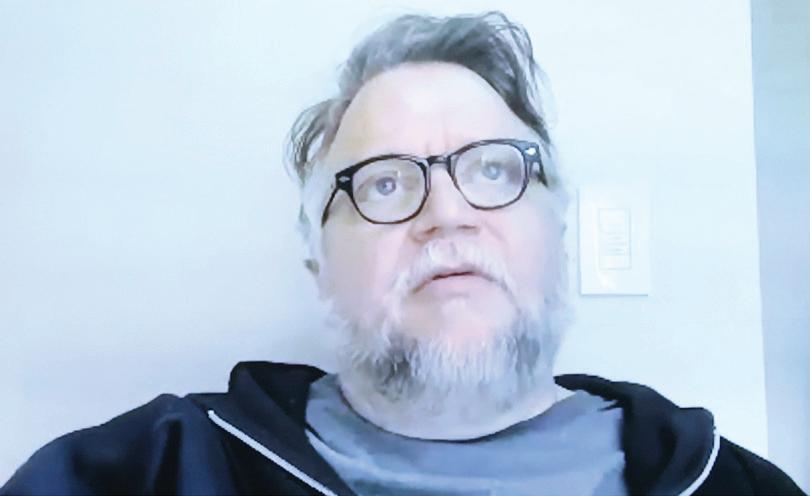



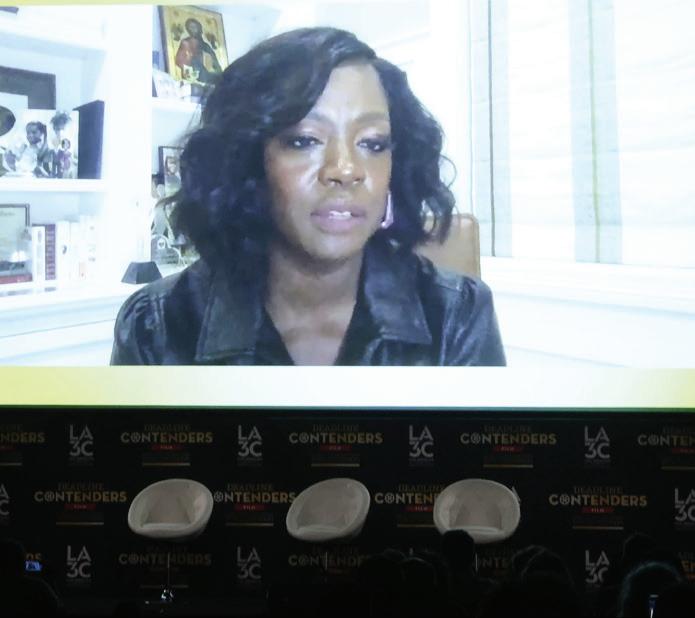


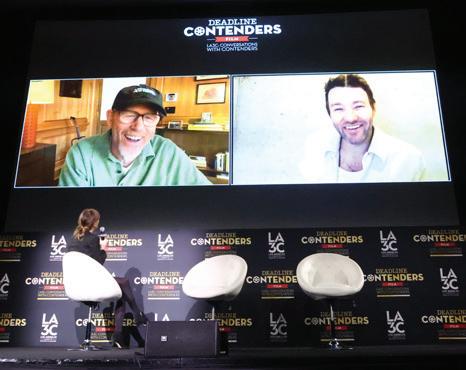


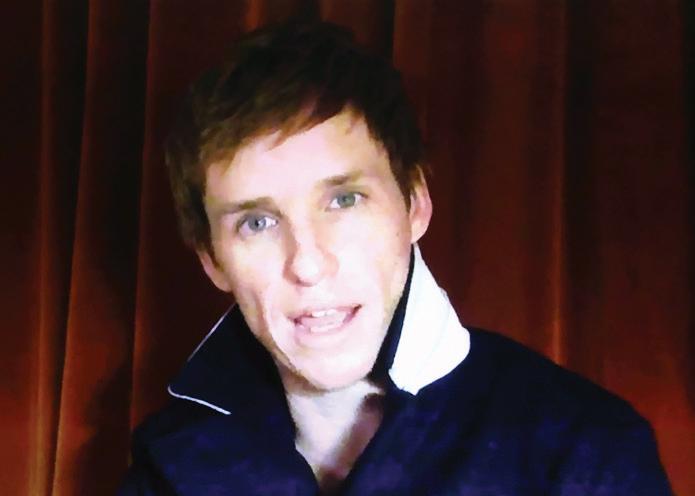
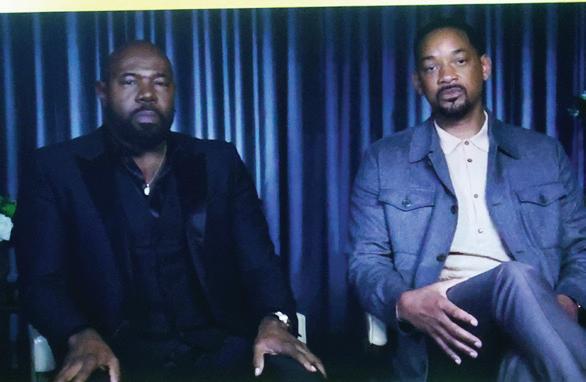

1. Joseph Kosinski 2. Guillermo del Toro 3. Tom Hanks 56 DEADLINE.COM/AWARDSLINE 7. Kerry Condon 8. Jerry Bruckheimer 9. Viola Davis 10. Eddie Redmayne 11. Ron Howard and Joel Edgerton 12. Scott Cooper 13. Antoine Fuqua and Will Smith DEADLINE VIA GETTY IMAGES LA3C: Conversations With Contenders December 10, 2022 JW Marriott Los Angeles L.A. LIVE 2 1 3 4 5 8 9 7 5. Ryan Coogler 6. Chinonye Chukwu 13 11 10 6 12
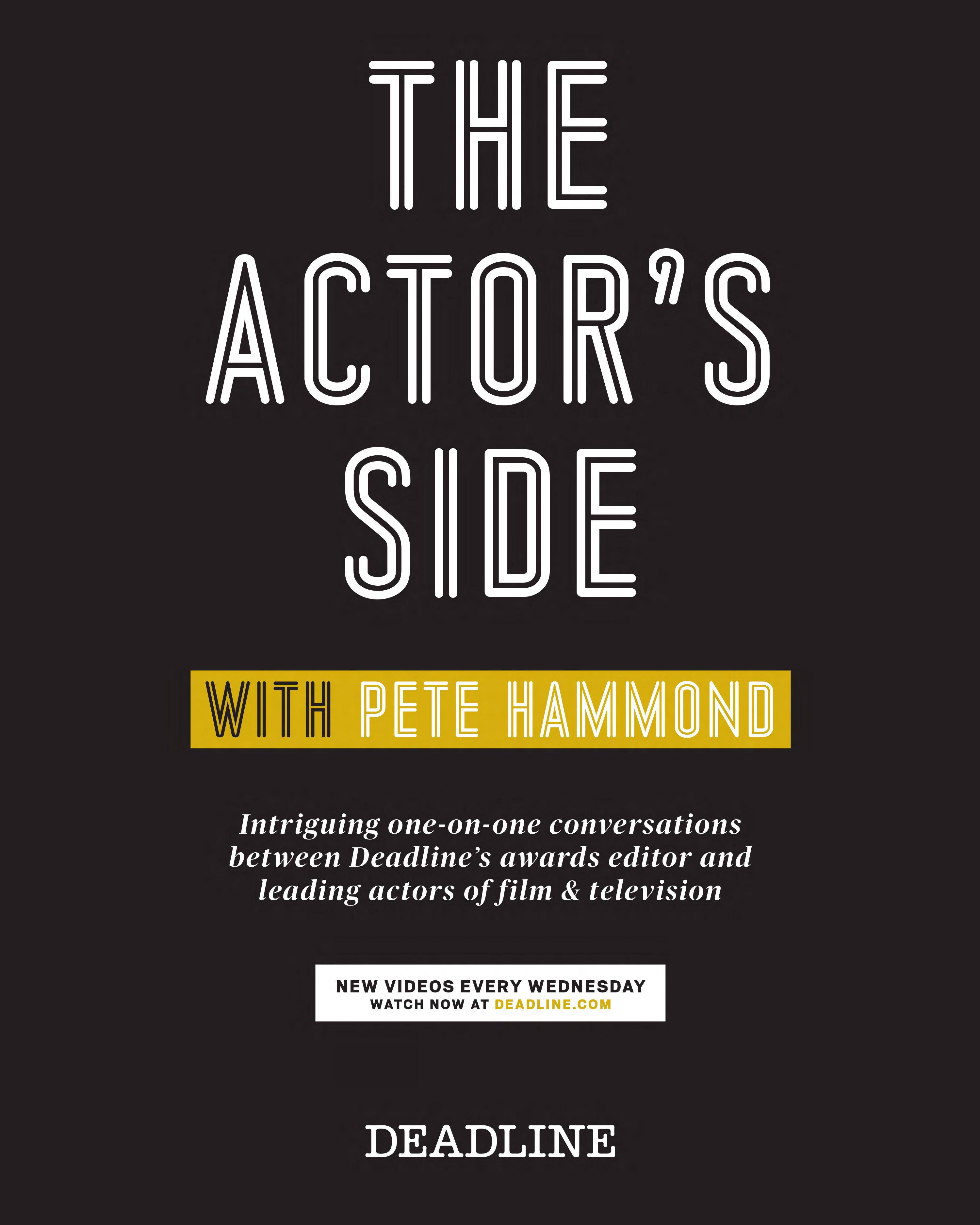






 By Damon Wise
By Damon Wise


























 BAZ LUHRMANN PHOTOGRAPHED EXCLUSIVELY FOR DEADLINE BY JOSH TELLES
BAZ LUHRMANN PHOTOGRAPHED EXCLUSIVELY FOR DEADLINE BY JOSH TELLES















 BY DESTINY JACKSON
BY DESTINY JACKSON



 BY DAMON WISE
BY DAMON WISE



 BY MATT CAREY
BY MATT CAREY














































